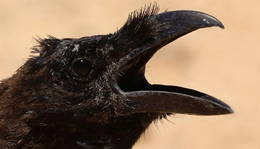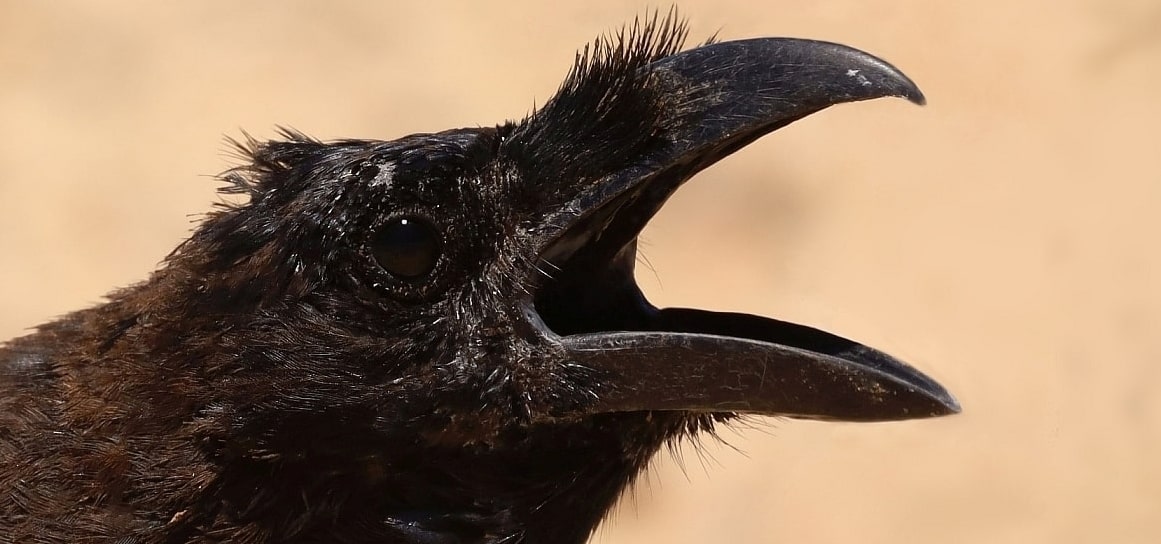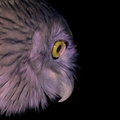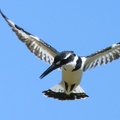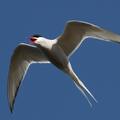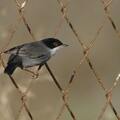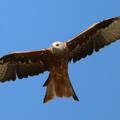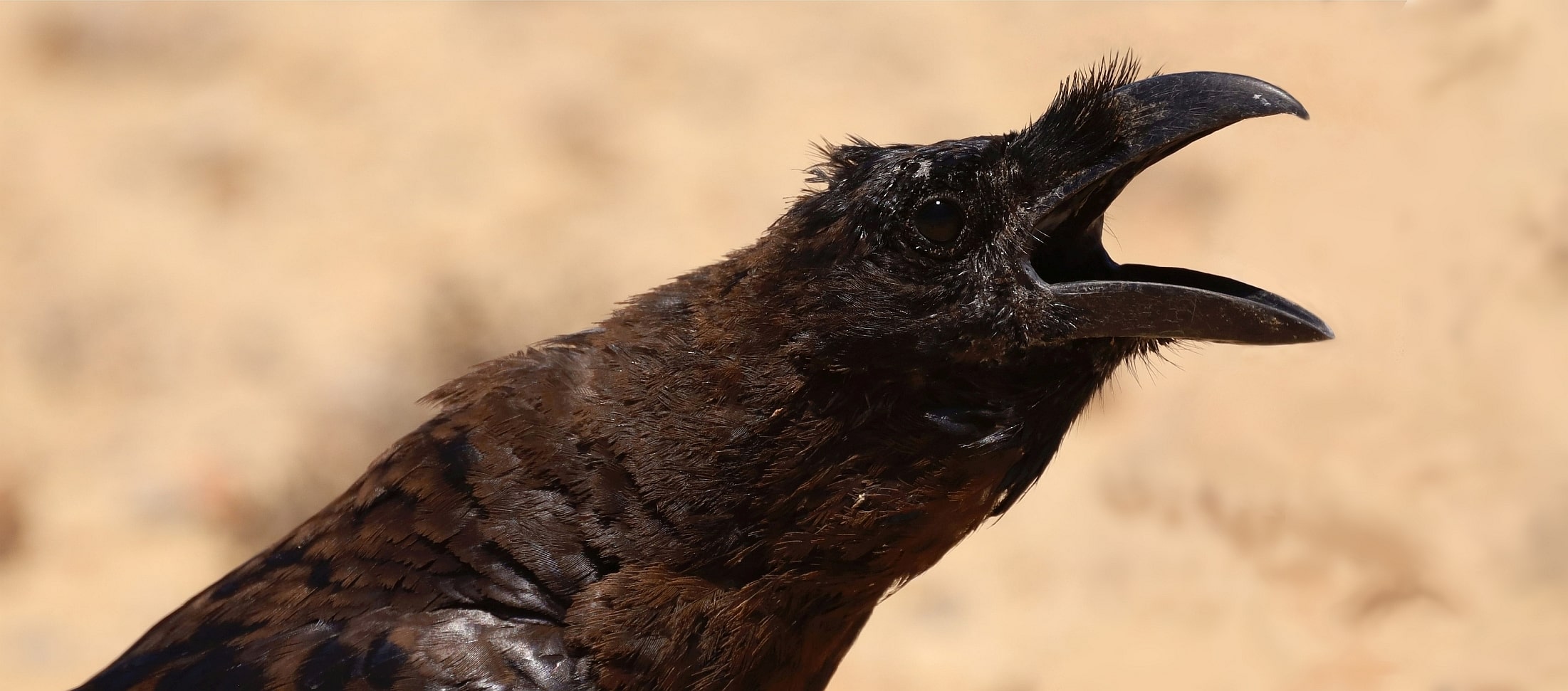
Corvus corax jordansi -  Raven
Raven 
![]() cuervo grande
cuervo grande  holló
holló
(Fuerteventura, Istmo de La Pared, hiking trail GR 131)
● ssp jordansi: restricted to the eastern islands of the Canaries and differs from other regional subspecies in its brown colorations
➤ plumage details in the video (preening in desert wind), set quality to '720p ➤
● some sources refer this distinct taxon as a possible result of introgressive hybridization of the species Brown-necked Raven (Corvus ruficollis) from North-Africa: Rösner 2012
● I saw these brown birds mostly in pairs in the semi-deserts of La Pared, Fuerteventura
● ssp canariensis (western islands' subspecies) heard from afar in a few times in the high altitude forests of Las Lajas and Los Silos, but none were seen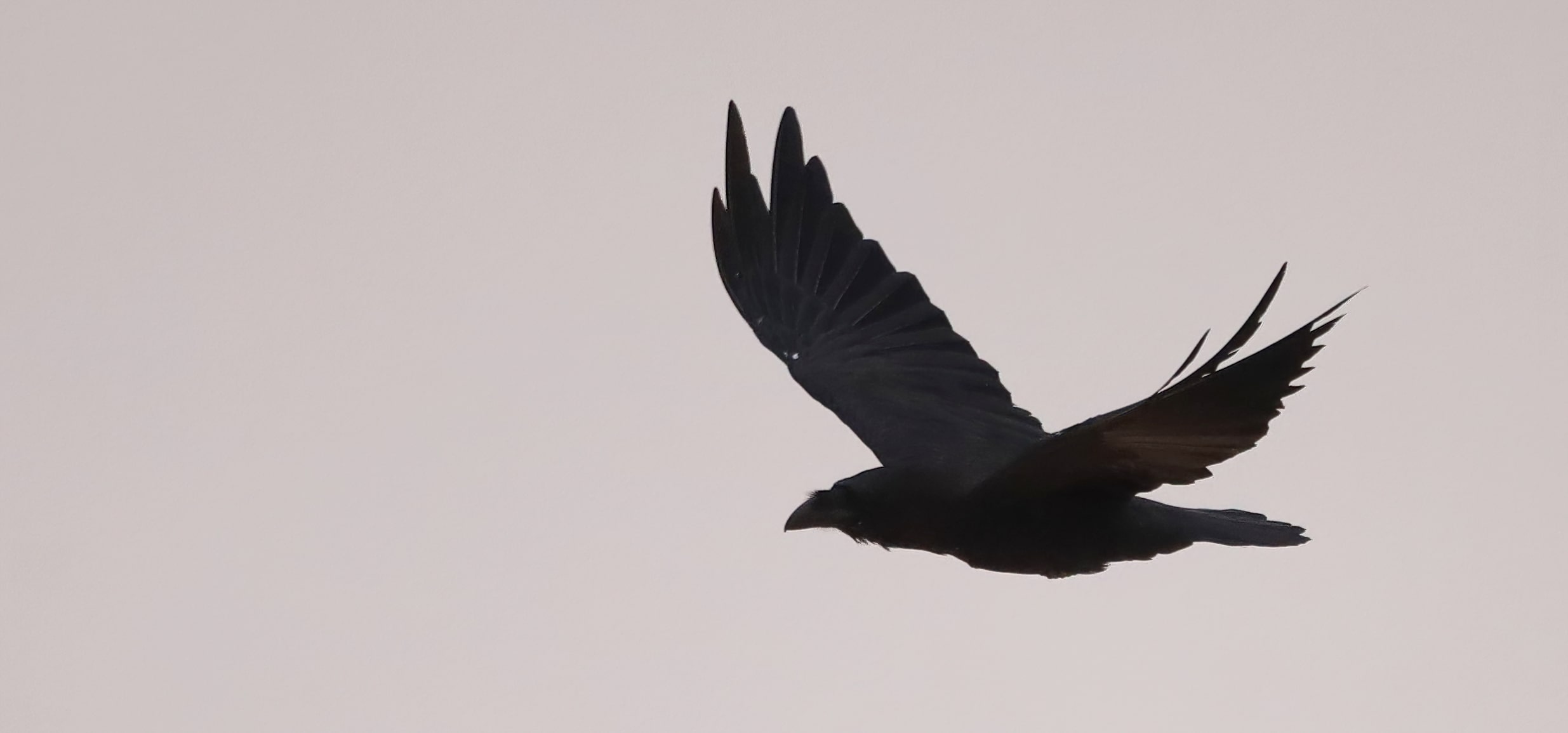
● blackish variation (ssp tingitanus) is also present in the eastern islands (small image) ➤
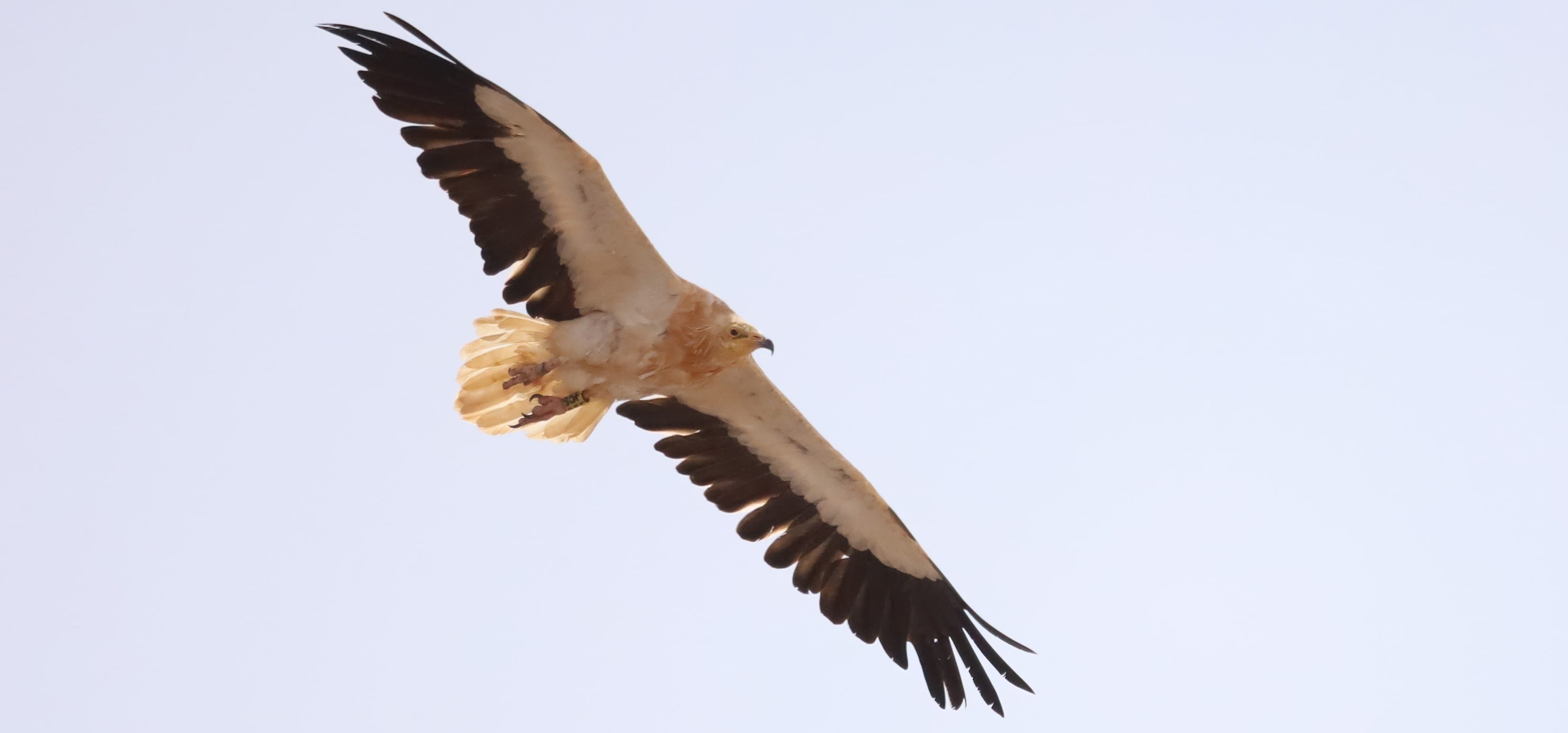
Neophron percnopterus majorensis -  Canarian Egyptian Vulture
Canarian Egyptian Vulture 
![]() guirre
guirre  dögkeselyű
dögkeselyű
(Fuerteventura, Barranco de Río Cabras, landfill)
● the famous 'el guirre'
● ssp majorensis: somewhat bigger due to island gigantism, plumage has a more orange hue, endemic and non-migratory
● +0,5 kg in weight (=2,5 kg) and +20 cm wingspan (=160-180 cm)
● orange tinge is a result of high level of iron accumulation from an environment rich in iron compounds, not a genetic feature
● thanks to LIFE projects population exceeded 400 in Fuerteventura and Lanzarote in 2021
● I was lucky enough to see 3 of them at Barranco de Río Cabras (near Puerto del Rosario), 2 from very far away at the landfill sitting among gulls waiting for new garbage food brought by trucks. Another one flew out from the dump area and in its way made a circle above me before he/she circled up to the sky
● the bird has a colour-ring on its left tarsus: yellow ring with the characters 95F written on it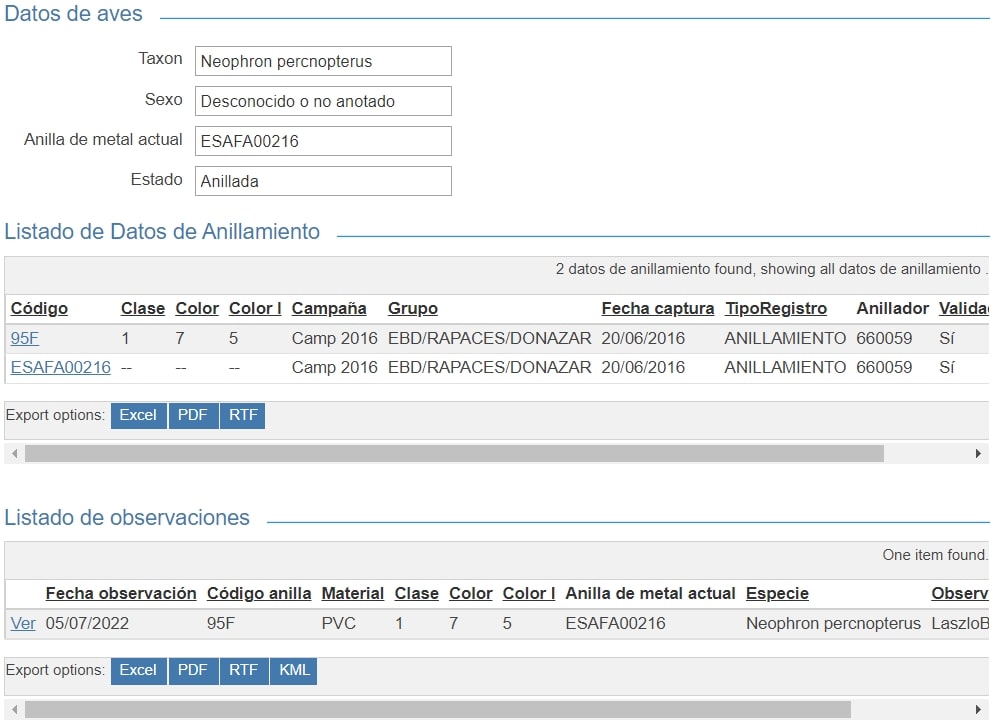
● thanks to the help of the online service of the ASA got some information about the bird:
- colour-ring code 95F is valid, right leg tarsus metal ring code is: ESAFA00216
- ringed as a pullus in 2016 in Barranco de la Torre, near Salinas (ca. 13 km to the South)
- the bird is 6 years old, sex or nickname is unknown, but he/she is a young mature now
- unfortunately, neither tracking nor other observation data is available

Buteo buteo insularum 'lanzarotae' -  Common Buzzard
Common Buzzard 
![]() busardo ratonero
busardo ratonero  egerészölyv
egerészölyv
(Fuerteventura, Barranco de Río Cabras)
● 'lanzarotae': not ranked as an independent subspecies taxon, but an endemic variation of Common Buzzard in Eastern Canaries
● very similar in its apperance to the continental species Long-legged Buzzard (Buteo rufinus), particularly to its African subspecies Buteo rufinus cirtensis, but the not so pale head excludes this other species in differentiation
● currently all resident Common Buzzards on the Canary Islands are officially ssp insularum but the eastern islands' 'lanzarotae' birds are obviously different in many ways
● high similarity between 'lanzarotae' and Buteo rufinus hypothesize an ongoing or a historical hybridization event, just like as in the case of 'Gibraltar Buzzard' which is a knwon hybrid lineage of the two buzzard species
● description of the 'lanzarotae' and the theory of hybridization: Rodriguez 2017 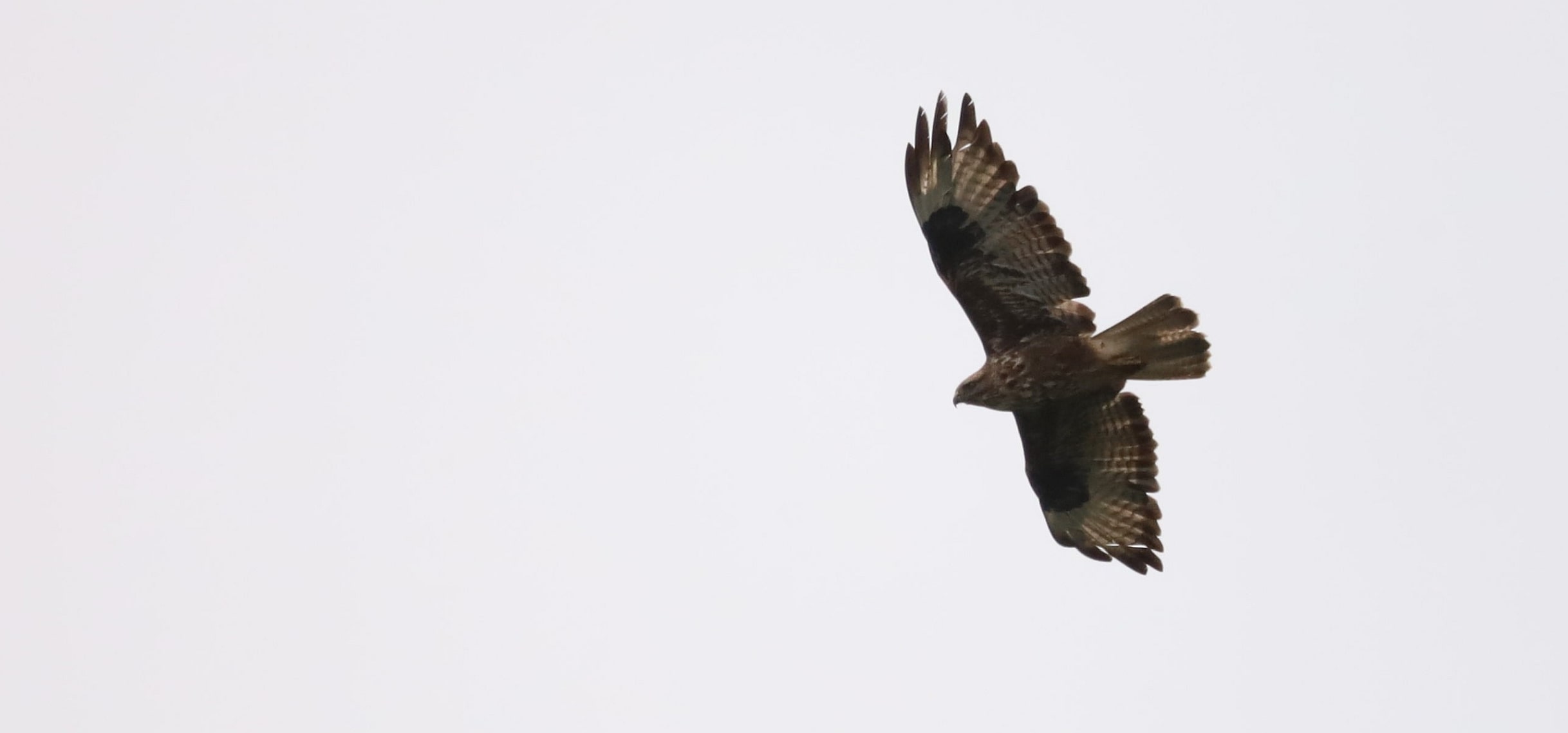
● Buteo buteo insularum: the accepted subspecies which is endemic to Western Canary Islands, resembles to continental nominate (small image (taken in Erjos, Tenerife)) ➤
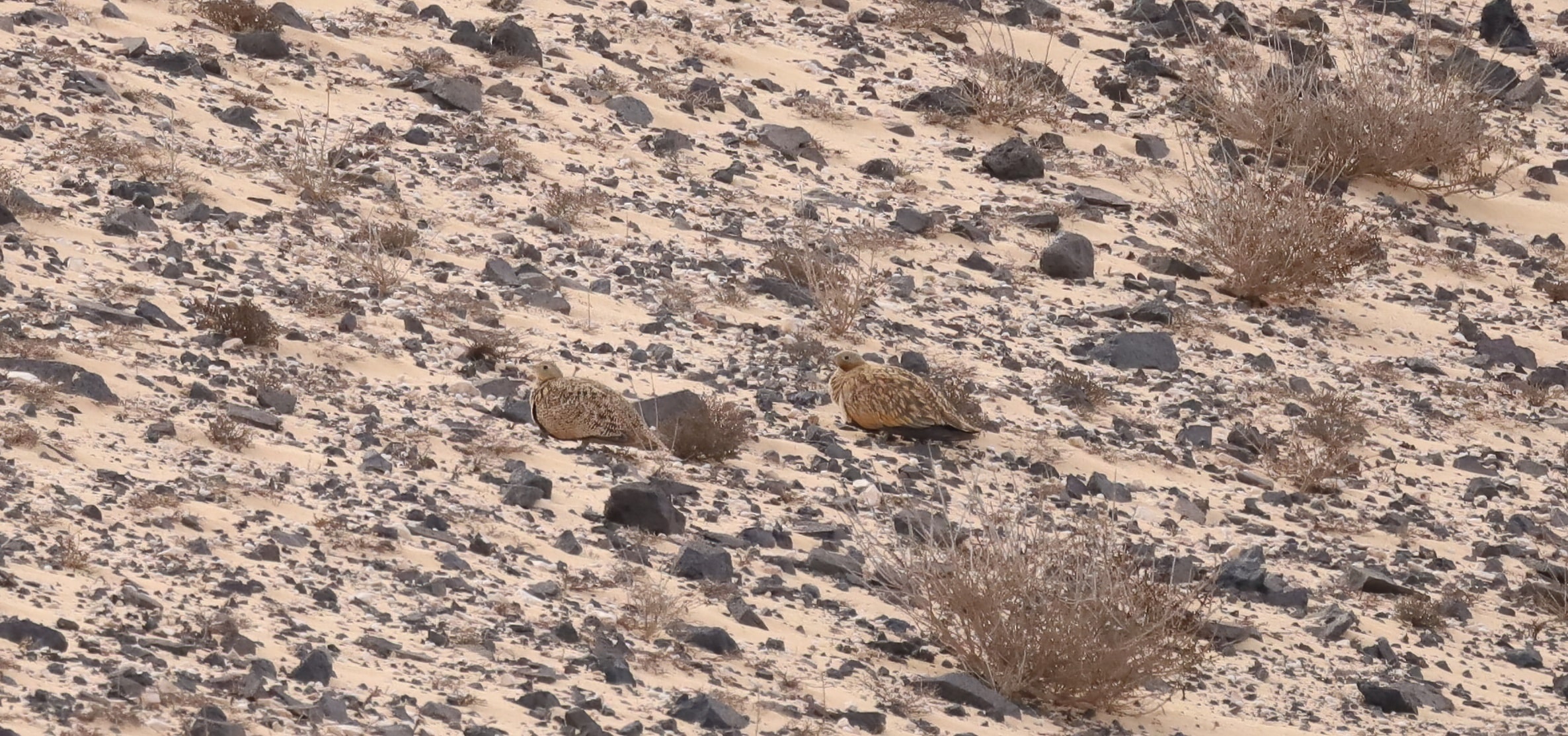
Pterocles orientalis -  Black-bellied Sandgrouse
Black-bellied Sandgrouse 
![]() ganga ortega
ganga ortega  feketehasú pusztaityúk
feketehasú pusztaityúk
(Fuerteventura, Istmo de La Pared, near the windfarm)
● female on the left, male on the right (trying to be invisible and motionless in a hillside)
● found about a dozen in Istmo de La Pared, and one pair in Llanos de Tindaya
● never seen a solitary bird, always at least in pairs
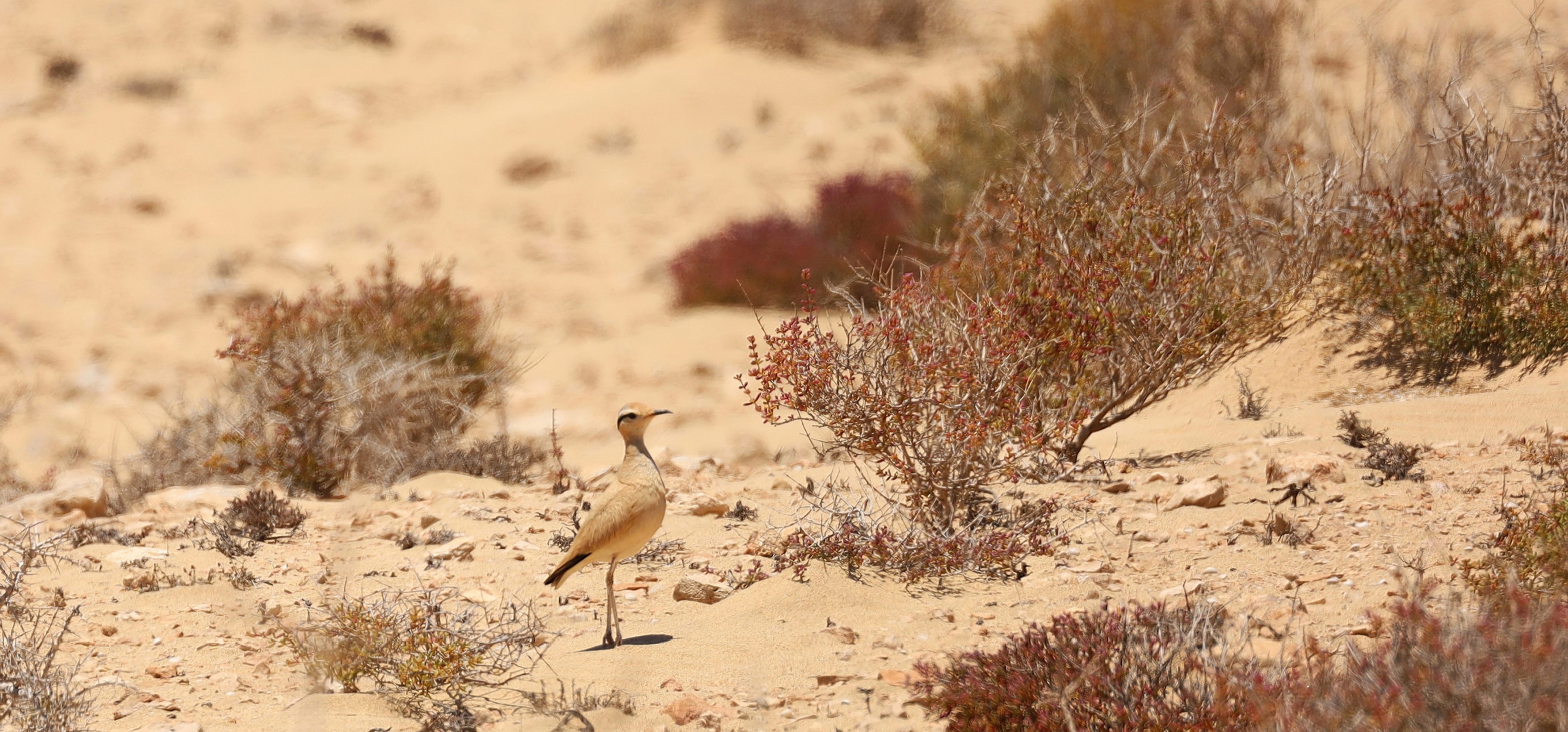
Cursorius cursor bannermani -  Cream-coloured Courser
Cream-coloured Courser 
![]() corredor sahariano
corredor sahariano  futómadár
futómadár
(Fuerteventura, Istmo de La Pared, hiking trail GR 131)
● ssp bannermani: endemic subspecies to the Canaries with minimal morphological differences compared to the nominate
● seen in little groups in the semi-desert scrublands of Istmo de La Pared
● plant: Suaeda vera - Shrubby sea-blite (cserjés sóballa)
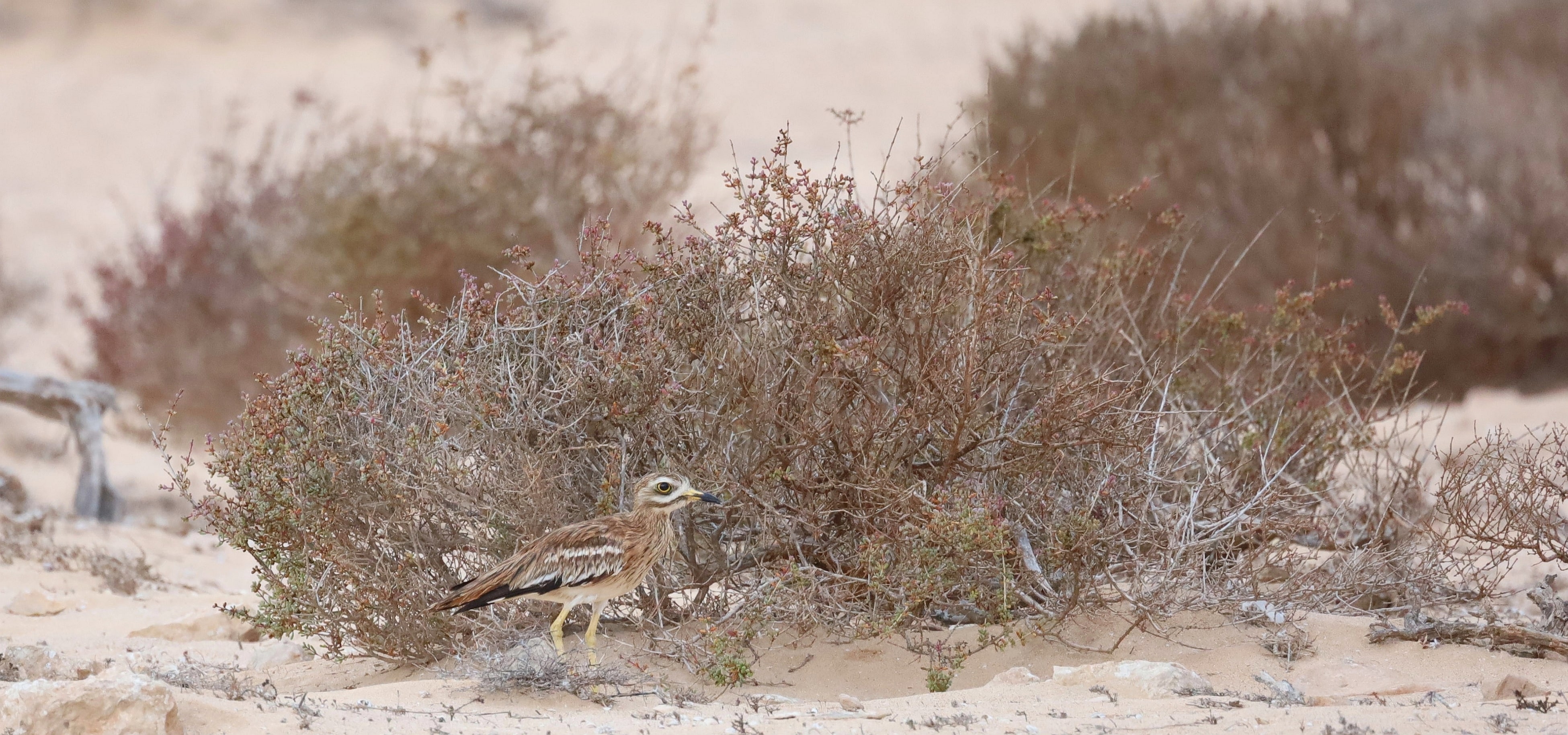
Burhinus oedicnemus insularum -  Stone Curlew
Stone Curlew 
![]() alcaraván común
alcaraván común  ugartyúk
ugartyúk
(Fuerteventura, Istmo de La Pared, near the entrance of NP)
● ssp insularum: smaller in size, lighter colors with a slight rusty tint, resident and endemic to the Eastern Canaries
● plant: Suaeda vera - Shrubby sea-blite (cserjés sóballa)
● lives in small groups in semi-desert habitats (see footprints on the left in small image) ➤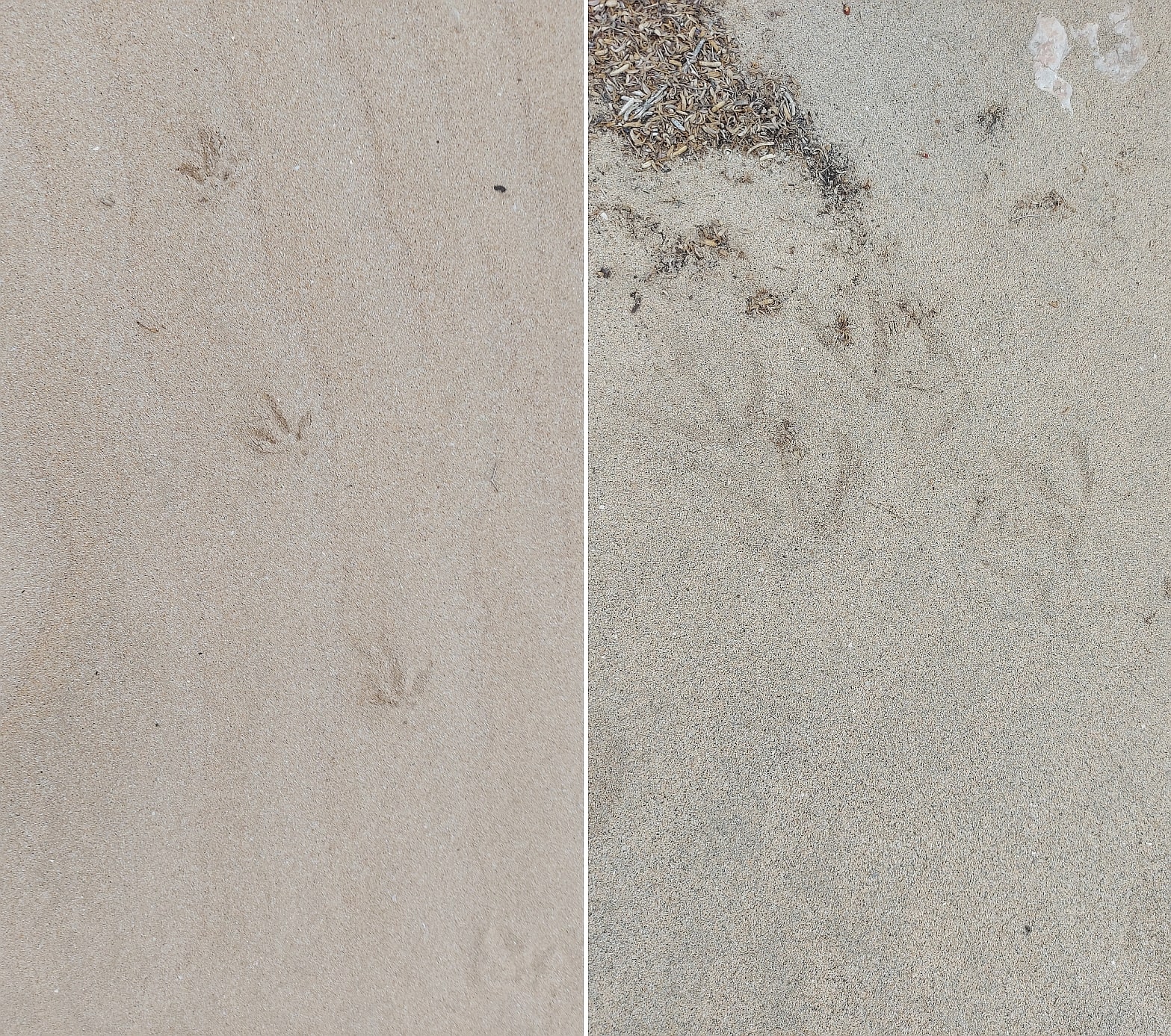
● I have not met the western islands' curlew subspecies (B.o.distictus) in Tenerife
● unfortunately, I couldn't find the most sought after bird of the islands, the Houbara Bustard (Chlamydotis undulata fuerteventurae), only a few blurred footprints in the sand revealed its hidden presence in Istmo de La Pared, found at an eBird pointer called 'Jandia PNat--La Pared' (see large footprints on the right) ➤
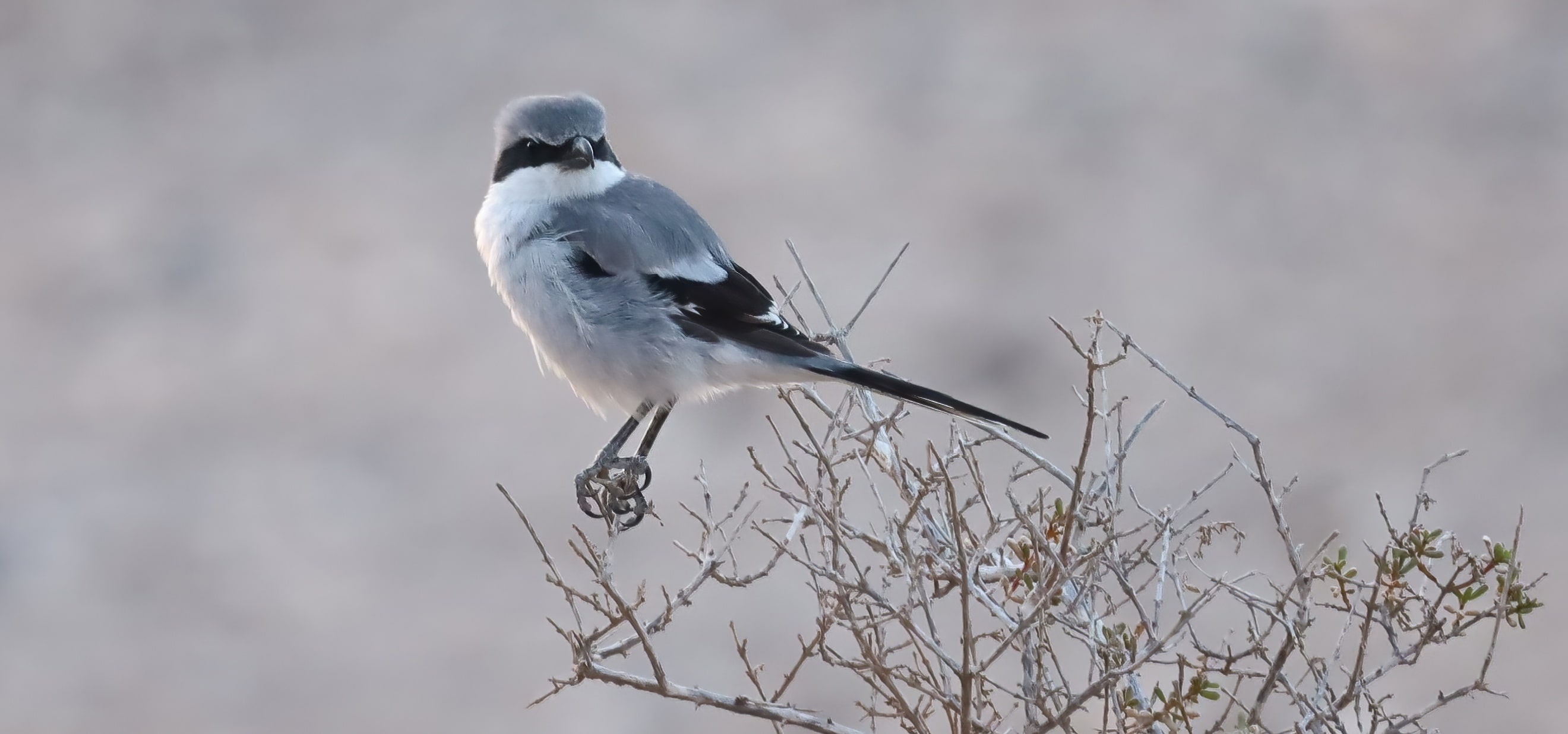
Lanius excubitor koenigi -  Canary Islands Grey Shrike
Canary Islands Grey Shrike 
![]() alcaudón sureño
alcaudón sureño  sivatagi őrgébics
sivatagi őrgébics
(Fuerteventura, Costa Calma, Calle Garcey)
● ssp koenigi: Canary Islands endemic, smaller, shorter wings and tail, more strongly hooked beak
● no longer a subspecies of L. meridionalis
● usually waits for its prey from elevated perches, mainly feeds on insects and lizards sometimes also on birds
● mostly seen in deserts but also found in rural areas, dry suburb parks or vacant lots
● plant: Suaeda vera - Shrubby sea-blite (again...)
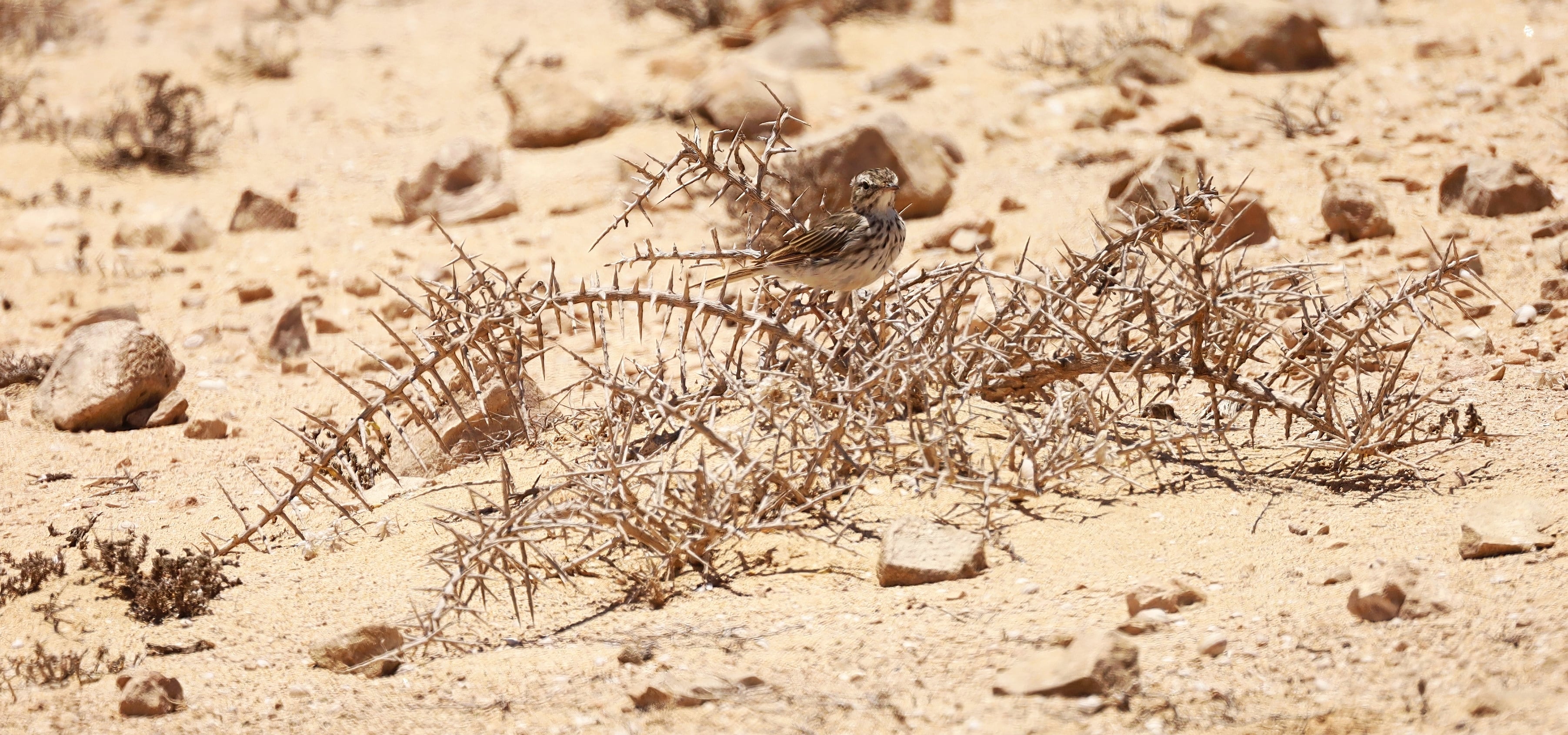
Anthus berthelotii -  Berthelot's Pipit
Berthelot's Pipit 
![]() bisbita caminero
bisbita caminero  Kanári-szigeteki pityer
Kanári-szigeteki pityer
(Fuerteventura, Istmo de La Pared, hiking trail GR 131)
● distinguishing characteristics of the species:
- clear white belly, stripes on breast, strong bright supercilium
- searching for food at the ground level of open habitats most of the time
- lives only in the Canary Islands and Madeira
● seen everywhere in low numbers both in Tenerife and Fuerteventura, even in parks, beaches, deserts
● thorny plant: Lycium intricatum - Southern Boxthorn
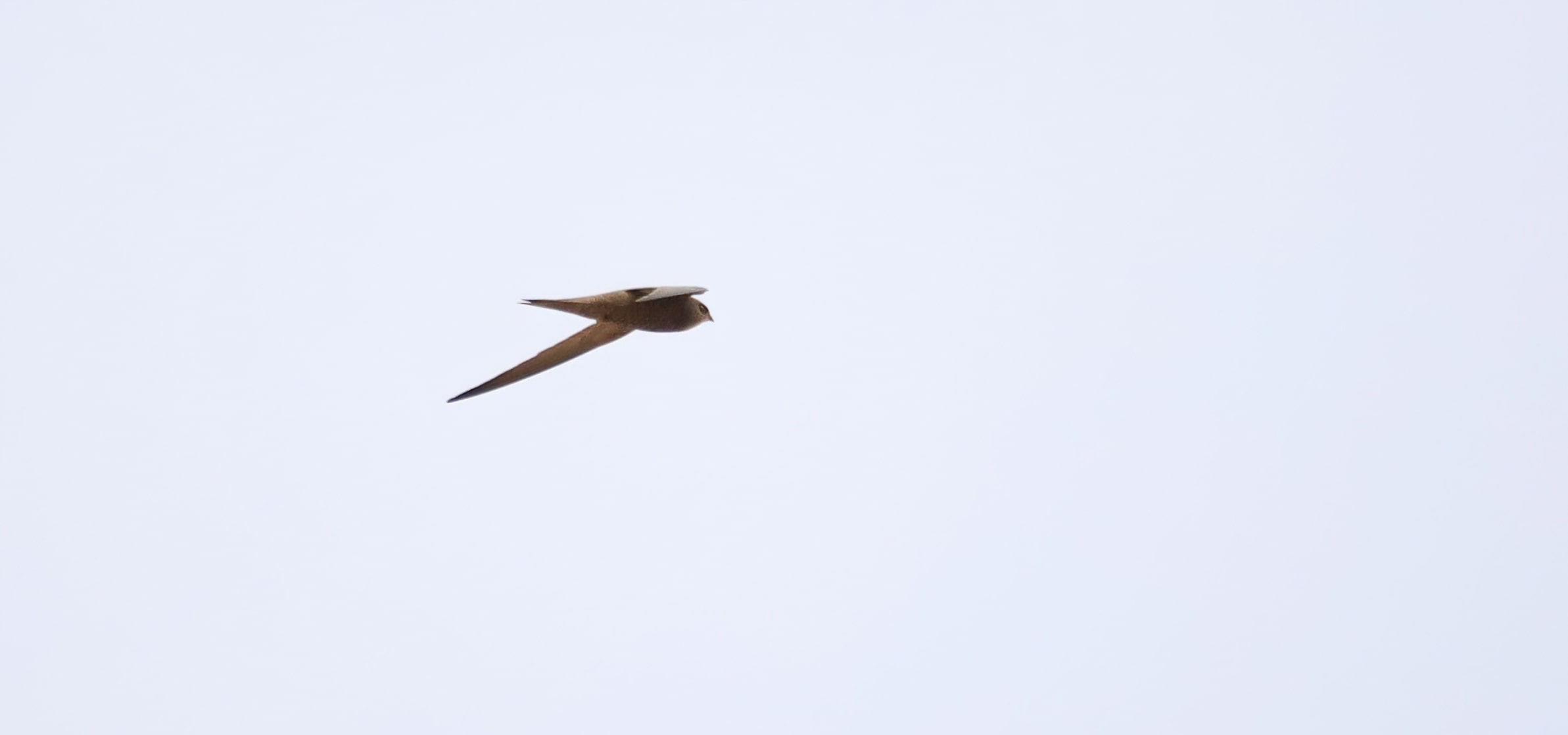
Apus pallidus brehmorum -  Pallid Swift
Pallid Swift 
![]() vencejo pálido
vencejo pálido  halvány sarlósfecske
halvány sarlósfecske
(Fuerteventura, Istmo de La Pared, hiking trail GR 131)
● ssp brehmorum: larger and darker suspecies, lives in Macaronesia, North Africa and parts of the Mediterraneum
● I saw only 2 of them flying together over the desert plains of La Pared
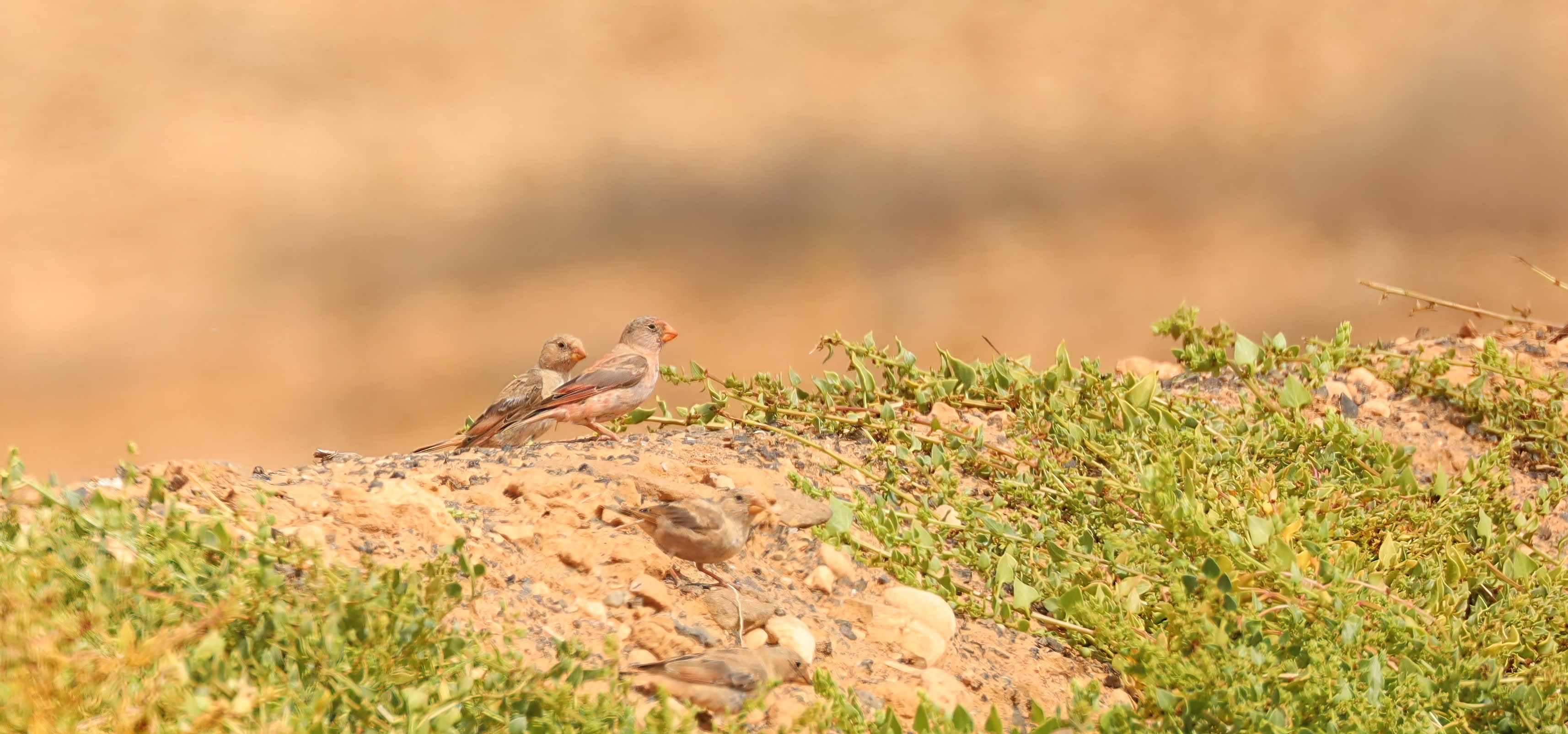
Bucanetes githagineus amantum -  Trumpeter Finch
Trumpeter Finch 
![]() camachuelo trompetero
camachuelo trompetero  trombitás sivatagipinty
trombitás sivatagipinty
(Fuerteventura, Llanos de Tindaya)
● ssp amantum: has a greyer head and thicker bill, endemic subspecies to the Canaries
● male's bill is pink/orange and has many kind of reddish tinges in its plumage, faded color female's bill is straw-yellow
● seen a fast-moving small flock of 20-25 finches at an oasis-like spot in the dry plains of Tindaya (see pointer in title), and another looser and smaller group at the edge of the village Tindaya
● plant: Patellifolia patellaris
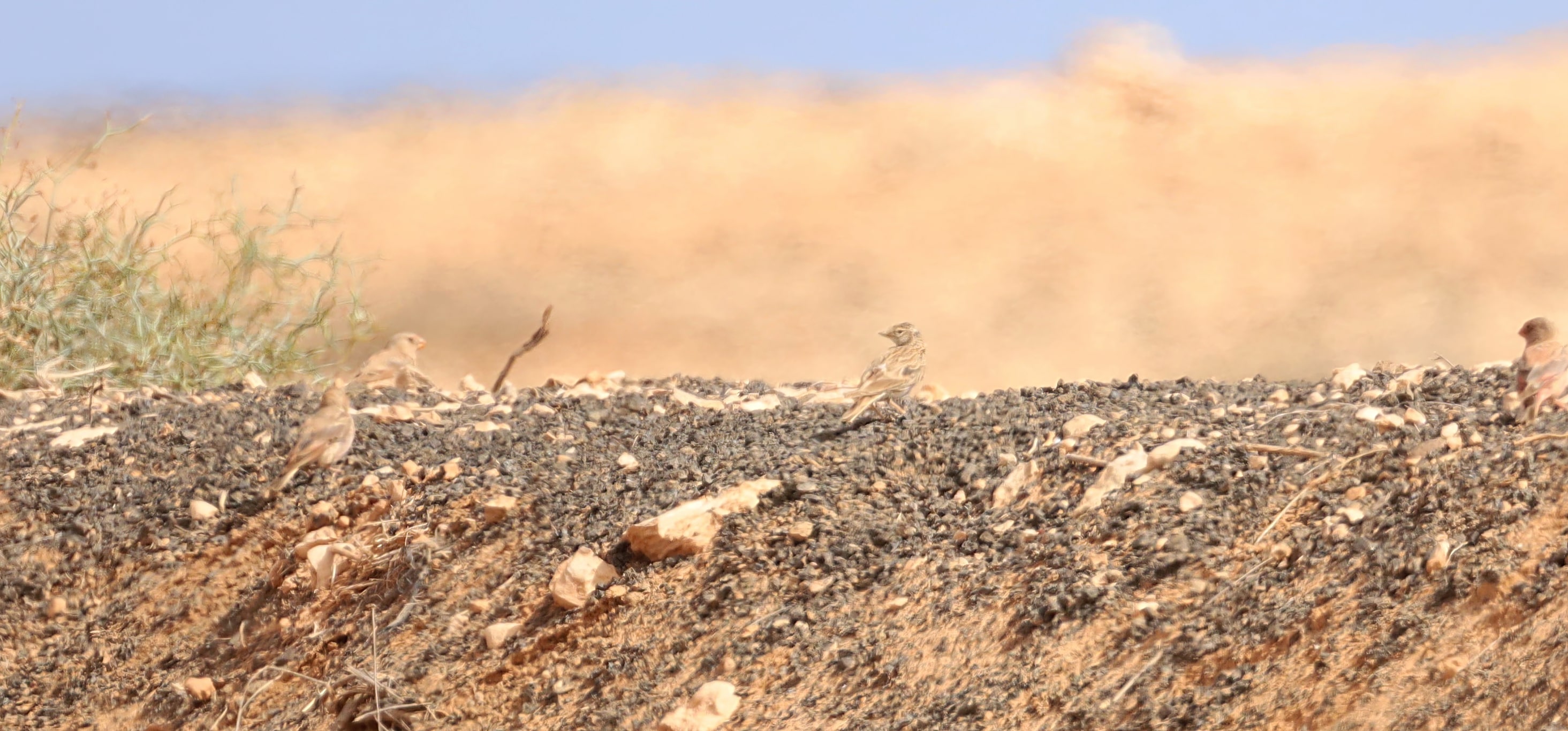
Alaudala rufescens -  Mediterranean Short-toed Lark
Mediterranean Short-toed Lark 
![]() terrera marismeña
terrera marismeña  csíkos szikipacsirta
csíkos szikipacsirta
(Fuerteventura, Llanos de Tindaya)
● in theory a common bird, in practice I could hardly see any of it, maybe due to the summer season
● seen one skittish flock at a dry canyon at La Pared, and a single lark in the group of trumpeter finches in Llanos de TIndaya
● the formerly known species, Lesser Short-toed Lark (Alaudala rufescens) was recently split into 4 new species (2 of them found in WP): Alström 2021
- A. rufescens - Mediterranean Short-toed Lark (NW-Africa)
- A. heinei - Heine's (Turkestan) Short-toed Lark (Middle-East)
- A. cheleensis - Asian Short-toed Lark (Mongolia, NE-China)
- A. raytal - Sand Lark (India, SE-Asia)
● A. rufescens rufescens in Tenerife and A. rufescens polatzeki in the eastern islands are no longer valid taxa
● zigzag plant in background: Launaea arborescens
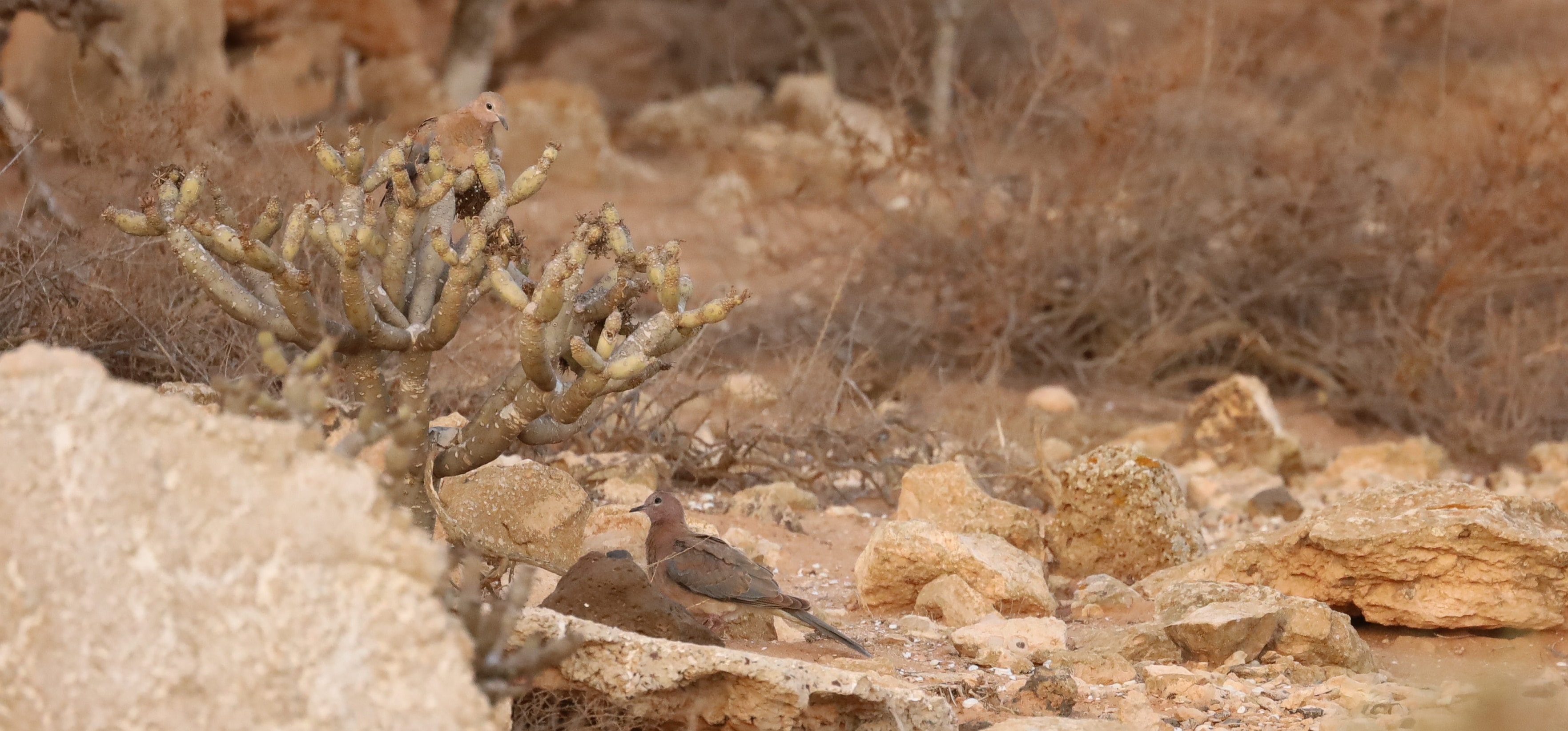
Streptopelia senegalensis phoenicophila -  Laughing Dove
Laughing Dove 
![]() tórtola senegalesa
tórtola senegalesa  pálmagerle
pálmagerle
(Fuerteventura, Tindaya)
● ssp phoenicophila: NW-African subspecies, somewhat larger in size and duller in colors, upper tail coverts are bluish-grey
● seen only a few birds, all near a farm at Tindaya, later heard some of them in the village, too
● plant: Kleinia neriifolia - Canary Islands candle plant (endemic)
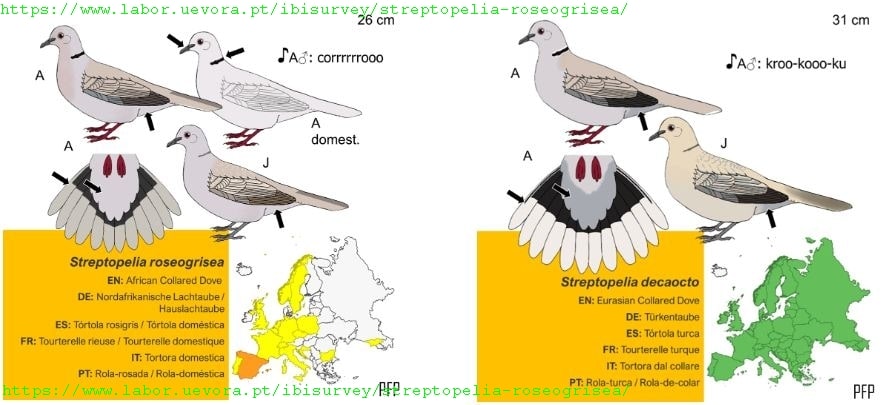
● in urban and rural habitats collared doves are abundant everywhere in the islands, as they do in the continental cities
● Eurasian (Str. decaocto) and African collared dove (Str. roseogrisea) are common in most cities, just like the Str. decaocto in Europe
● it's really hard to tell them apart, but there are some field marks to help ➤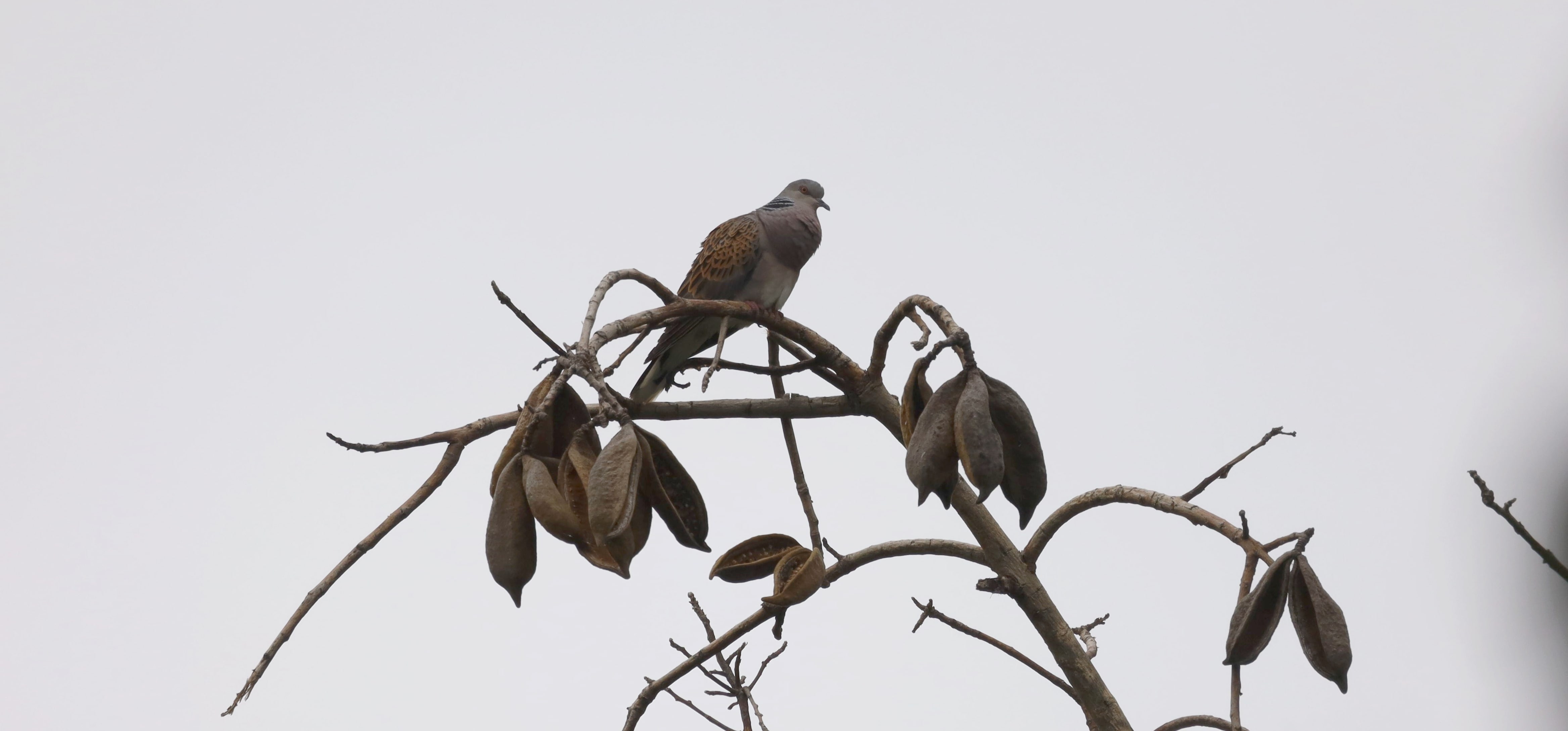
● European Turtle Dove (Str. turtur) is also present in the islands, but I saw only 2 in Jardín Botánico, Puerto de la Cruz (plant: Brachychiton populneus - Kurrajong) ➤
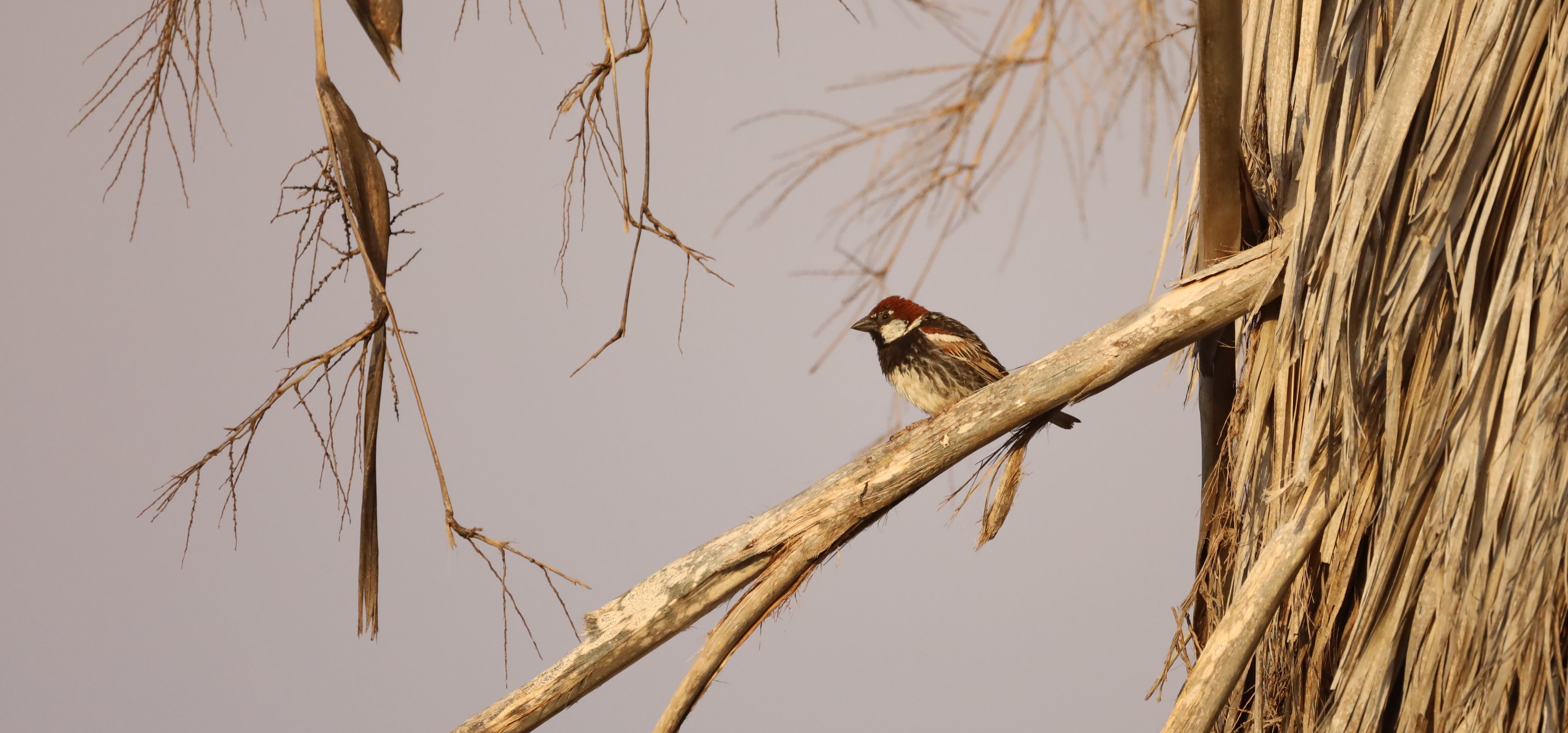
Passer hispaniolensis -  Spanish Sparrow
Spanish Sparrow 
![]() gorrión moruno
gorrión moruno  berki veréb
berki veréb
(Fuerteventure, Costa Calma)
● the nominate lives in the Canaries and no other Passer species lives in the islands
● a common bird but most of the time it hides in the crown of dead leaves and fronds of palm trees
● plant: Phoenix canariensis - Canary Island date palm (endemic tree, but it has already been introduced to many other places)
● the decline in the population of Rock Sparrow (Petronia petronia) is considered due to the competition of the naturally arriving and continously increasing population of Spanish Sparrow in Canary Islands since 1998. Before the arrival of the Spanish Sparrow, there were no other sparrow species except the Rock Sparrow. I could not find a single Rock Sparrow in this whole journey in Tenerife and Fuerteventura.
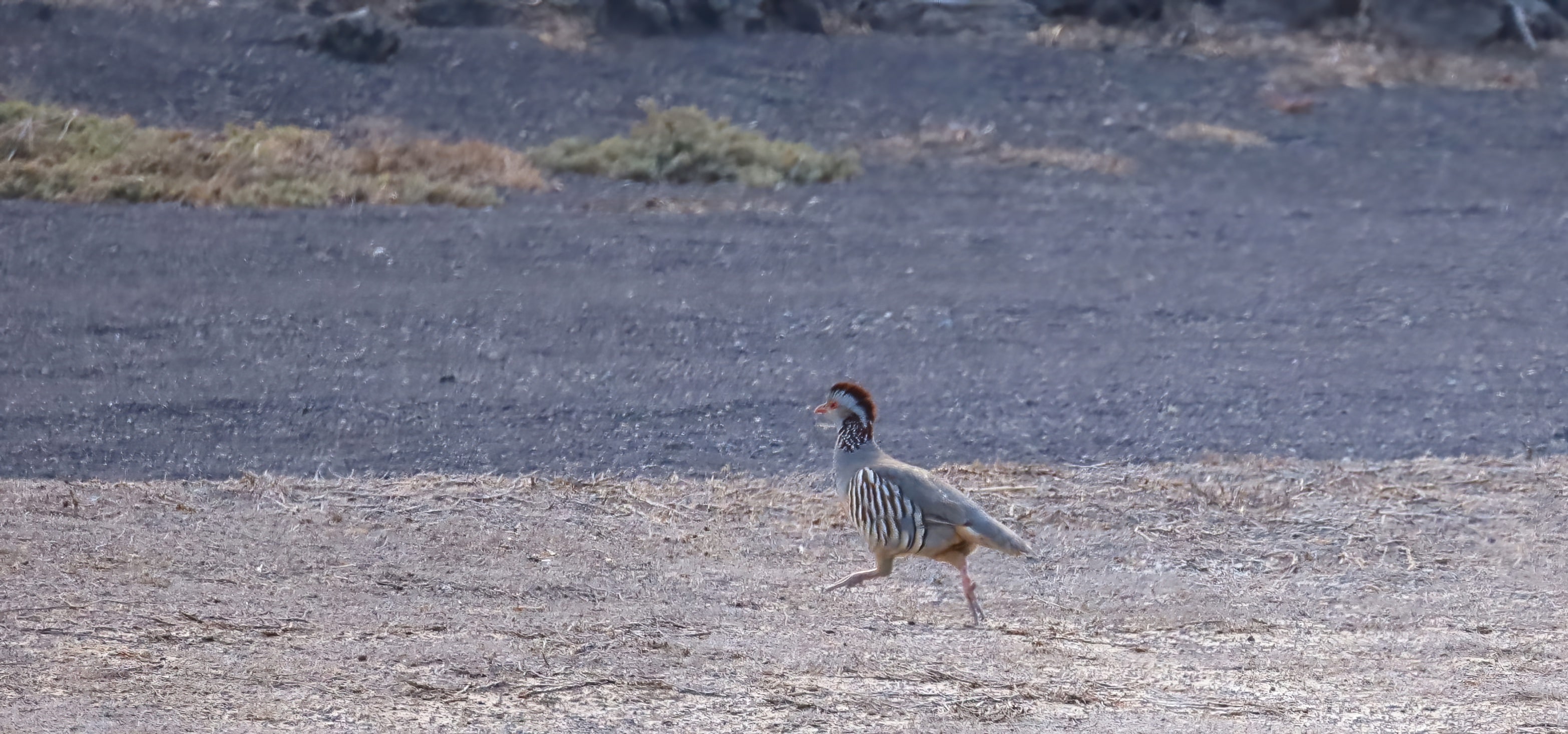
Alectoris barbara koenigi -  Barbary Partridge
Barbary Partridge 
![]() perdiz moruna
perdiz moruna  barnanyakú szirtifogoly
barnanyakú szirtifogoly
(Tenerife, Los Abrigos, Barranco del Saltadero)
● ssp koenigi: endemic subspecies to the Canary Islands, introduced from Morocco as a game bird in the 18th century
● I saw the species only twice: once a bird running through an abandoned golf course in Los Abrigos, Tenerife, and once a flushing bird in Istmo de La Pared, Fuerteventura
● according to some local legends, there are some hiking routes where tourists can feed tame partridges, but I haven't even seen anything similar

Falco tinnunculus canariensis -  Common Kestrel
Common Kestrel 
![]() cernícalo vulgar
cernícalo vulgar  vörös vércse
vörös vércse
(Tenerife, Puerto de la Cruz, Palmetum)
● plant: Araucaria heterophylla - Norfolk Island Pine (introduced)
● male kestrels have grey head and grey tail, females have brown head and barred tail
● ssp canariensis: subspecies of the Western Canary Islands and Madeira, slightly different from the continental form, it has somewhat more contrasted plumage colors (image above)
- a common bird of prey in many habitats: urban parks, mountain forests, groves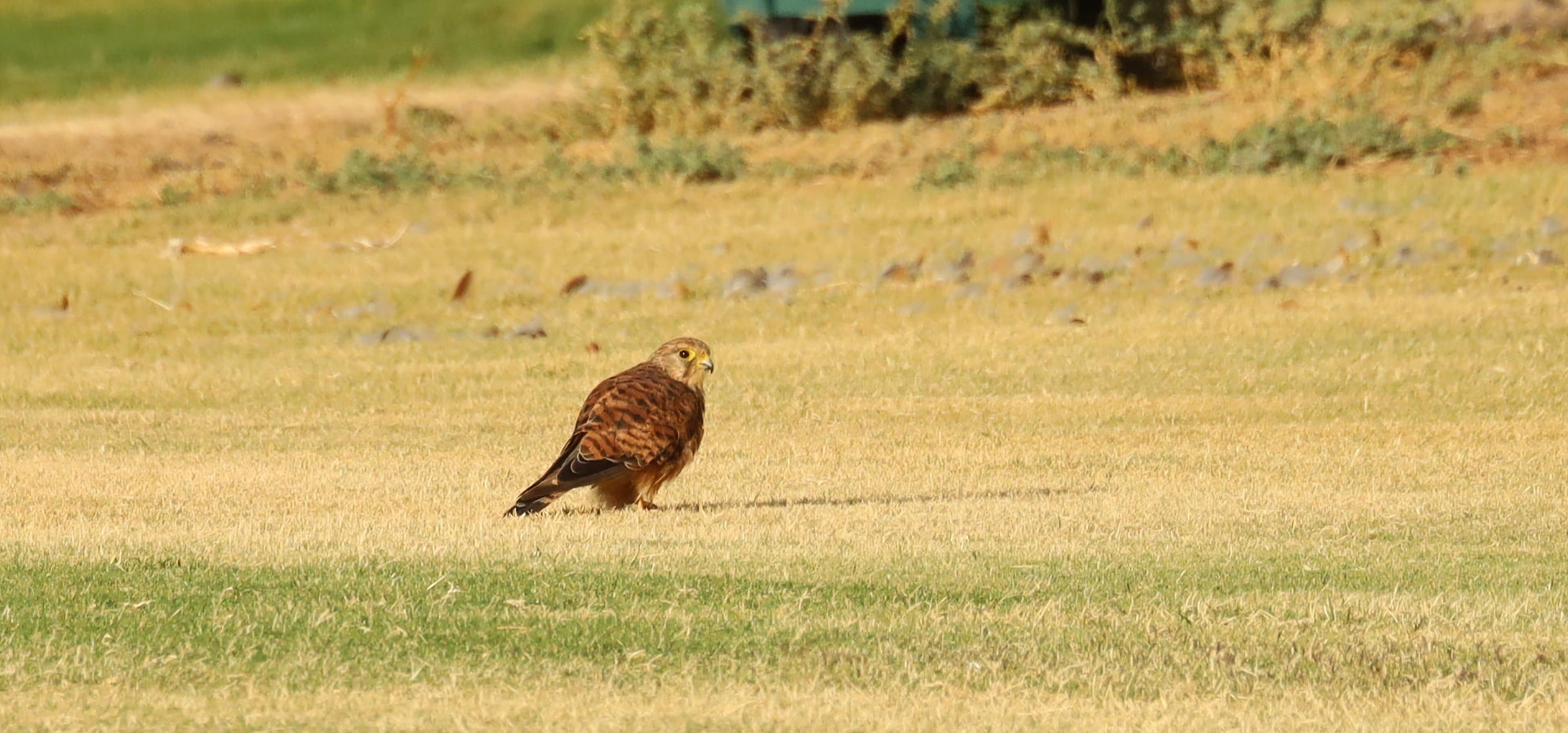
● ssp dacotiae: endemic to the Eastern Canary Islands, more reddish in color tones and has paler markings on it (small image) ➤
- may be much less frequent, I found only one female bird hunting on the lawn of Jandía Golf Club, Morro Jable

Saxicola dacotiae -  Canary Island Stonechat
Canary Island Stonechat 
![]() tarabilla canaria
tarabilla canaria  kanári csuk
kanári csuk
(Fuerteventura, Morro Jable, Jandía Golf Club)
● endemic species of the Canary Islands, lives only in Fuerteventura and Lanzarote
● near threatened, the population is decreasing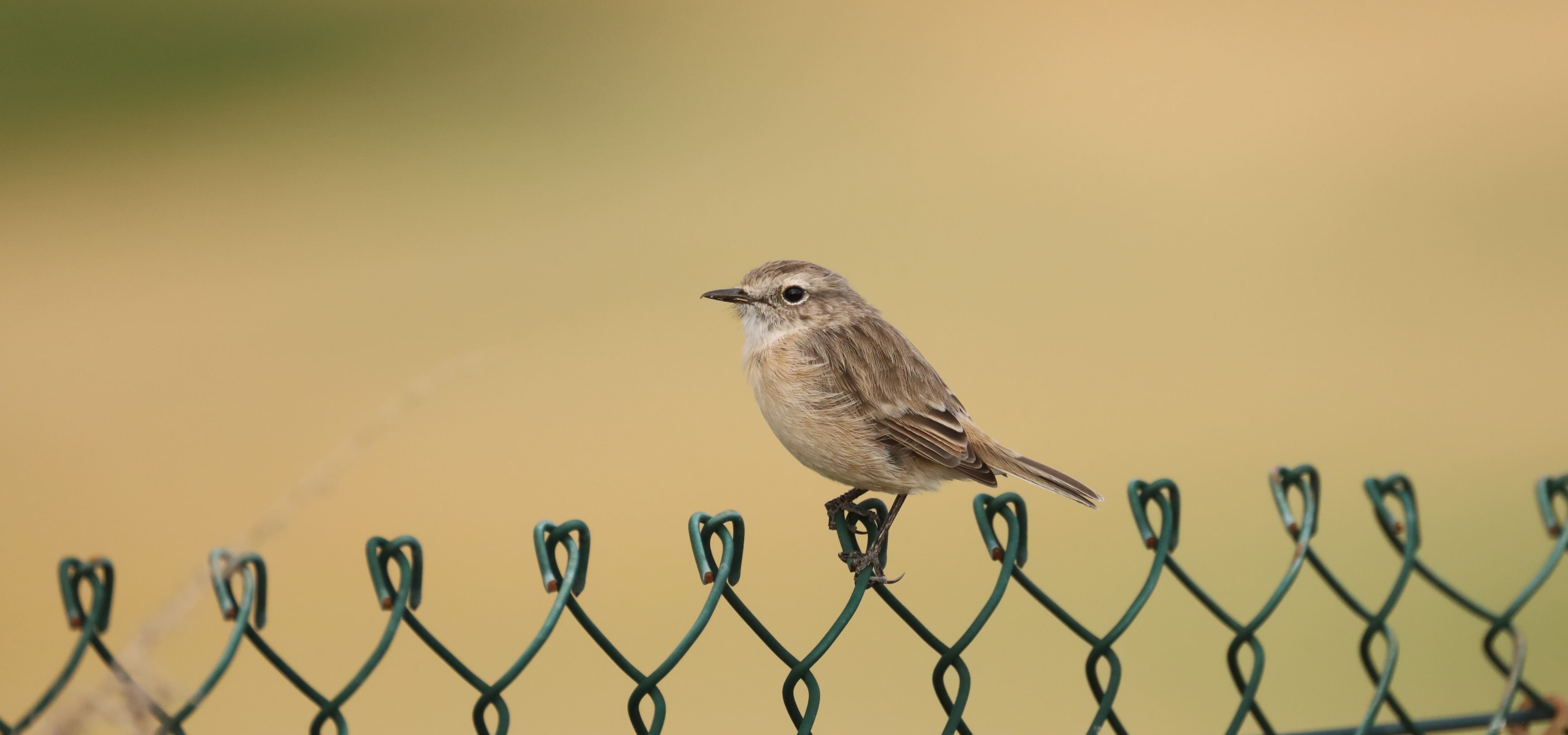
● long white collar and throat, very few white in wings, supercilium extends only slightly beyond the eye; females are pale ➤
● males are territorial, just like their relatives in Europe
● I only saw one pair at the Jandía Golf Course in Morro Jable
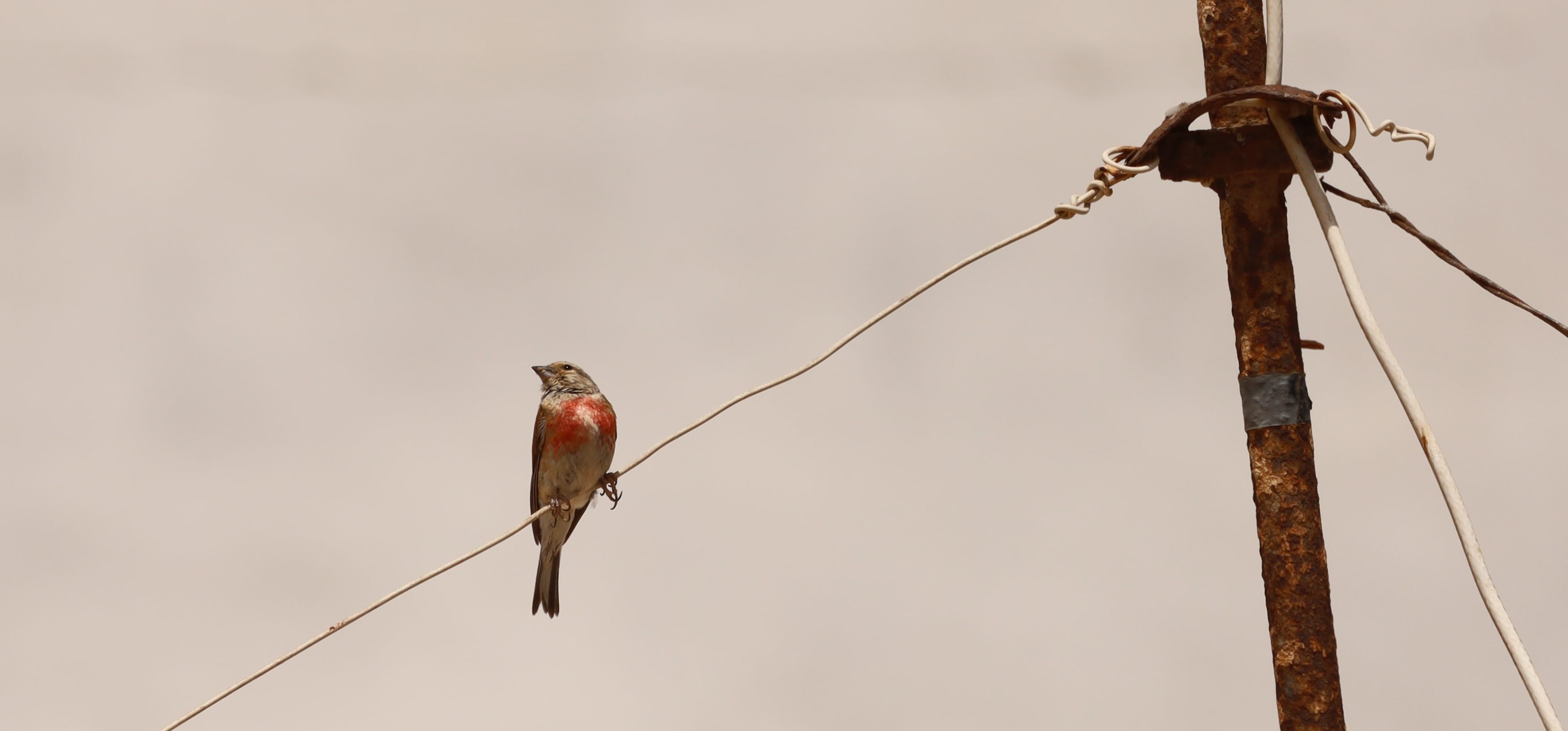
Linaria cannabina harterti -  Common Linnet (eastern Canary Islands)
Common Linnet (eastern Canary Islands) 
![]() pardillo común
pardillo común  kenderike
kenderike
(Fuerteventura, Puerto del Rosario, El Charco)
● ssp harterti: endemic subspecies of the eastern islands, bright ruby-red breast, much darker brown upperparts
● song of a Linnet in El Palmeral park, Costa Calma:
● there is another and similar endemic subspecies (L. c. meadewaldoi) that lives only in the western islands
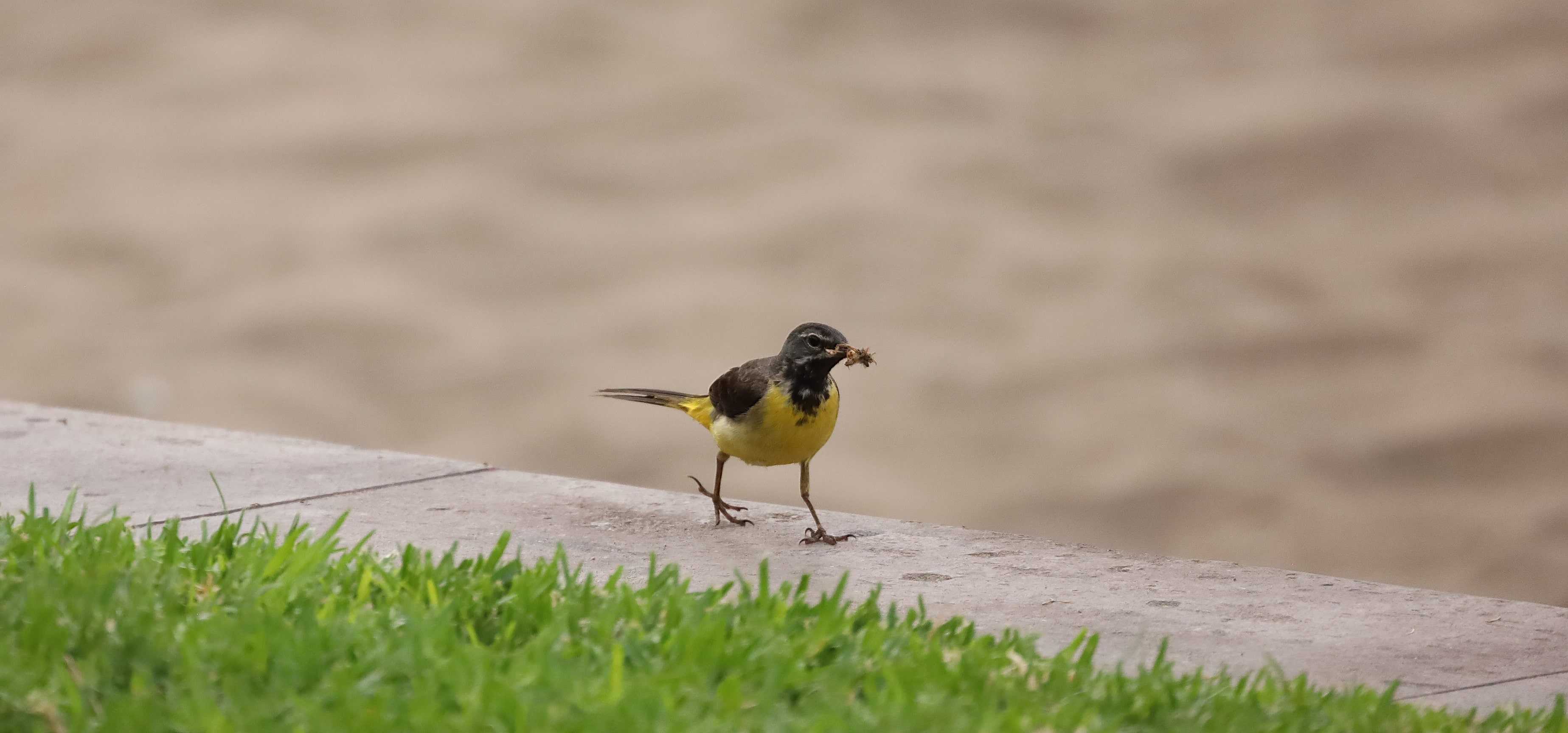
Motacilla cinerea canariensis -  Grey Wagtail
Grey Wagtail 
![]() lavandera cascadeña
lavandera cascadeña  Kanári-szigeteki hegyi billegető
Kanári-szigeteki hegyi billegető
(Tenerife, Los Cristianos, beach)
● ssp canariensis: male has a larger black breast plate, much less white in wings and tail, narrow supercilium
● can be found anywhere near fresh water (does not live at all in the arid Fuerteventura and Lanzarote)
● I saw the species in this trip only in some irrigated city parks in Tenerife
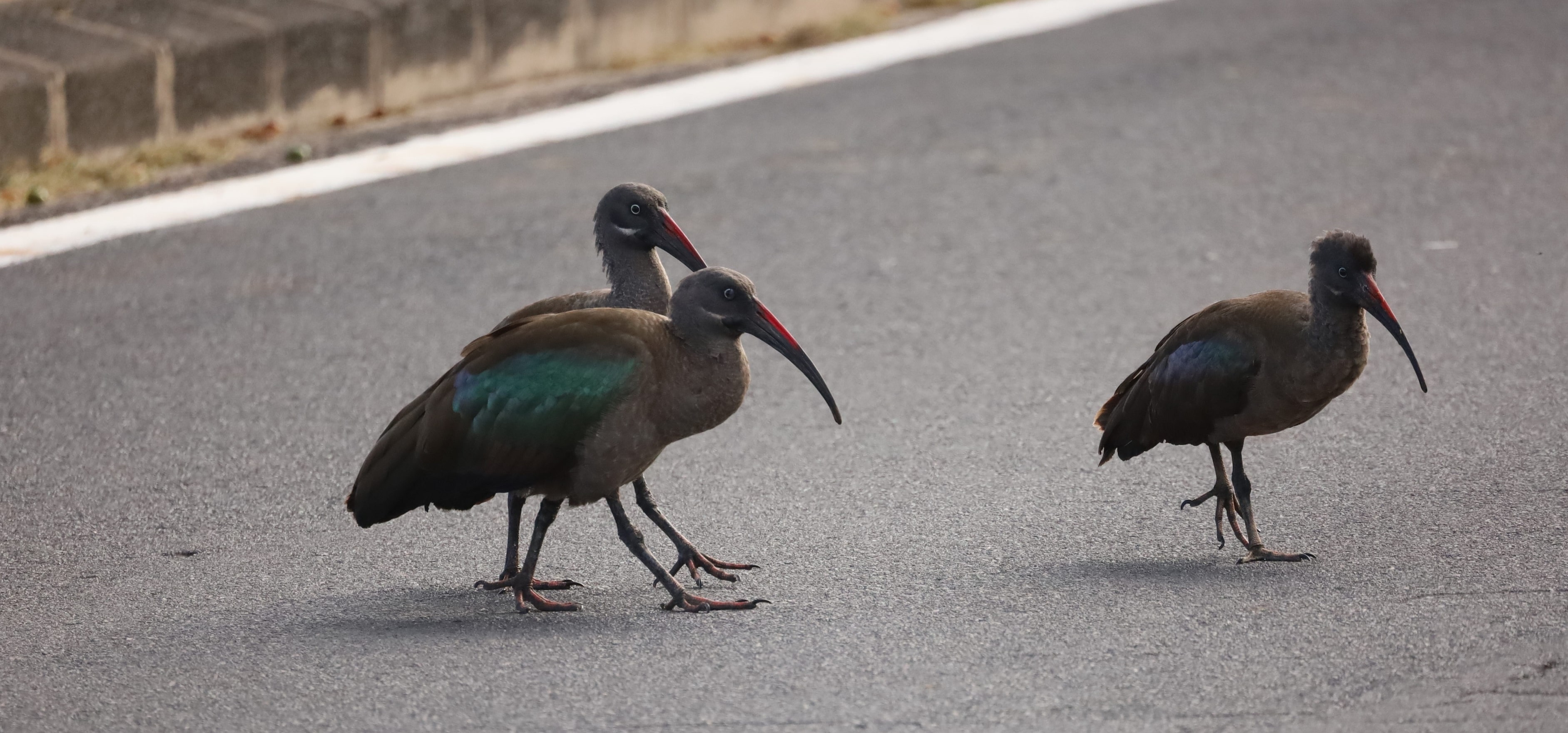
Bostrychia hagedash (nilotica?) -  Hadada Ibis
Hadada Ibis 
![]() ibis hadada
ibis hadada  hadadaibisz
hadadaibisz
(Fuerteventura, Morro Jable, Avenida del Saladar)
● the family crosses the highway...
● category C: stable 'street population' escaped from Stella Canaris Zoo, which closed in 2013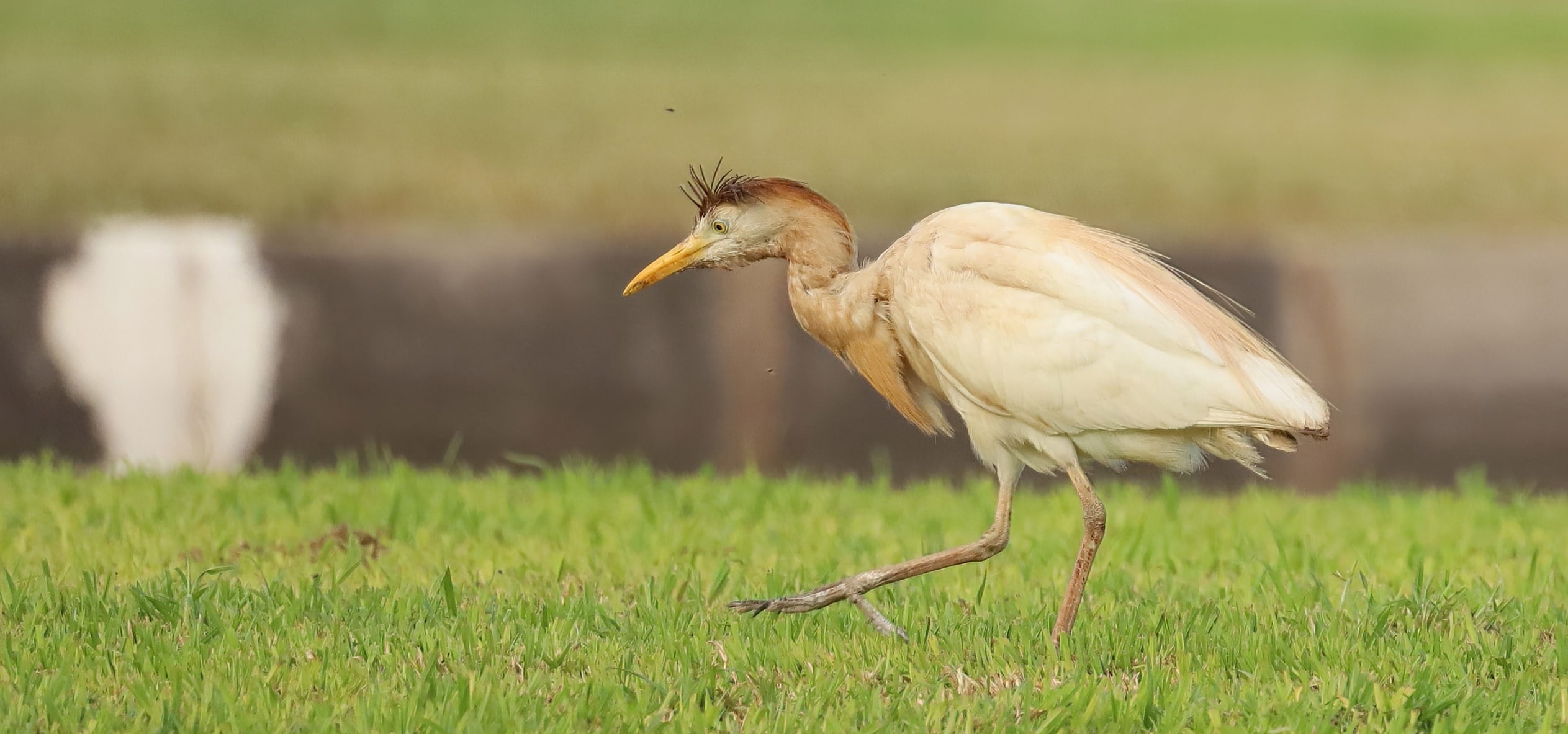
● seen many of them in groups among Western Cattle Egrets (Ardea ibis.) in the coastal parks of Morro Jable picking insects off the lawn, near the abandoned zoo
- one Cattle Egret had a uniquely dark summer plumage (the others were all normal) ➤
● 3 wild species of parrots (all introduced, category C) were found in this trip:
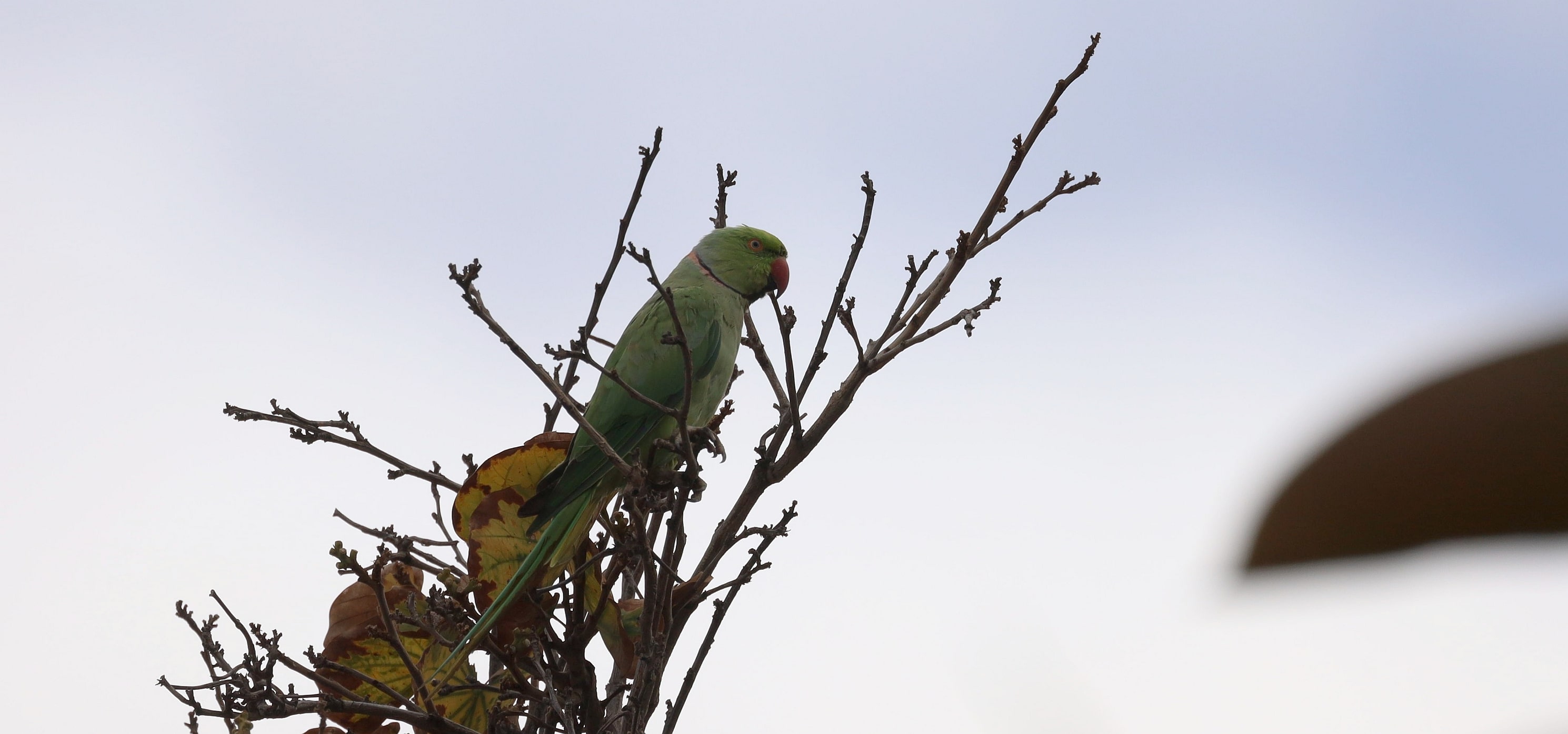
Psittacula krameri
(Tenerife, |
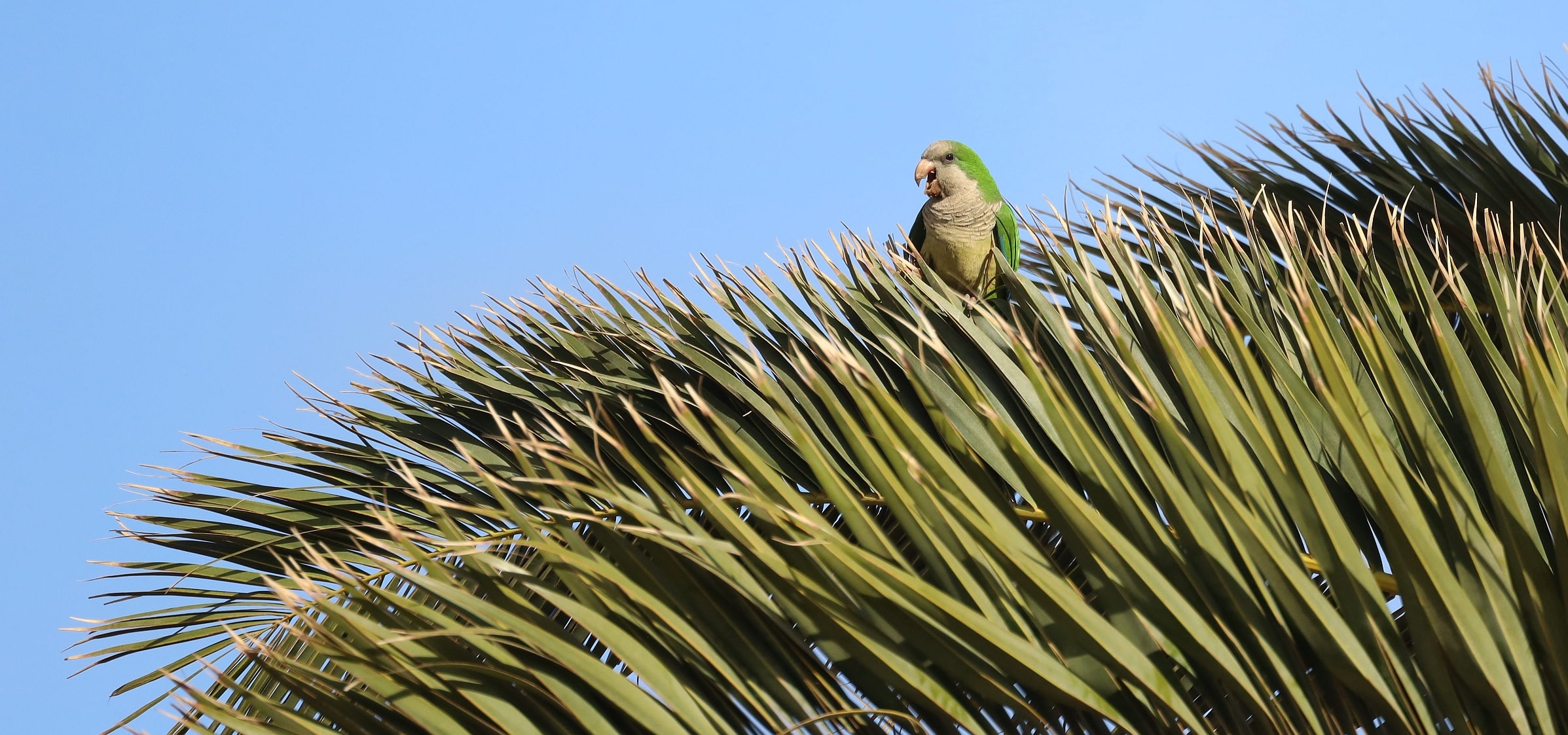
Myiopsitta monachus
(Fuerteventura, |
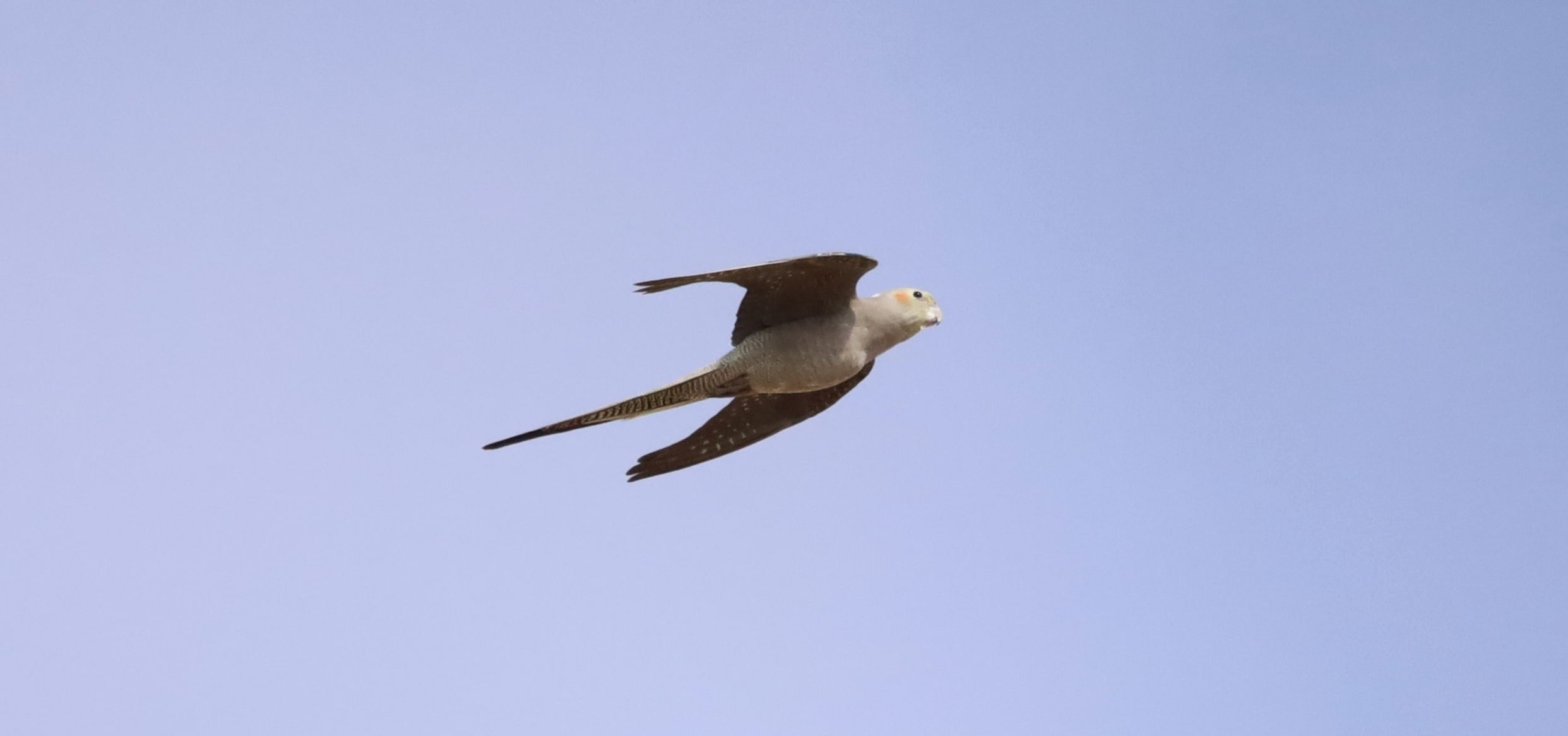
Nymphicus hollandicus
(Fuerteventura, |
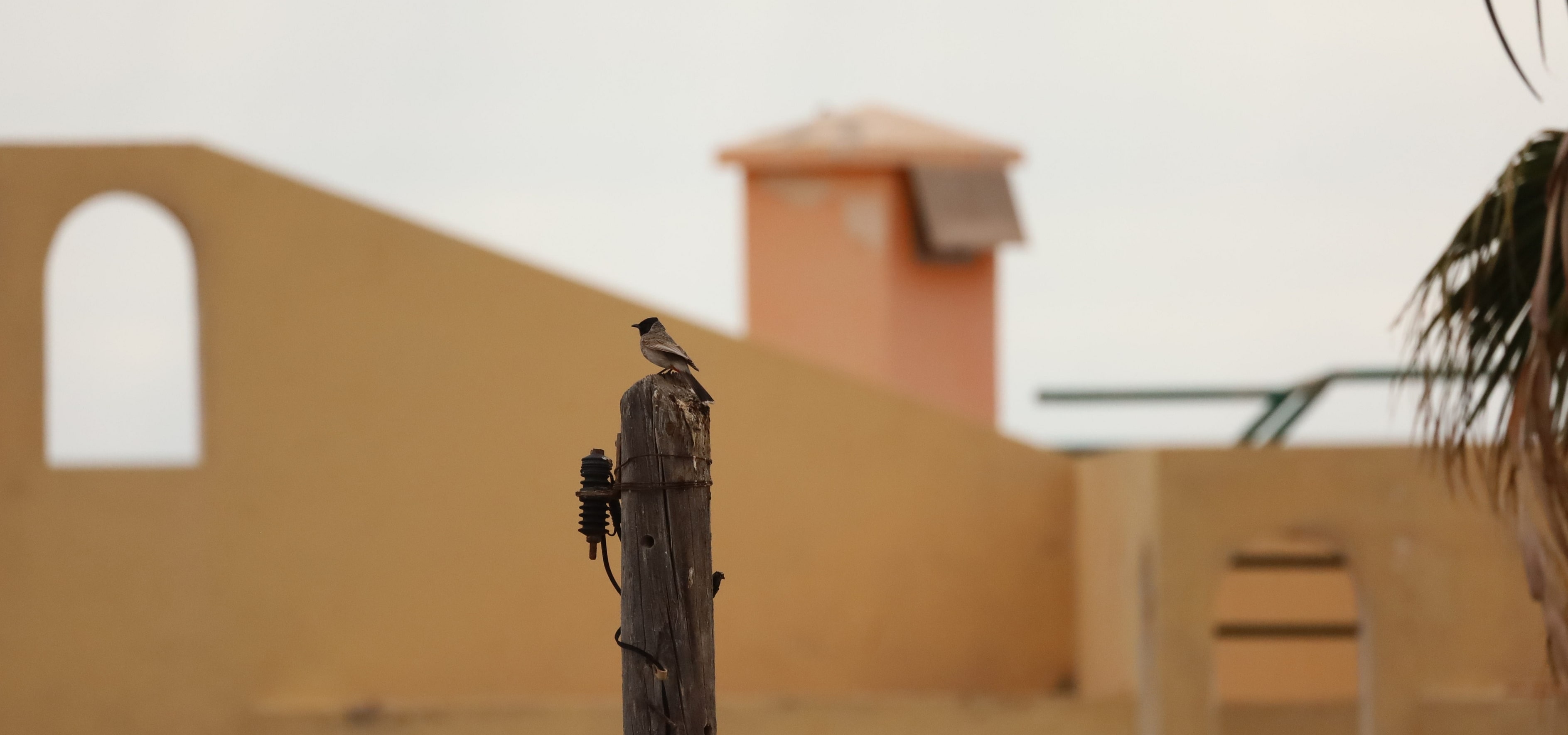
Pycnonotus cafer -  Red-vented Bulbul
Red-vented Bulbul 
![]() bulbul cafre
bulbul cafre  kormos bülbül
kormos bülbül
(Fuerteventura, Costa Calma, Calle Punta de los Molinillos)
● another category C species for WP listers, as it is a globally invasive bird from SE-Asia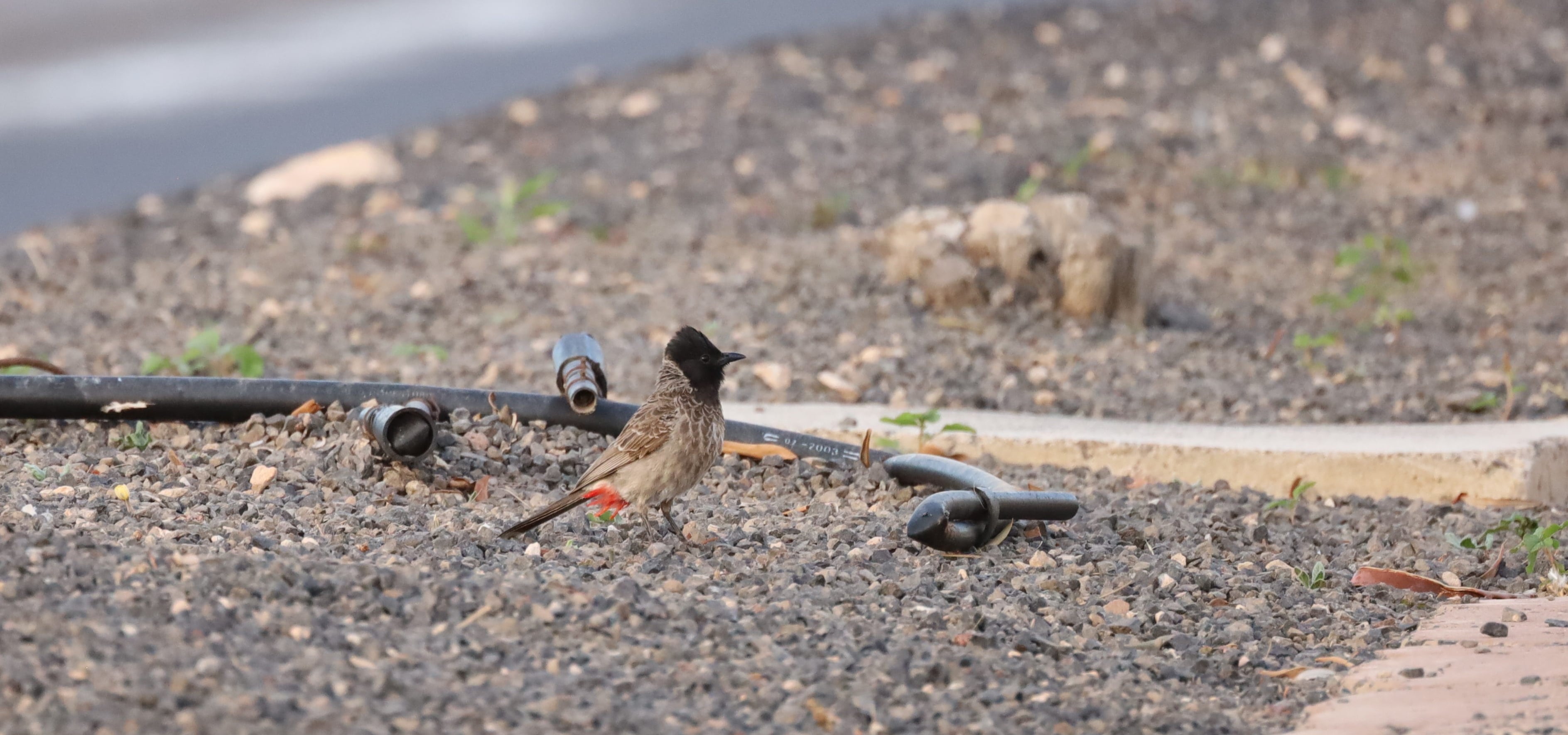
● the first ones were observed here in 2003, they have a stable population since 2014
● restricted to cities, parks and plantations, but in large numbers they can pose a harmful threat to fruit orchards, and behave agressively towards other bird species
● I saw one of them in an evening in Costa Calma, next morning a group of birds (10-15) were chatting in the same parking lot and in the neighboring streets, some of them were even singing
● morning song of the Red-vented Bulbul in the streets of Costa Calma:
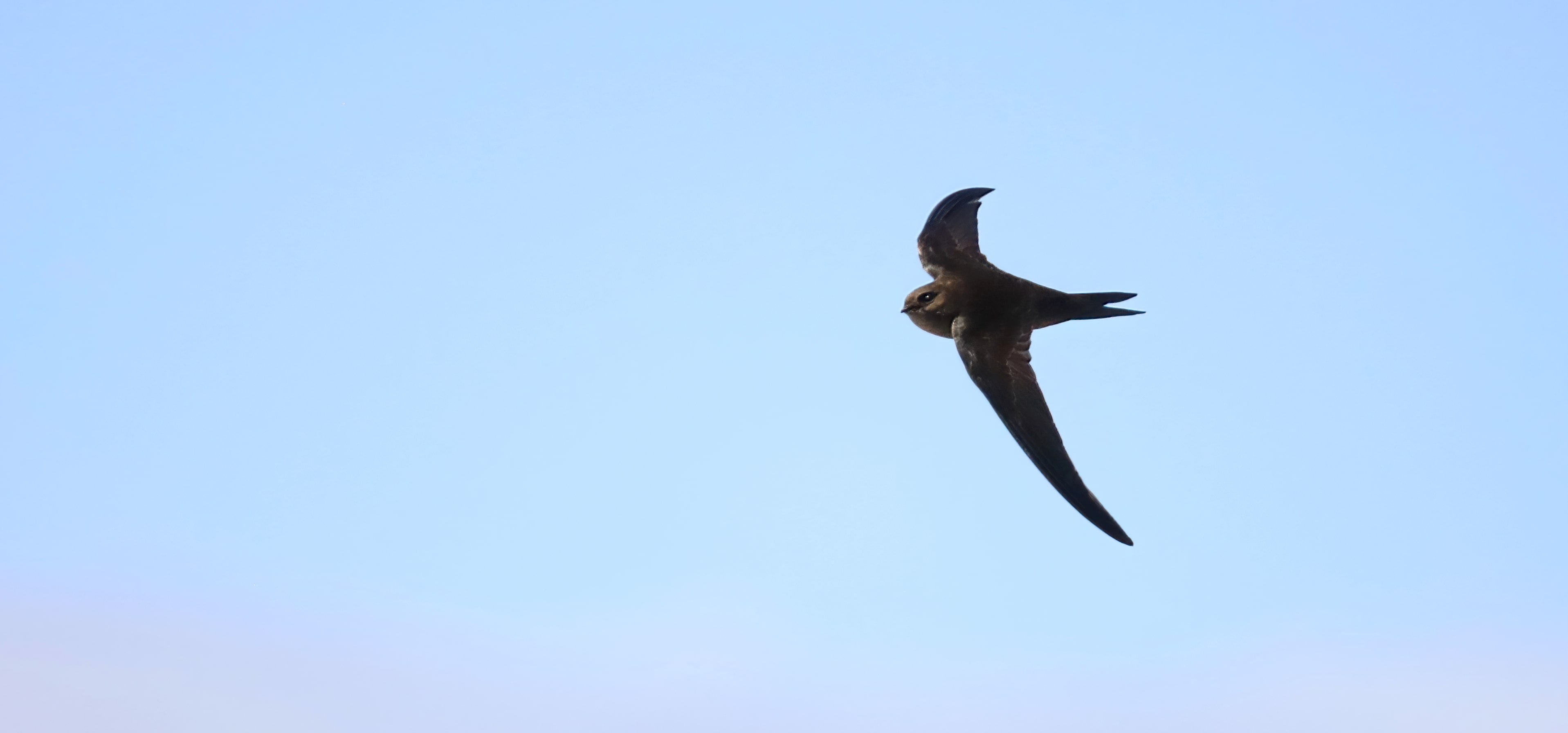
Apus unicolor -  Black Swift
Black Swift 
![]() vencejo unicolor
vencejo unicolor  egyszínű sarlófecske
egyszínű sarlófecske
(Tenerife, Santa Cruz de Tenerife, Palmetum)
● the most common swift in the archipelago, easily found on every island
● lighter in color than A. apus, darker than A. pallidus
● slightly smaller in size and has narrower wings than A. apus and barely has any throat patch
● largest groups (100-200) were found in a city park of Los Cristianos near the beach, in the recreation park of Las Lajas and in the tidal shrub zone of Playa de Jandía in Morro Jable
● I saw significant number of swallows (H. rustica, D. urbicum) only on the beach of Morro Jable
● other swift species were also rare, a single A. apus in Los Cristianos and a pair of A. pallidus in Istmo de La Pared were found all over, A. unicolor is dominant in numbers everywhere, at least in the summer season

Dendrocopos major canariensis -  Great Spotted Woodpecker
Great Spotted Woodpecker 
![]() pico picapinos
pico picapinos  Kanári-szigeteki nagy fakopáncs
Kanári-szigeteki nagy fakopáncs
(Tenerife, Las Lajas)
● ssp canariensis: resident and endemic subspecies in Tenerife, lives only in pine forests between 800-1800 m, population is about 200 pairs (slightly increasing), the dry coniferous forests around Mount Teide are one of their last strongholds
● has a browner underparts, a browner band above the bill and more contrasting white flanks. However, birds of the nominate subspecies in the continental Europe have very similar color variants, too. Honestly, I don't see any crucial difference here...
● genetic studies show more evidence for the subspecies taxon status: Garcia-del-Rey 2007
● sexual dimorphism is the same: adult male on the left and juvenile male on the right in the picture shown above, females do not have red on their heads
● another resident and endemic subspecies (D. m. thanneri) lives in Gran Canaria with a slightly more stable population
● plant: Pinus canariensis - Canary Island pine (kanári fenyő)
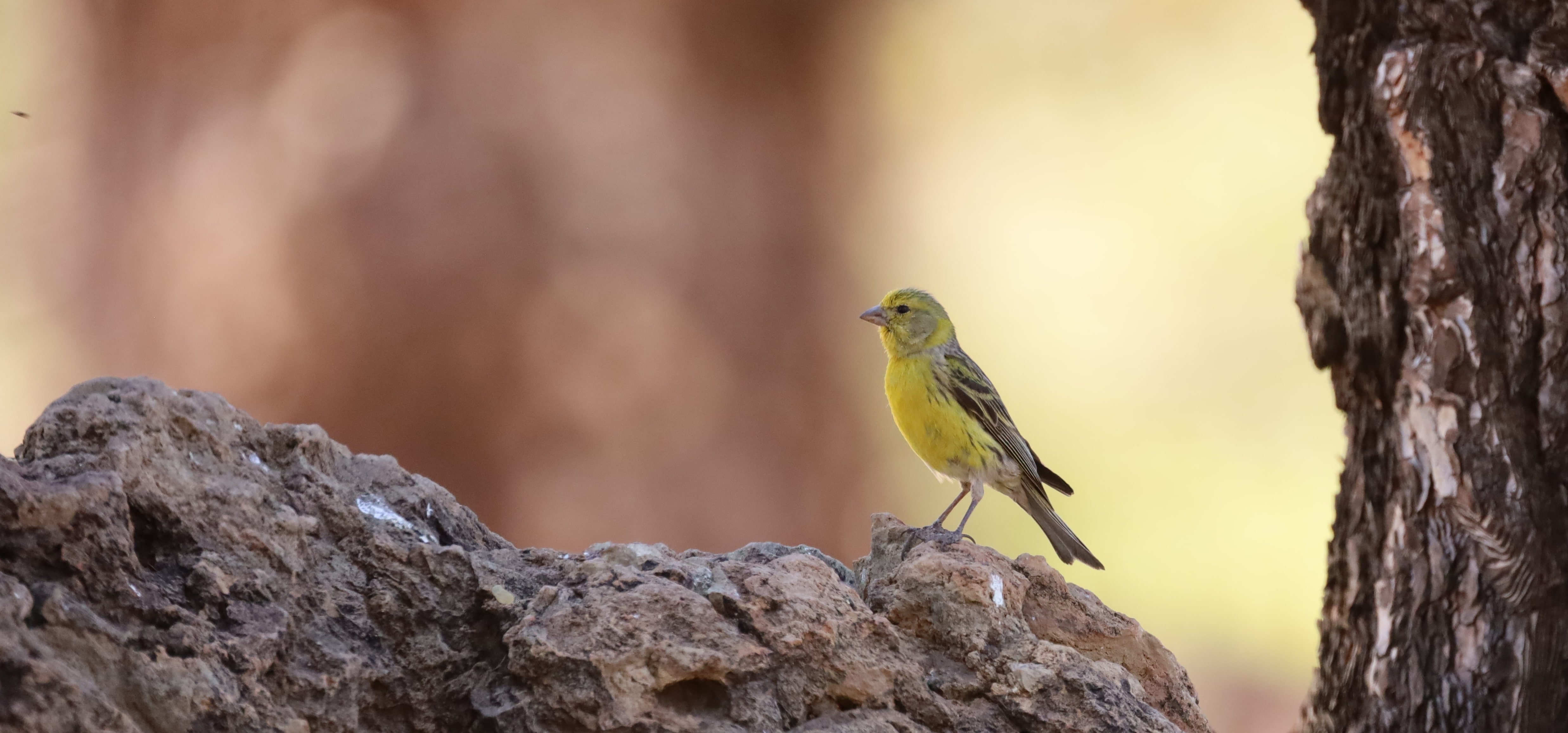
Serinus canaria -  Atlantic Canary
Atlantic Canary 
![]() serín canario
serín canario  kanári
kanári
(Tenerife, Las Lajas)
➤ two singing wild canaries (1st in a busy highway of Costa Adeje and 2nd in Las Lajas park) ➤
● the most famous bird of the Canary Islands, it is present throughout Macaronesia and a common songbird
● its breeds are the most common pet birds worldwide since the 17th century (Serinus canaria forma domestica)
● the plumage is variable in the wild population, too
● males are more striking, females are paler, young birds are brownish
● wild canaries can be found in many places in Tenerife, but I saw them in highest density in the parks of Las Lajas
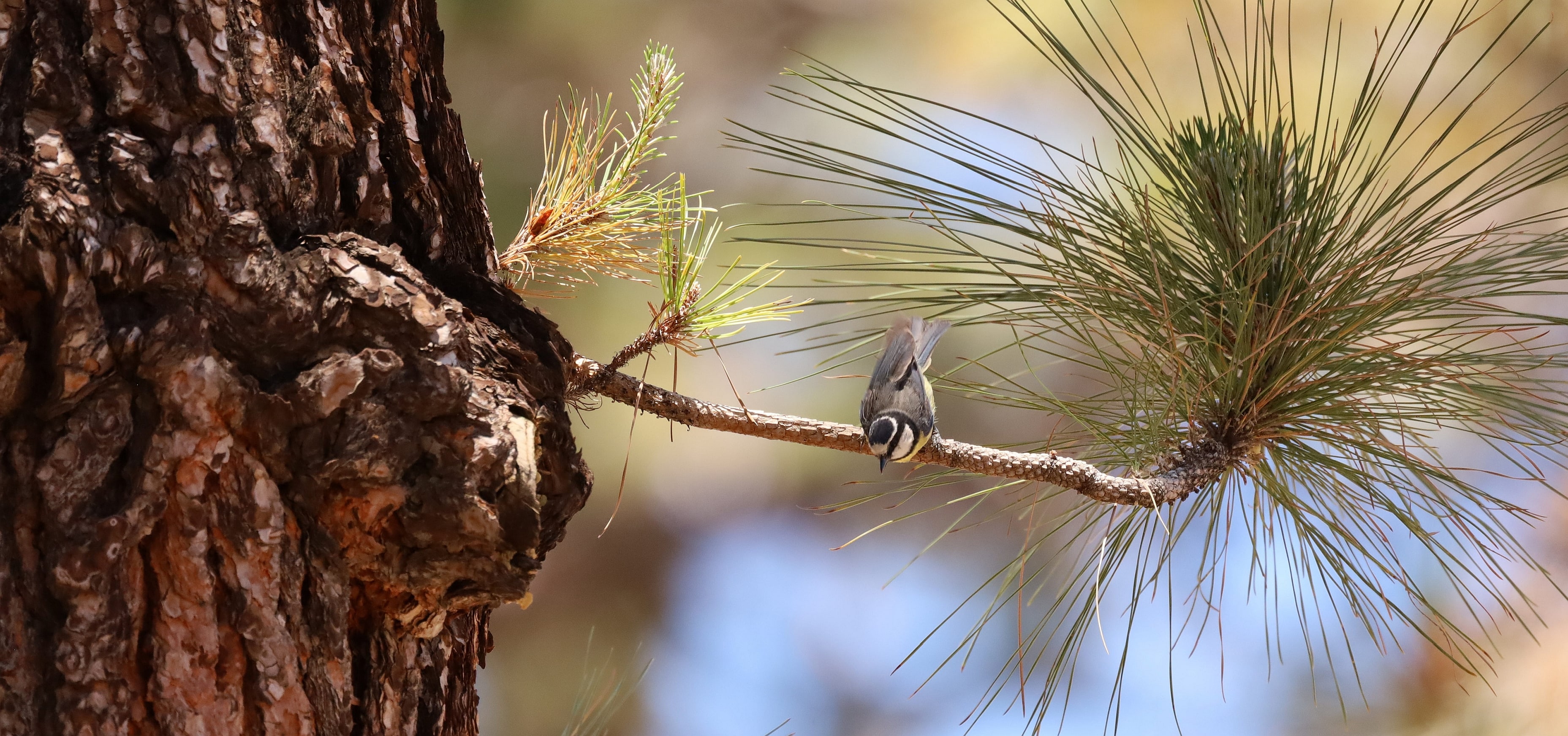
Cyanistes teneriffae teneriffae -  African Blue Tit
African Blue Tit 
![]() herrerillo afrocanario
herrerillo afrocanario  tenerifei kék cinege
tenerifei kék cinege
(Tenerife, Las Lajas)
● an endemic bird on an endemic tree
● Tenerife Blue Tit preens its feathers after a bath (Las Lajas) ➤
● dark blue cap, long and thin bill, no white stripe on wings
● 4 other endemic subspecies living in the islands with slight morphological differences
● tree: Pinus canariensis - Canary Island pine (kanári fenyő):
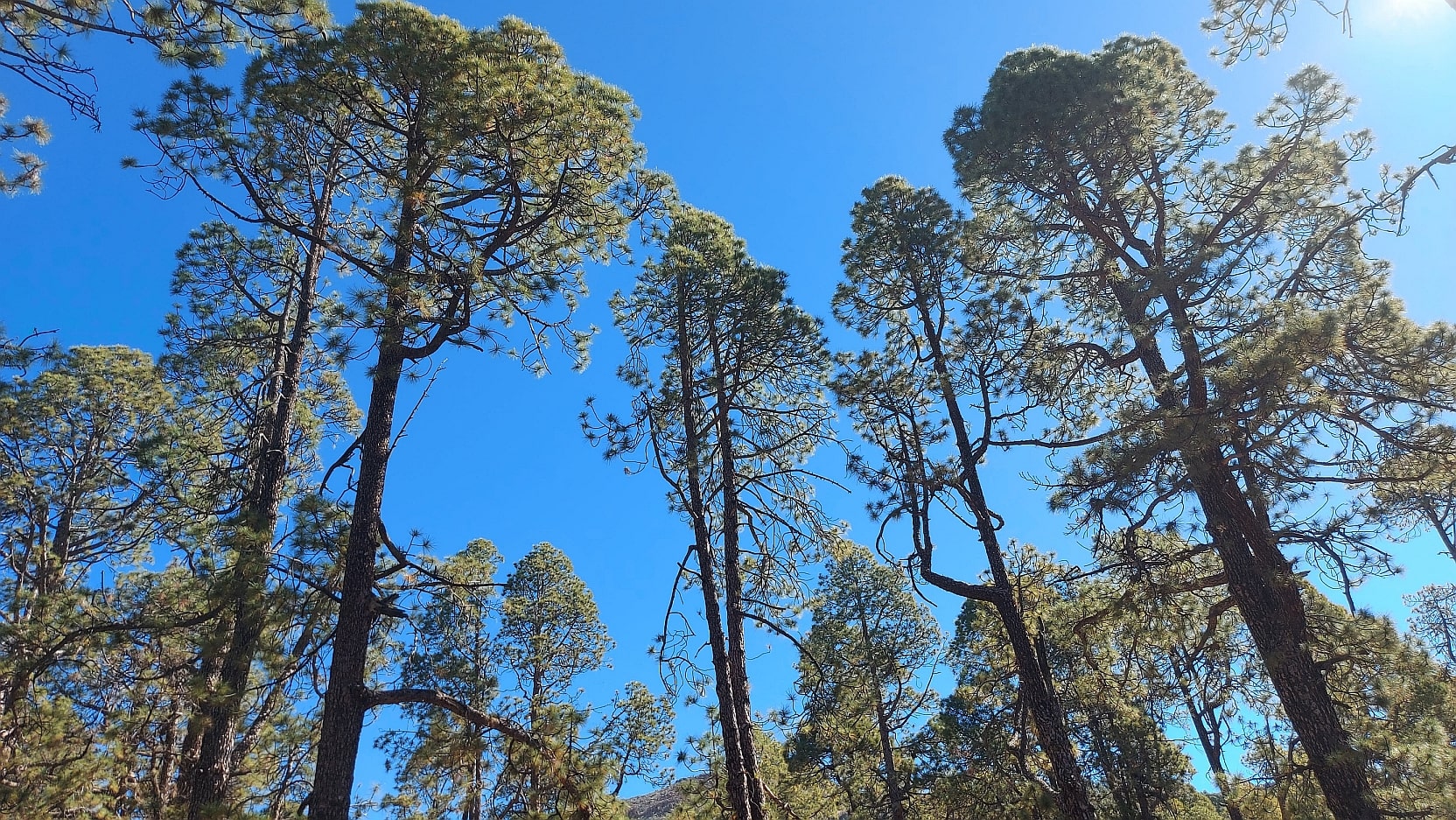
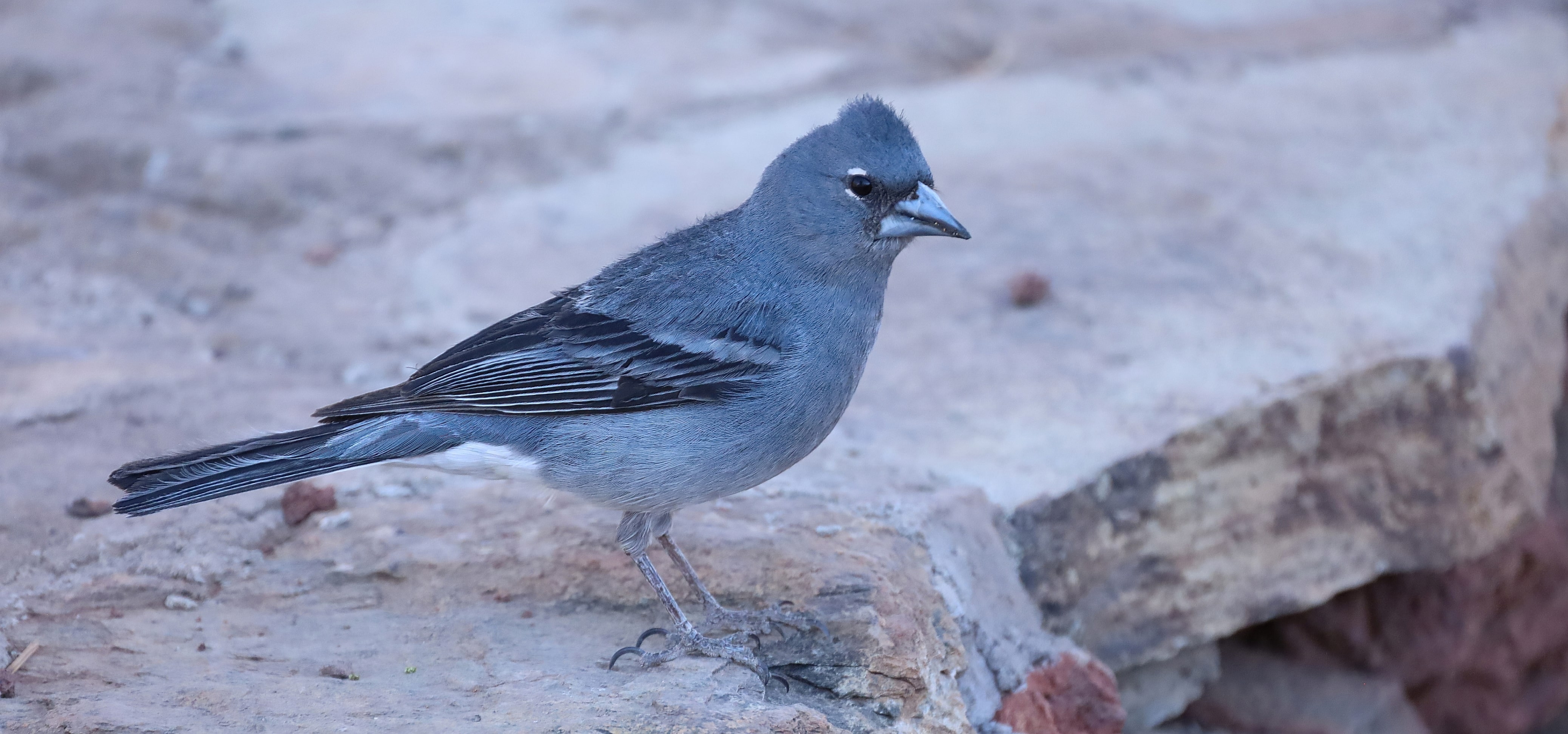
Fringilla teydea -  Tenerife Blue Chaffinch
Tenerife Blue Chaffinch 
![]() pinzón azul de Tenerife
pinzón azul de Tenerife  kék pinty
kék pinty
(Tenerife, Las Lajas)
● endemic species, lives only in Tenerife
● has a stable population at an altitude of 1000-2000 m on Mount Teide
● males are blue, females are brownish-grey blue
● the simple calls of the Tenerife Blue Chaffinch in Las Lajas (with some woodpecker calls in the background (0:14)):
● another endemic and similar species Gran Canaria Blue Chaffinch (F. polatzeki) was recently split from F. teydea and lives in Gran Canaria
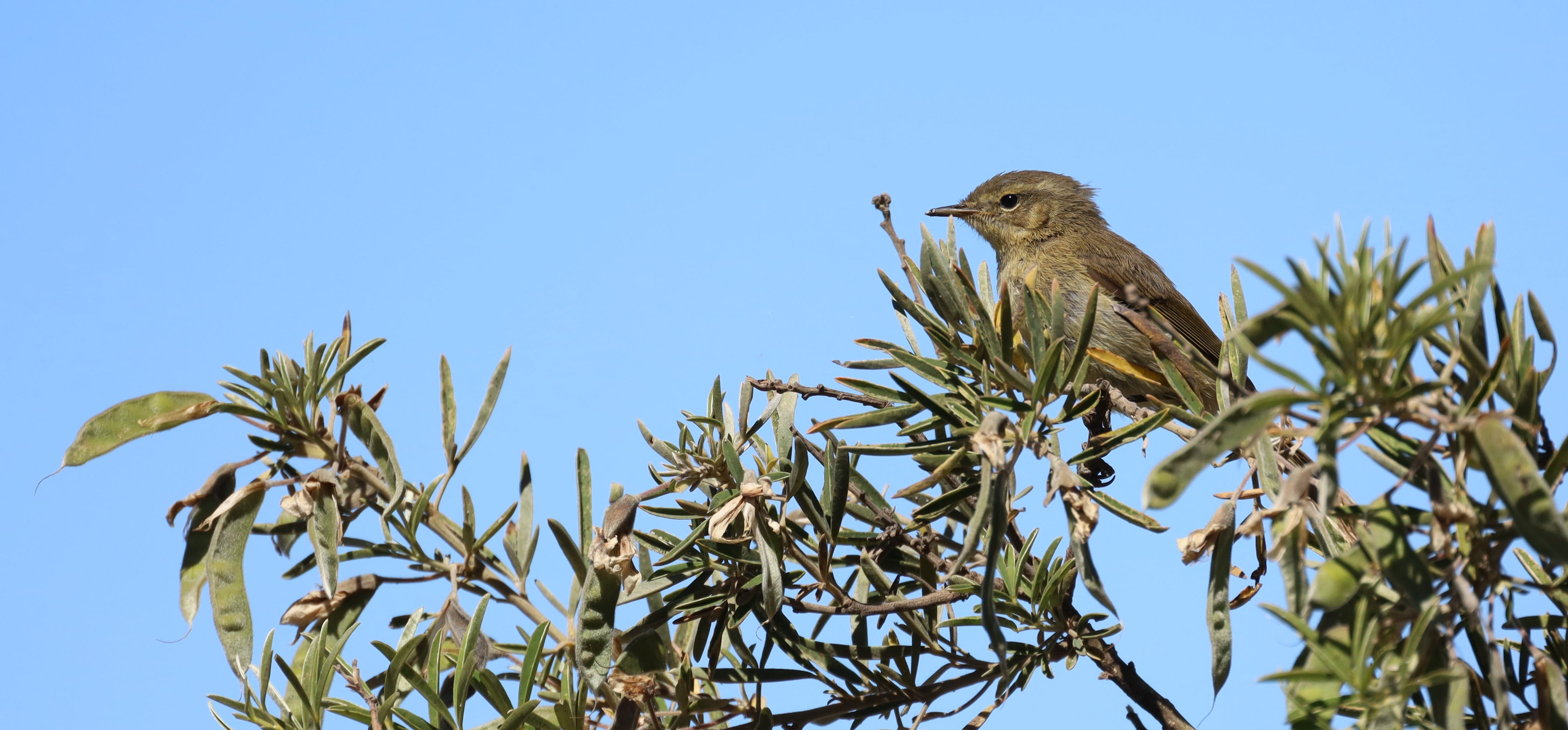
Phylloscopus canariensis -  Canary Island Chiffchaff
Canary Island Chiffchaff 
![]() mosquitero canario
mosquitero canario  Kanári-szigeteki csilpcsalpfüzike
Kanári-szigeteki csilpcsalpfüzike
(Tenerife, Las Lajas)
● endemic and resident species in the Canaries, except Fuerteventura and Lanzarote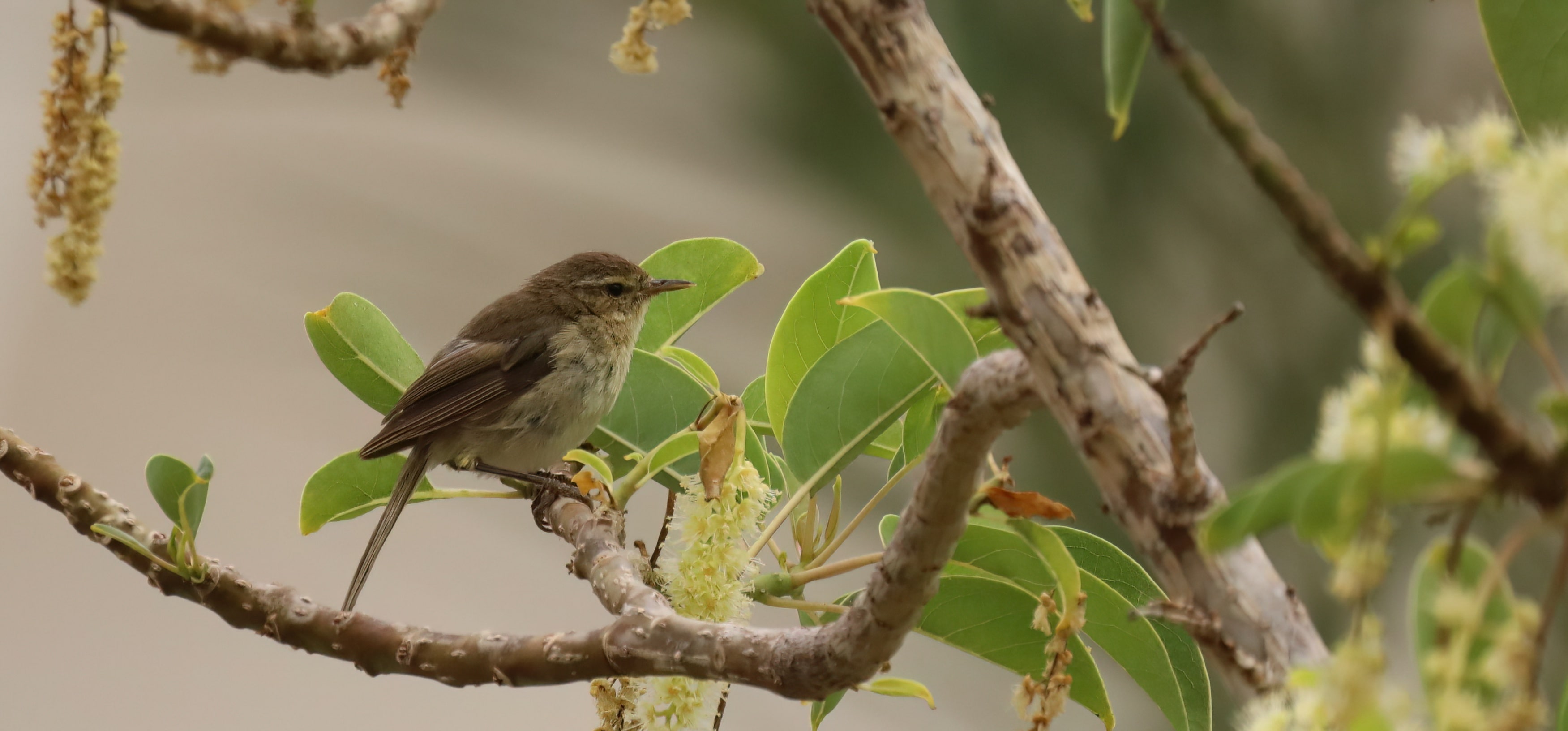
● unlike P. collybita and all of its subspecies, this new species is not migratory
● its long bill is strikingly different ➤
● plant in picture above: Chamaecytisus proliferus - Tagasaste (lucernafa)
● recenlty split form Common Chiffchaff (P. collybita), from which it differs in many parameters: it has a more brownish plumage with a little bit more striking supercilium, a much longer bill, a longer tail and shorter wings
● a constantly moving bird, often calls from the bushes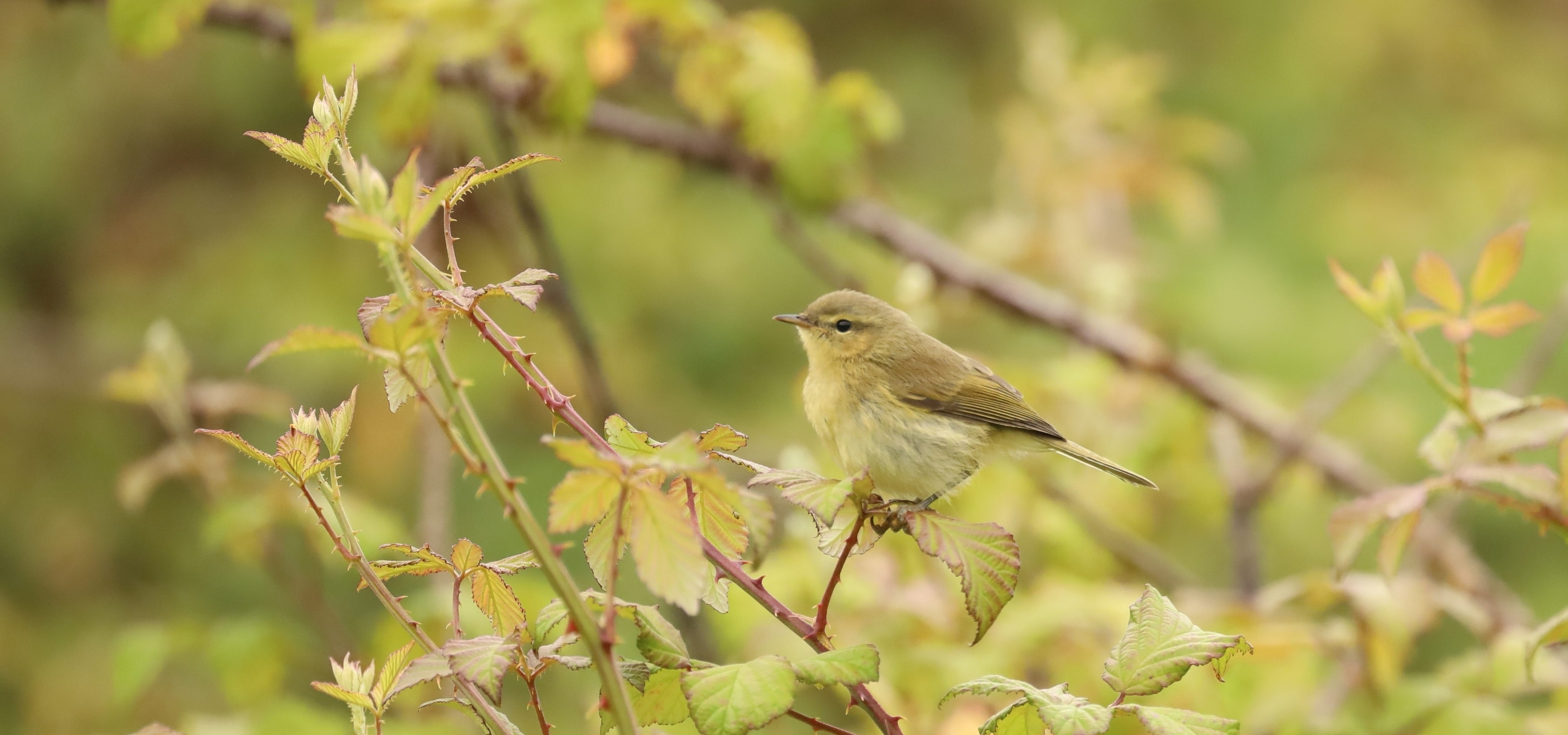
● common everywhere in the Western islands: parks, hedges, bushes, groves, forests, etc., but notice that P. collybita is also present in the islands (small image)
● calls of the Canary Chiffchaff:
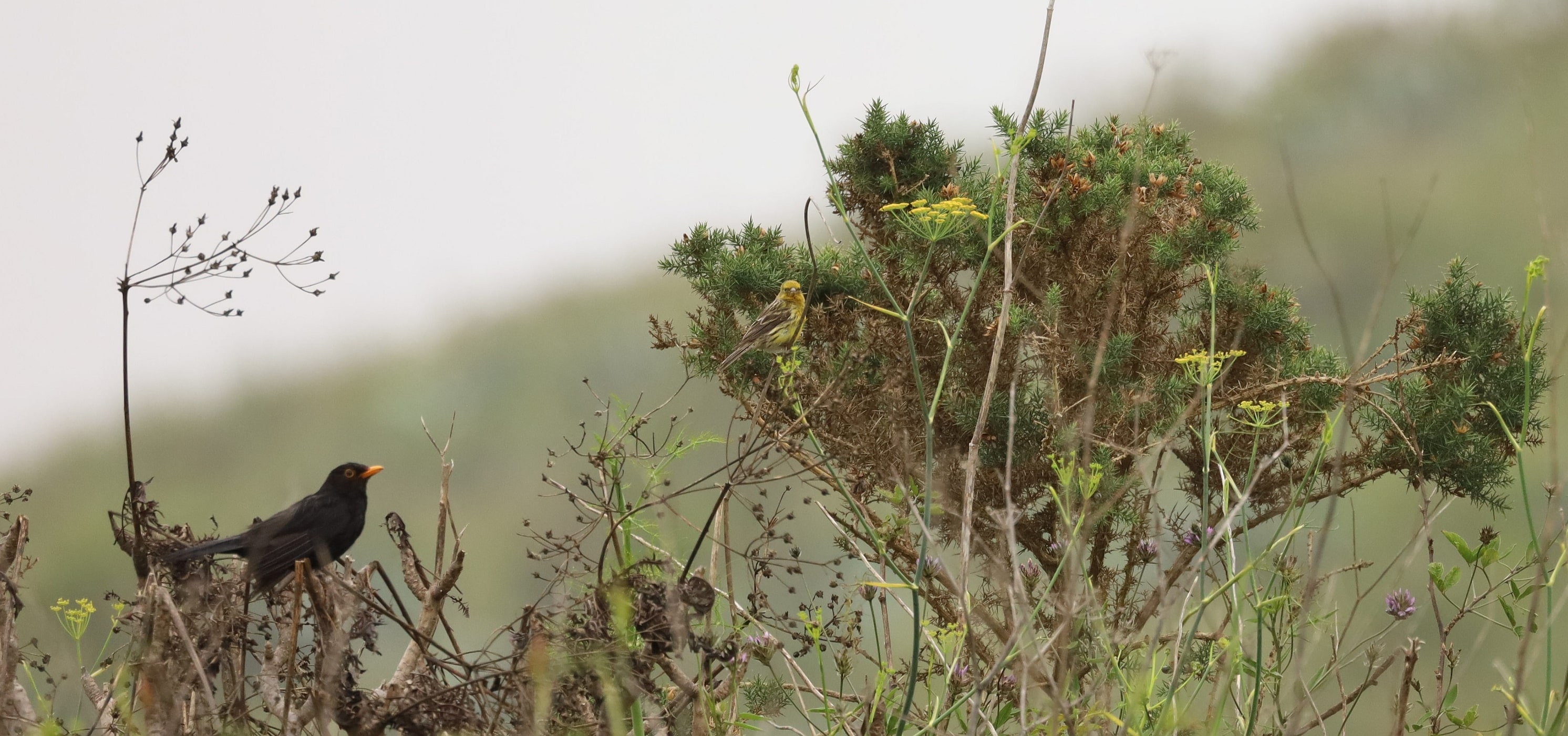
Turdus merula cabrerae -  Blackbird
Blackbird 
![]() mirlo común
mirlo común  fekete rigó
fekete rigó
(Tenerife, Charcas de Erjos)
● ssp cabrerae: endemic and resident in Madeira and in the Canaries, it has somewhat shorter wings and tail (Hounsome 1993)
● common but not as dominantly common as in the continental Europe
● plants in picture:
- bush with the canary: Ulex europaeus - Gorse (sünzanót)
- purple flower: Bituminaria bituminosa - Arabian Pea (korpás borsó)
- yellow umbels: Foeniculum vulgare - Fennel (édeskömény); the air of the whole site (Charcas de Erjos) was filled with fragrance of this wild and locally abundant plant
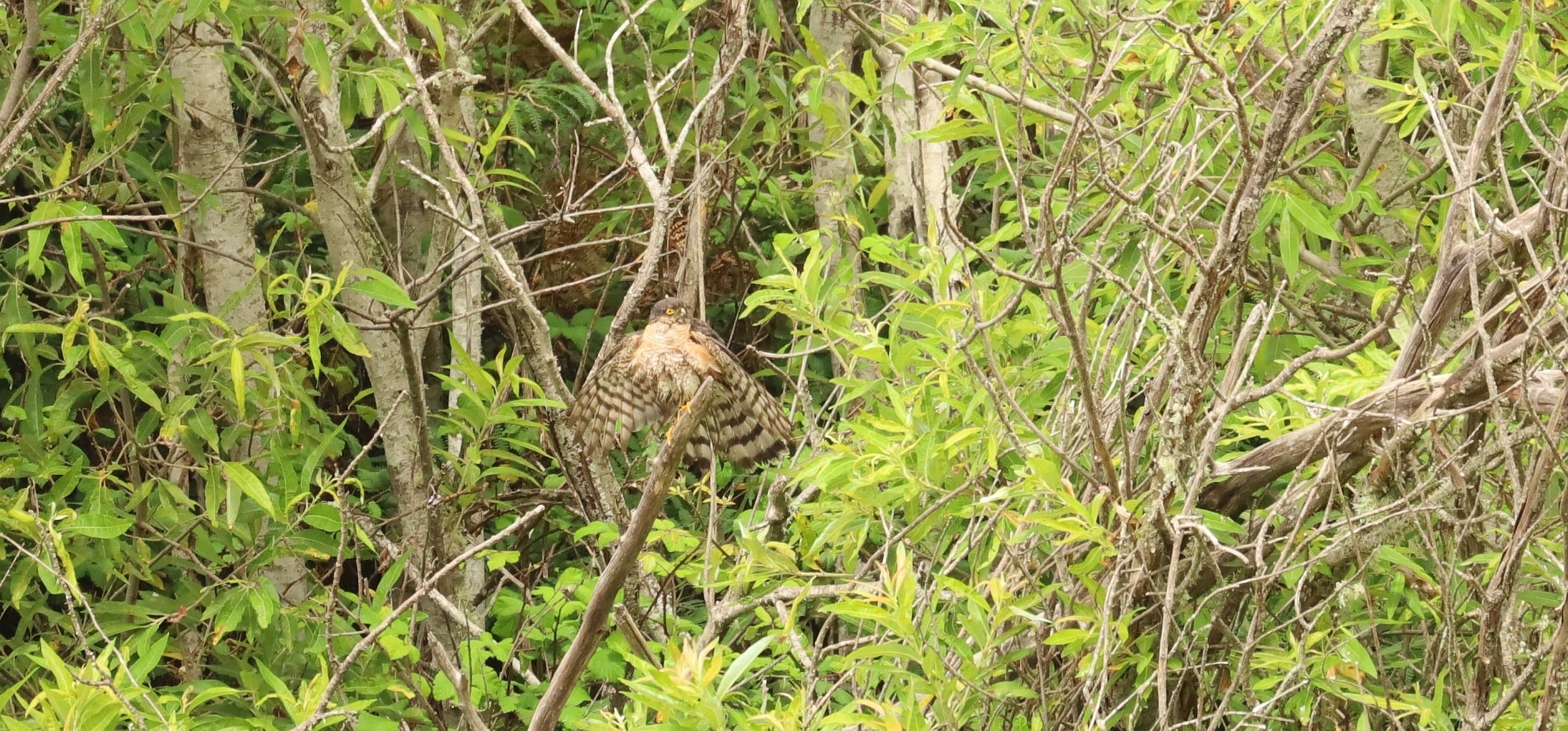
Accipiter nisus granti -  Macaronesian Sparrowhawk
Macaronesian Sparrowhawk 
![]() gavilán
gavilán  karvaly
karvaly
(Tenerife, Charcas de Erjos)
● a sparrowhawk dries his feathers in the hedge after a morning rain
● a fast predator of songbirds in the thickets of temperate cloud forests and groves
● only saw it once
● ssp granti: Canarian-Madeirian endemic subspecies (except Fuerteventura and Lanzarote), smaller and somewhat darker
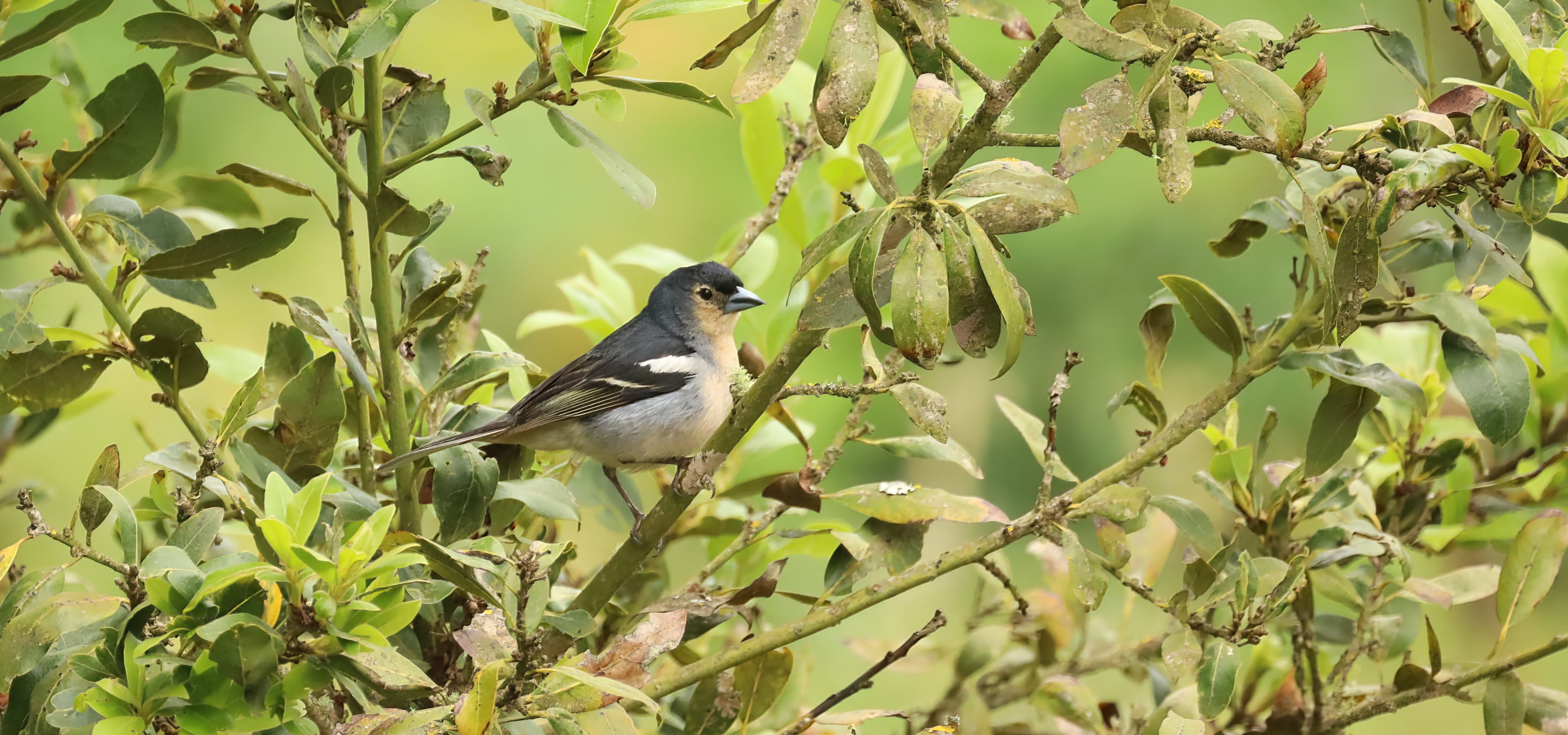
Fringilla coelebs canariensis
Tenerife, Erjos, Monte del Agua the different shaped crown and back is deeper slate-blue, face and belly faded, less color on wings song:
|
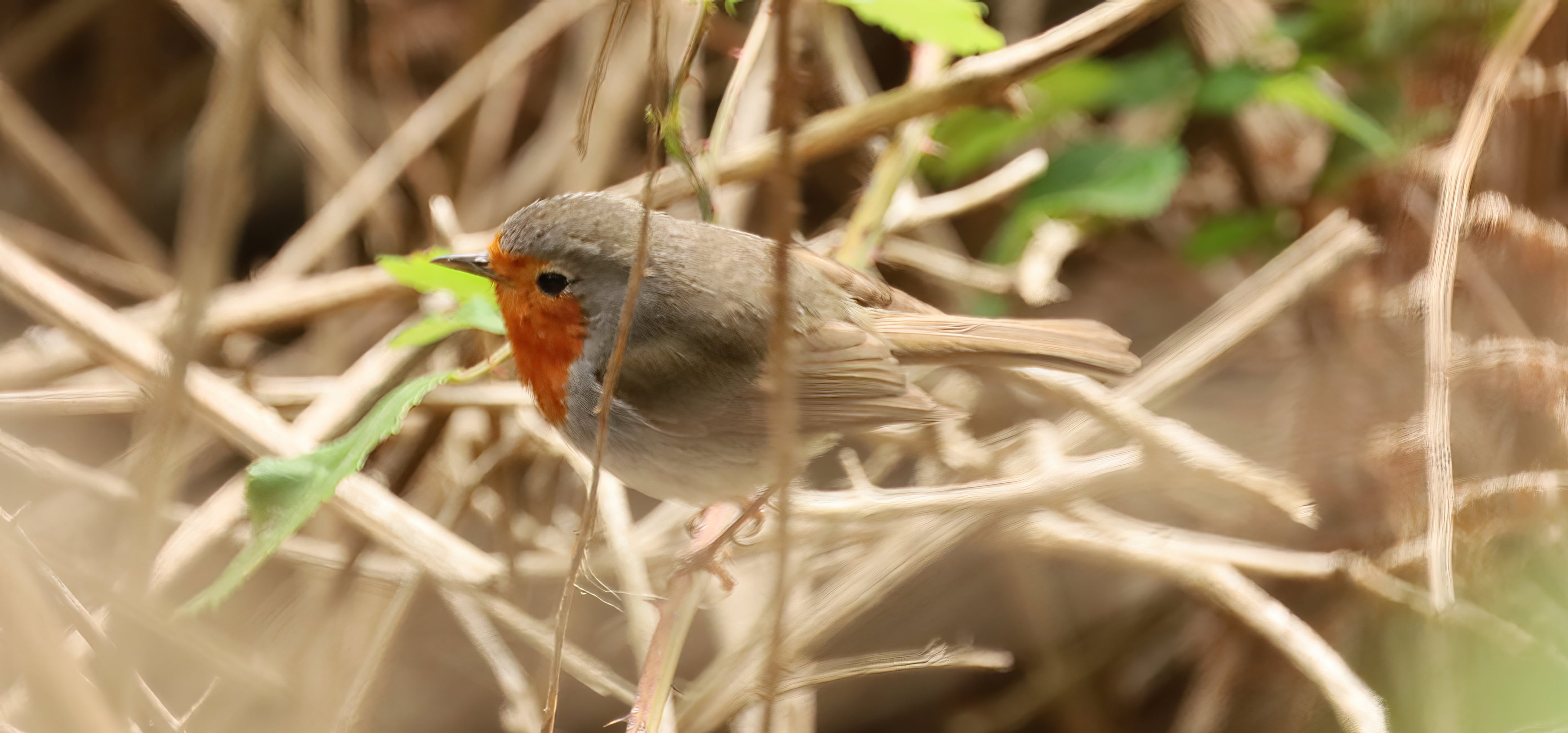
Erithacus rubecula superbus
Tenerife, hiking trail PR-TF 53 (Erjos 🠊 Los Silos) pale white eyering, belly and vent are full white, color tone of breastplate is deeper
song:
|
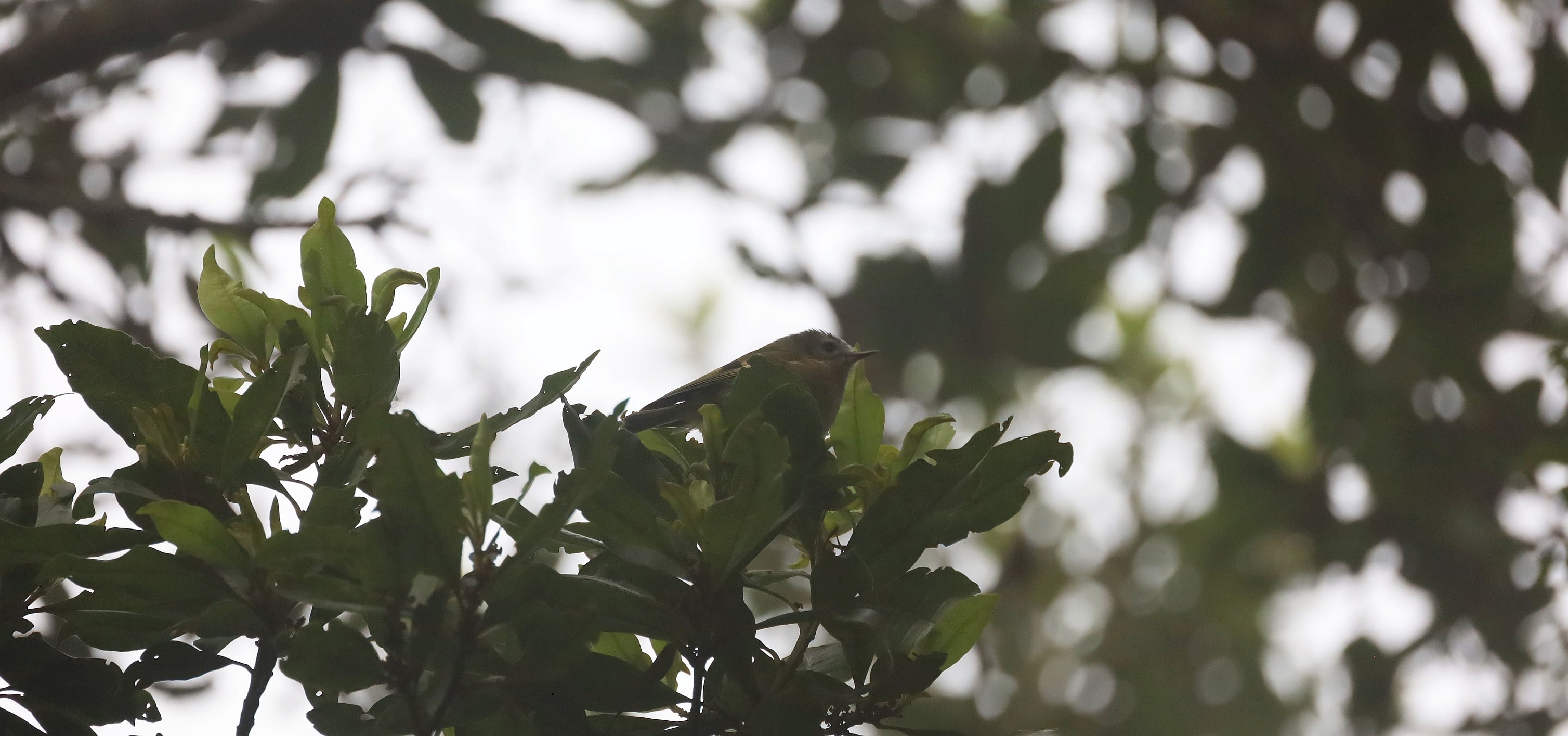
Regulus regulus teneriffae
Tenerife, Erjos, Monte del Agua smaller body size, longer bill, broader black stripe on head, generally brighter
song:
|
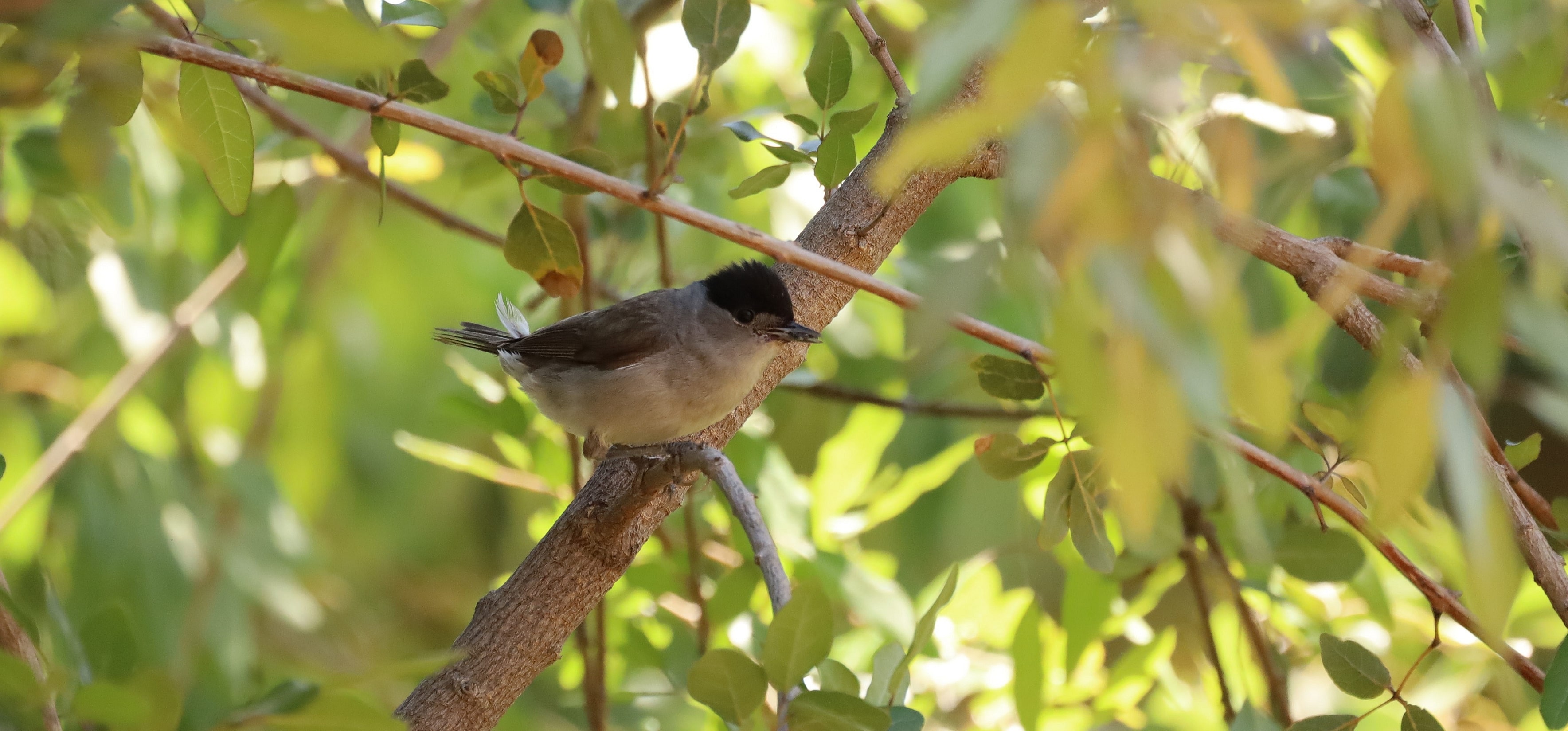
Sylvia atricapilla heineken
Tenerife, Puerto de la Cruz, Palmetum males are browner above, females are more rufous above |
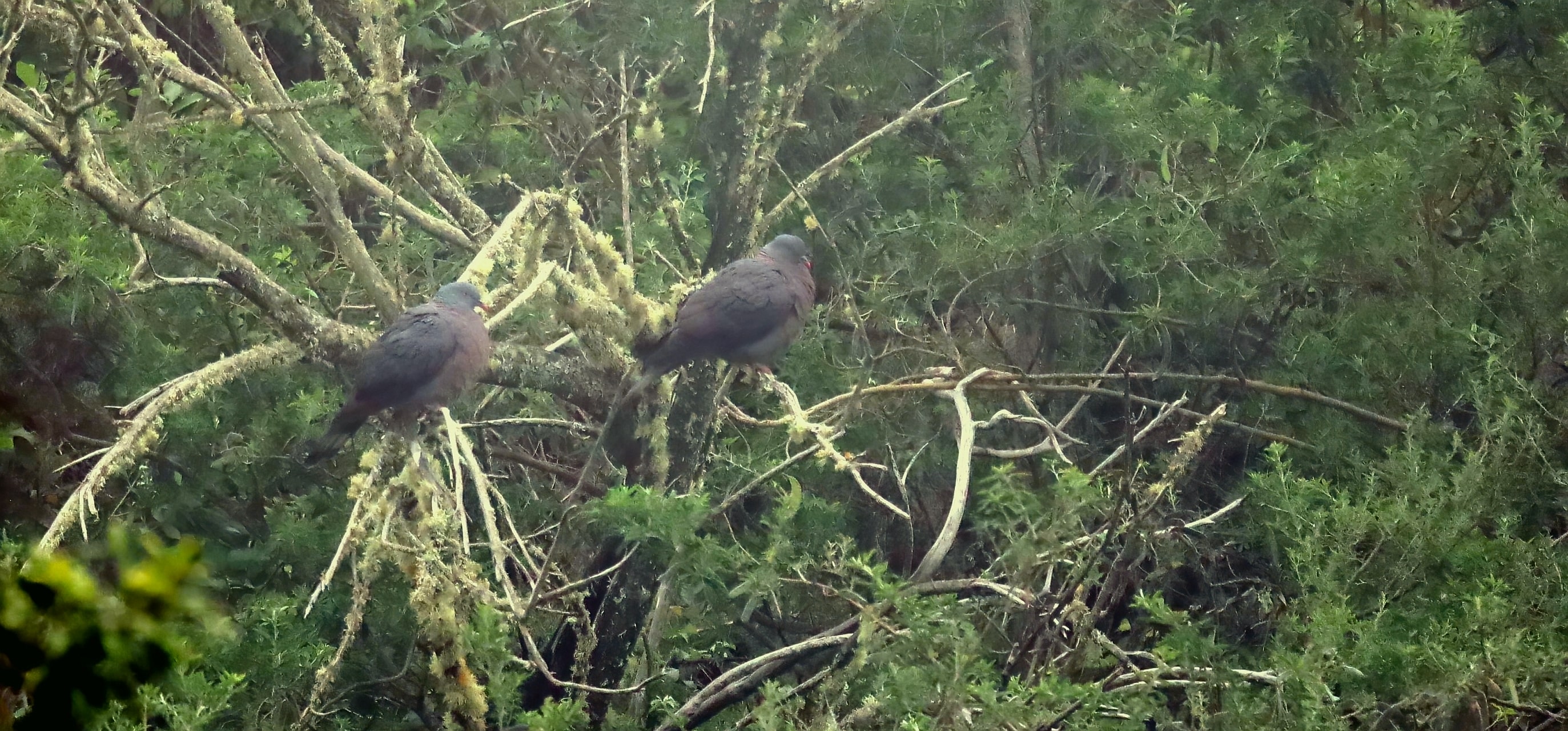
Columba bollii -  Bolle's Pigeon
Bolle's Pigeon 
![]() paloma turqué
paloma turqué  szürkefejű babérgalamb
szürkefejű babérgalamb
(Tenerife, hiking trail PR-TF 53 (Erjos 🠊 Los Silos), near Erjos)
● photo was taken in dense fog and light rain, the picture had to be heavily modified afterwards
● grey body, grey head, wine-red breast, red bill with yellow tip, grey band on tail (but not at the very end!)
● its voice is a really weird nasal cooing
● easy to hear but hard to see them in the forest canopy, mostly gregarious (I saw groups of 2-5 and once a group of 10)
● the lichen on the dead tree is maybe an Usnea sp., the trees in the background are Chamaecytisus proliferus (Tagasaste)
● according to some botanical sources, laurel cloud forests ('laurisilva') are made up of several main species, including:
Laurus azorica - Azores laurel
Persea indica - viñatigo
Myrica faya - faya
Erica arborea - tree heather
Visnea mocanera - mocan
Chamaecytisus proliferus - tagasaste
Rhamnus glandulosa - sanguino
Ilex spp. - holly
Ocotea foetens - stinkwood
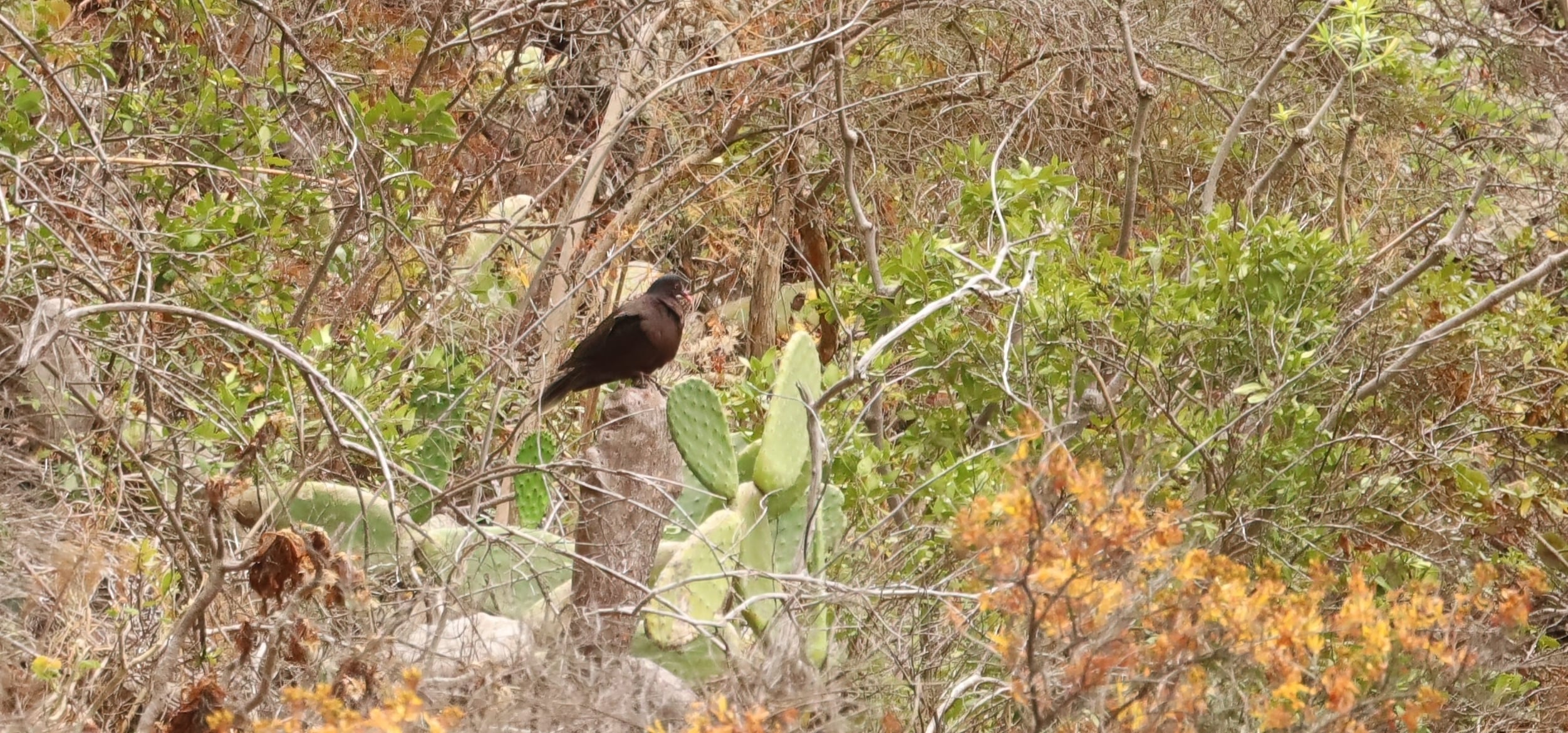
Columba junoniae -  White-tailed Laurel Pigeon
White-tailed Laurel Pigeon 
![]() paloma rabiche
paloma rabiche  szürkefarkú babérgalamb
szürkefarkú babérgalamb
(trail PR-TF 53 (Erjos 🠊 Los Silos), near Los Silos)
● the species is "near threatened", there are only about 2000 living individuals today, the population is relatively stable (1000–1200 on La Palma, 120–160 on La Gomera and 80–120 on Tenerife, recently introduced to El Hierro)
● lives on steep, inaccessable, densely vegetated rock slopes; feeds on fruits and seeds
● dark brown body with a wine red shade, head is lighter, tip of the tail is off-white ➤
● I saw 2 of them flying quickly in the cloud forest of Monte del Agua from the well known lookout point (small photo) and heard some of them on the trail of Monte del Agua from the high canopy, also heard 2 from the bushes of high cliff gorges at Los Silos (and saw here 1 perched on a cactus for a while on a distant slope: photo above)
● best places to find in Tenerife: vegetated mountain habitats and forests near Erjos, Los Silos and Tigaiga (La Grimona)
● its voice is a characteristic pigeon-voice (the forest was loud with Tenerife Goldcrests):
● cactus: Opuntia ficus-barbarica - Prickly Pear Cactus
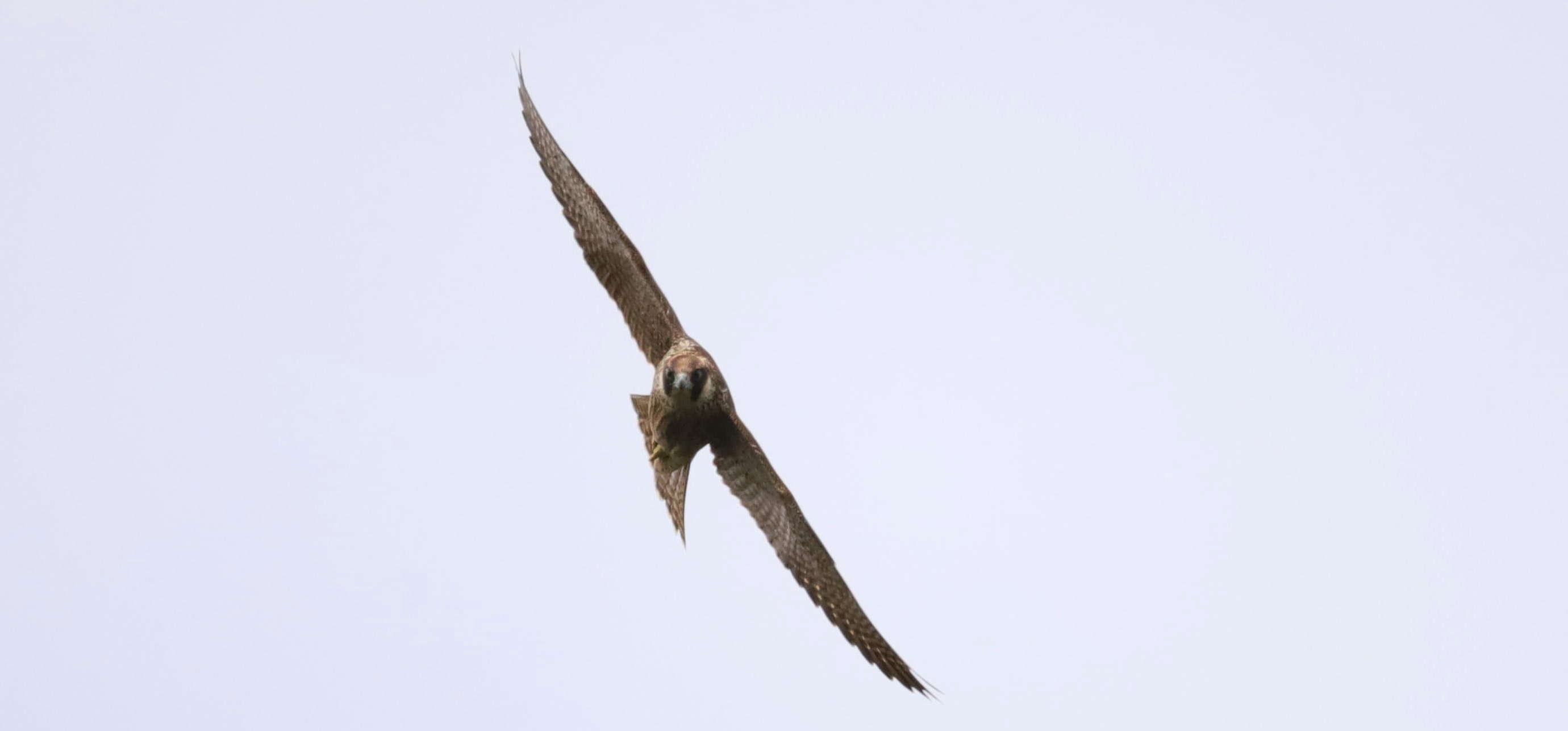
Falco peregrinus pelegrinoides -  Barbary Falcon
Barbary Falcon 
![]() halcón tagarote
halcón tagarote  sivatagi sólyom
sivatagi sólyom
(Tenerife, Erjos, Monte del Agua)
● ssp pelegrinoides: according to Wikipedia, pelegrinoides could be a species-level taxon from a biological and ecological point of view, but it remains a subspecies due to its close phylogenetic relationship to the nominate
● coastal or ravine cliffs are needed for nesting, where its favourite food, pigeons are also mostly common
● almost extinct from Tenerife but rediscovered in 2007, now the population is slowly increasing
● I saw two young falcons during the trip: the first was patrolling above the 'laurel pigeon-forests' of Erjos and the second above the beach of Laguna de Sotavento, near Costa Calma
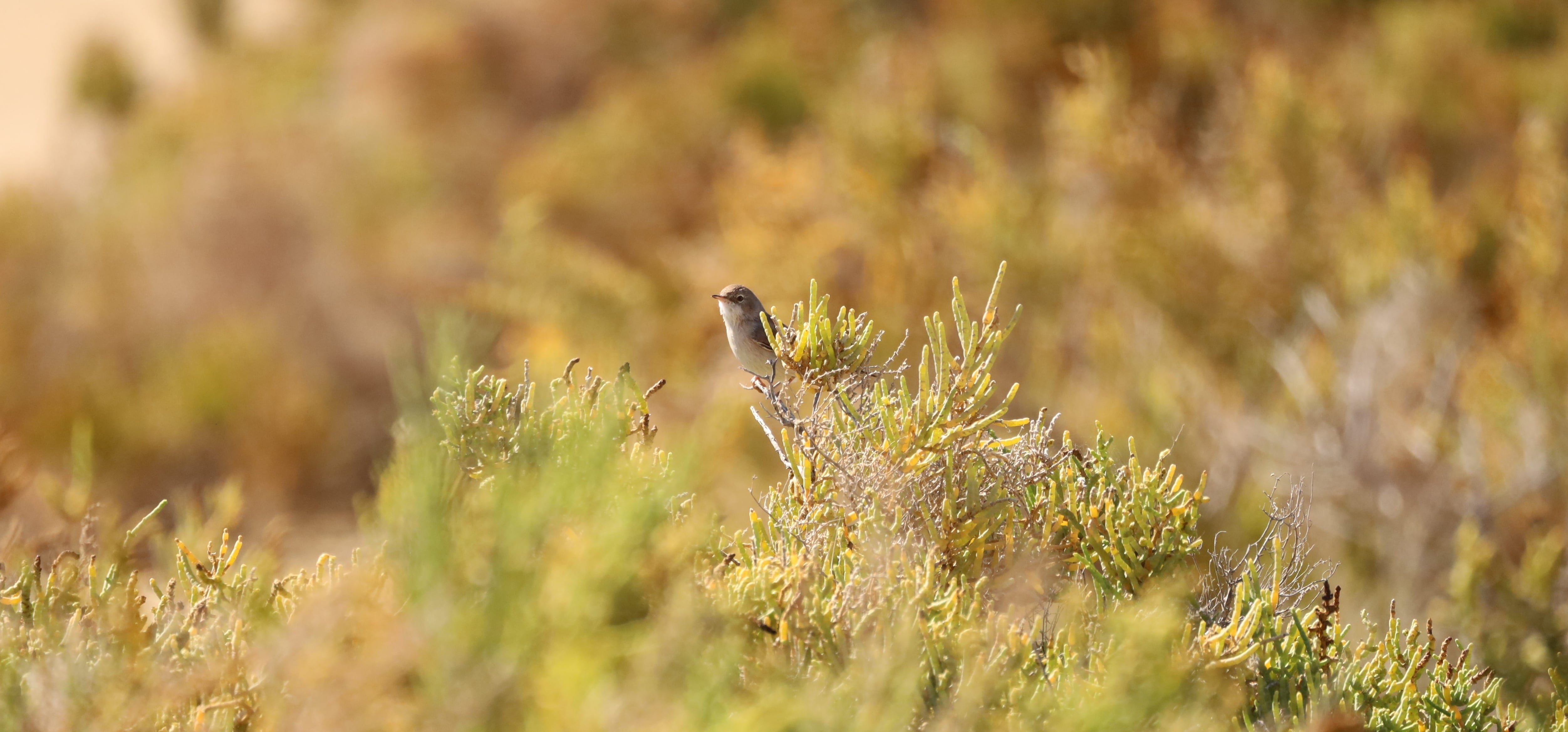
Sylvia conspicillata orbitalis -  Spectacled Warbler
Spectacled Warbler 
![]() curruca tomillera
curruca tomillera  törpeposzáta
törpeposzáta
(Fuerteventura, Costa Calma, Laguna de Sotavento)
● ssp orbitalis: subspecies of the Macaronesian region, with somewhat darker plumage than continental forms
● just like its relatives, it is also a very elusive bird
● I found only 2 places with these warblers, both of these habitats were much more vegetated and much less arid than most areas: Charcas de Erjos is a seasonal lake system with dense natural hedges, Laguna de Sotavento is a coastal intertidal zone with halophyte succulent shrubs
● plant: Arthrocnemum macrostachyum - Glaucous glasswort
Numenius phaeopus phaeopus -  Whimbrel
Whimbrel 
![]() zarapito trinador
zarapito trinador  kis póling
kis póling
(Fuerteventura, Costa Calma, Piedras Apiladas)
● seen the species only once here, at a rocky part of the long and mainly sandy beach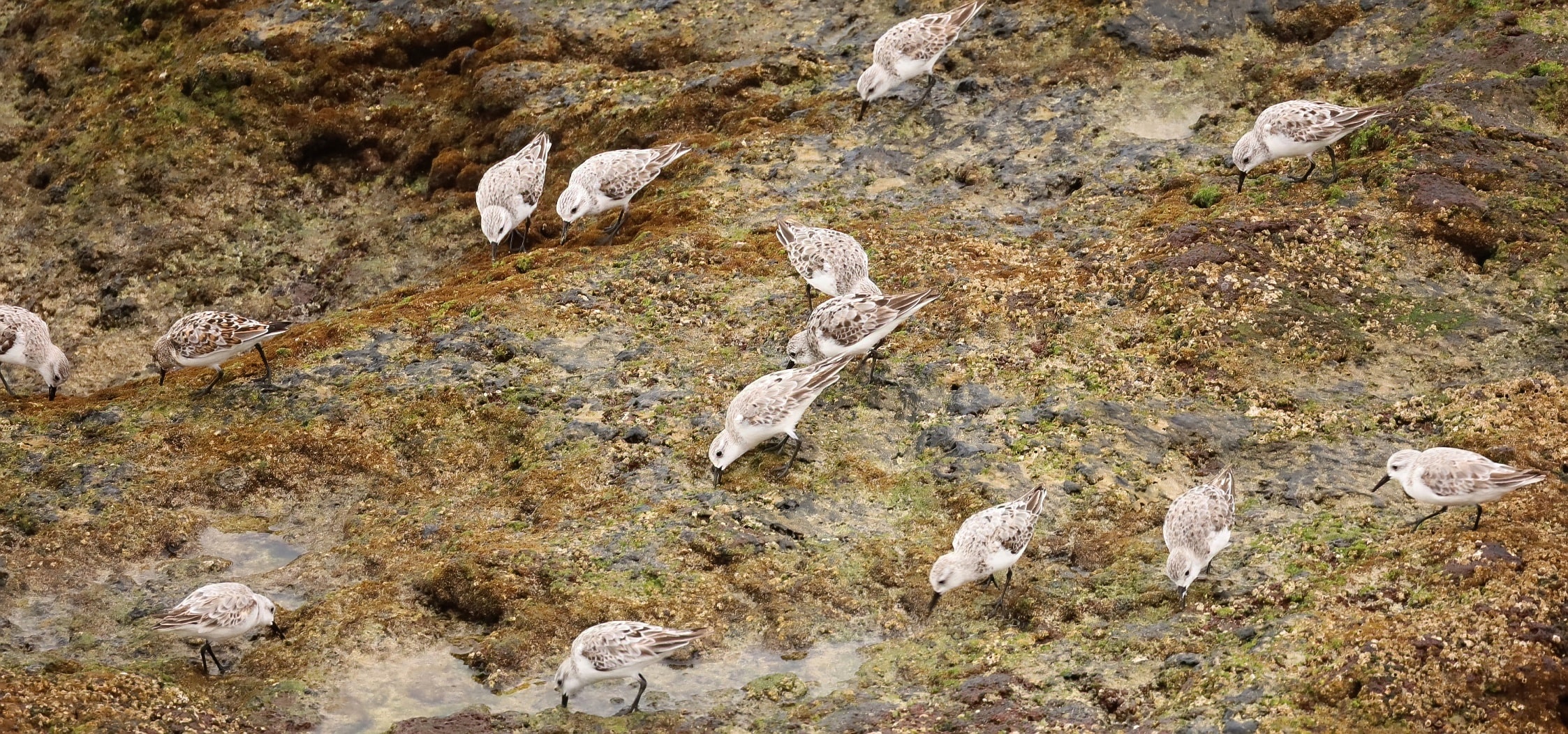
● a small group of Sanderling (C. alba) were also here looking for breakfast
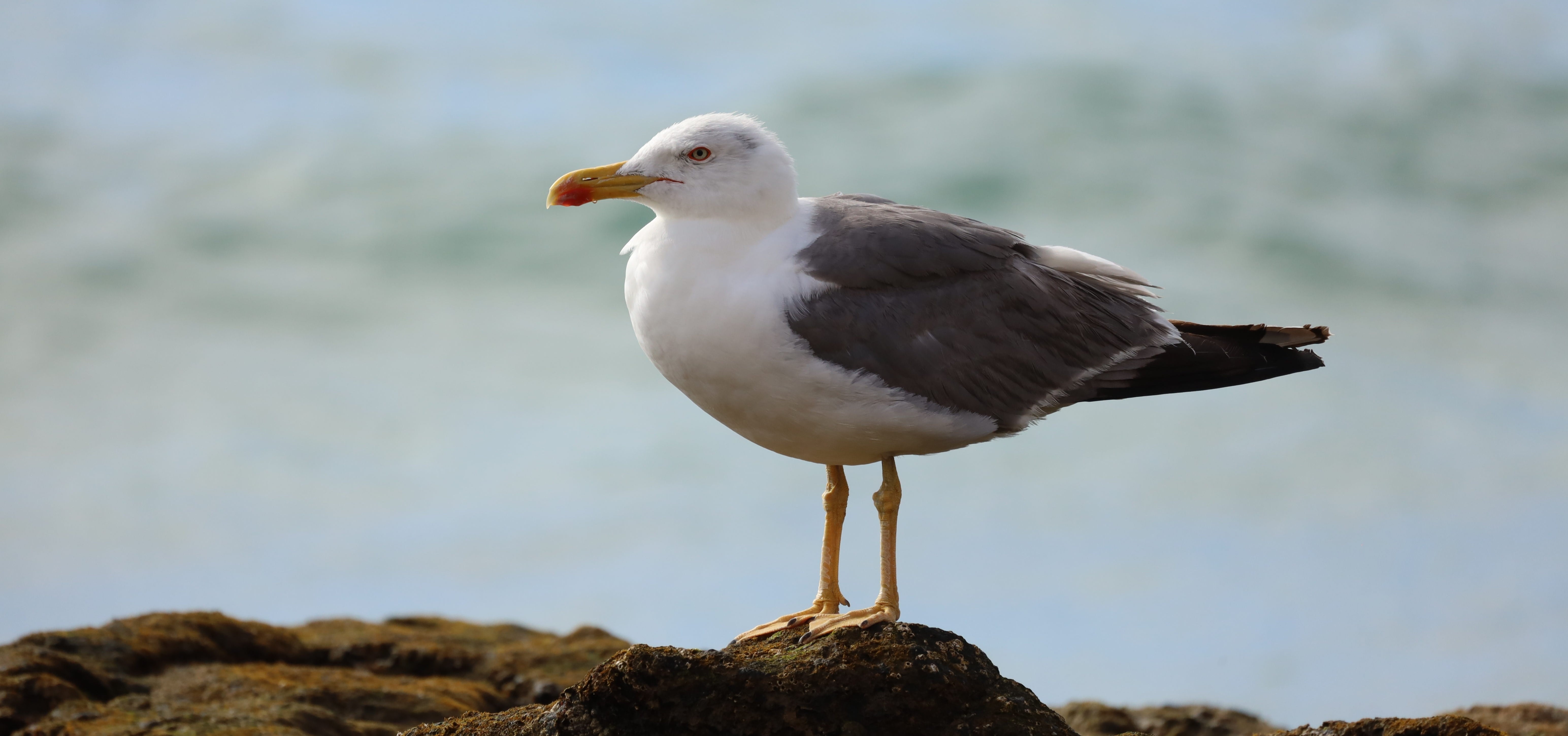
Larus michahellis atlantis -  Yellow-legged Gull
Yellow-legged Gull 
![]() gaviota patiamarilla
gaviota patiamarilla  sárgalábú sirály
sárgalábú sirály
(Fuerteventura, Costa Calma, Laguna de Sotavento)
● ssp atlantis: very similar to the nominate but there are some marks to look for: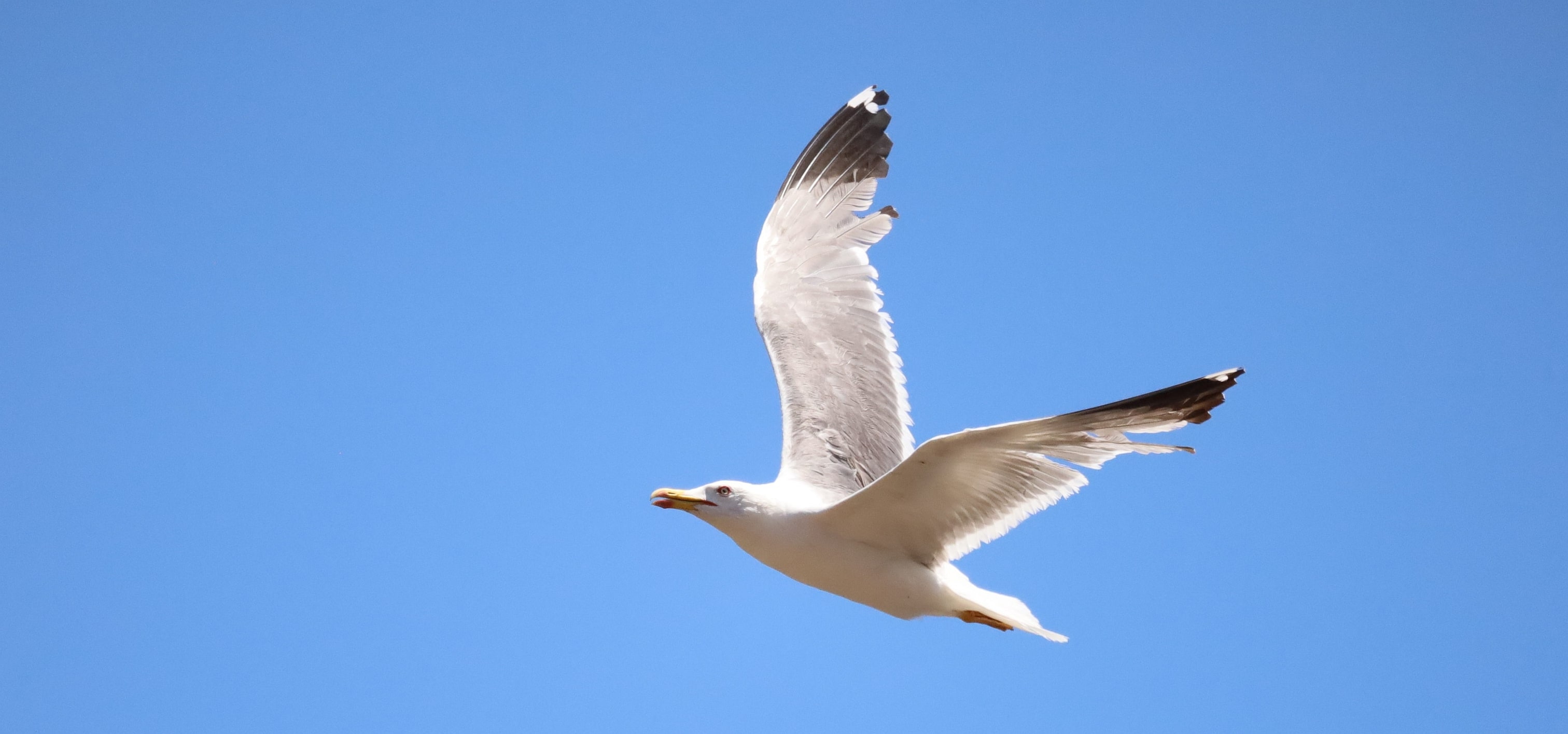
- adults have deep yellow legs, and more black and less white on wingtips compared to continental nominate (notice the lack of any white here in the closed wingstips (main image above))
- the distinctive hood-like heavy 'Atlantis-striking' on the head is not seen in the gulls of the Canaries and other local populations of the region, it is only visible in the winter plumage of the 'Azores gulls' (variant of L. m. atlantis) 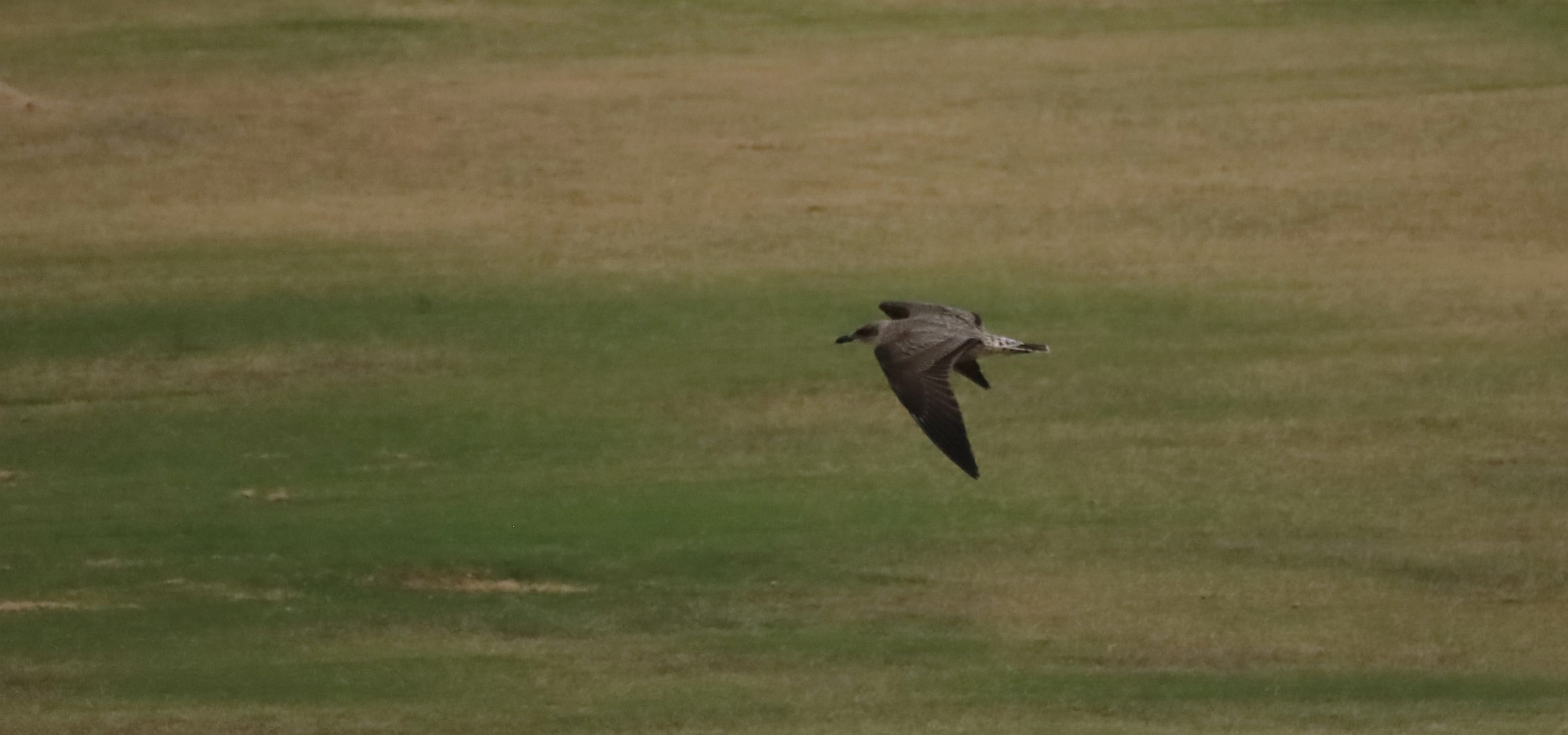
- juveniles and 1st-CY birds have more dark pattern on head and underparts and have dark wings almost without any pale patches
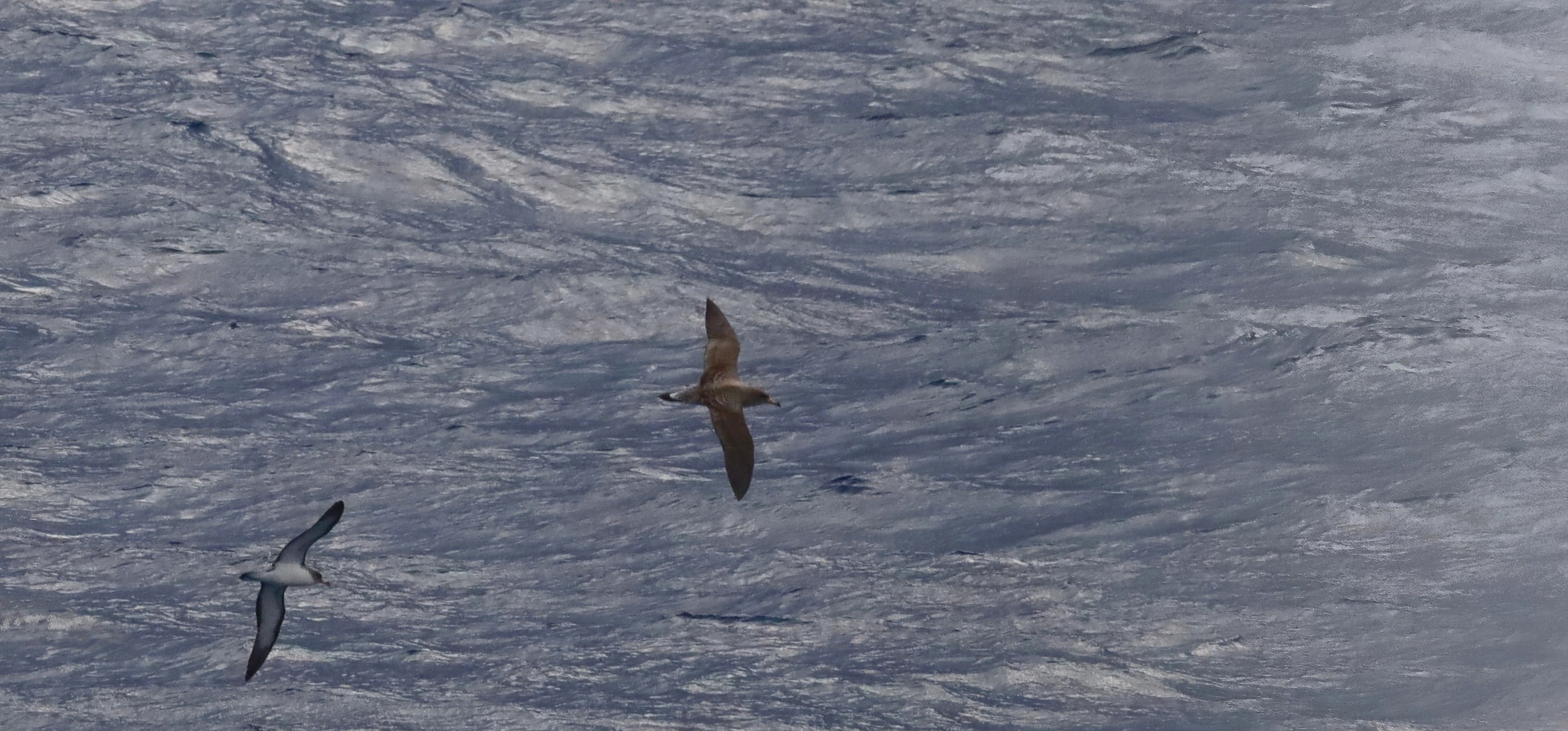
Calonectris borealis -  Cory's Shearwater
Cory's Shearwater 
![]() pardela atlántica
pardela atlántica  halványcsőrű (vagy sárgacsőrű) mediterrán vészmadár
halványcsőrű (vagy sárgacsőrű) mediterrán vészmadár
(somewhere between Tenerife and Gran Canaria...)
● spotted singly or in small groups in the open sea, and seen in a large fishing group off the coast of Morro Jable
● the only shearwater species found around the islands in this trip
● lives for more than 20 years, spending almost all of its life in the open ocean, flies more than 40.000 km per year
● a surprisingly large bird, with a wingspan of 120-125 cm (rarely seen up close)
● Cory's mainly differs from the Mediterranean species Scopoli's Shearwater (Calonectris diomedea) in that its wingtips are more black and has this remote Atlantic distribution area ( 🠊 a perfect ID guide)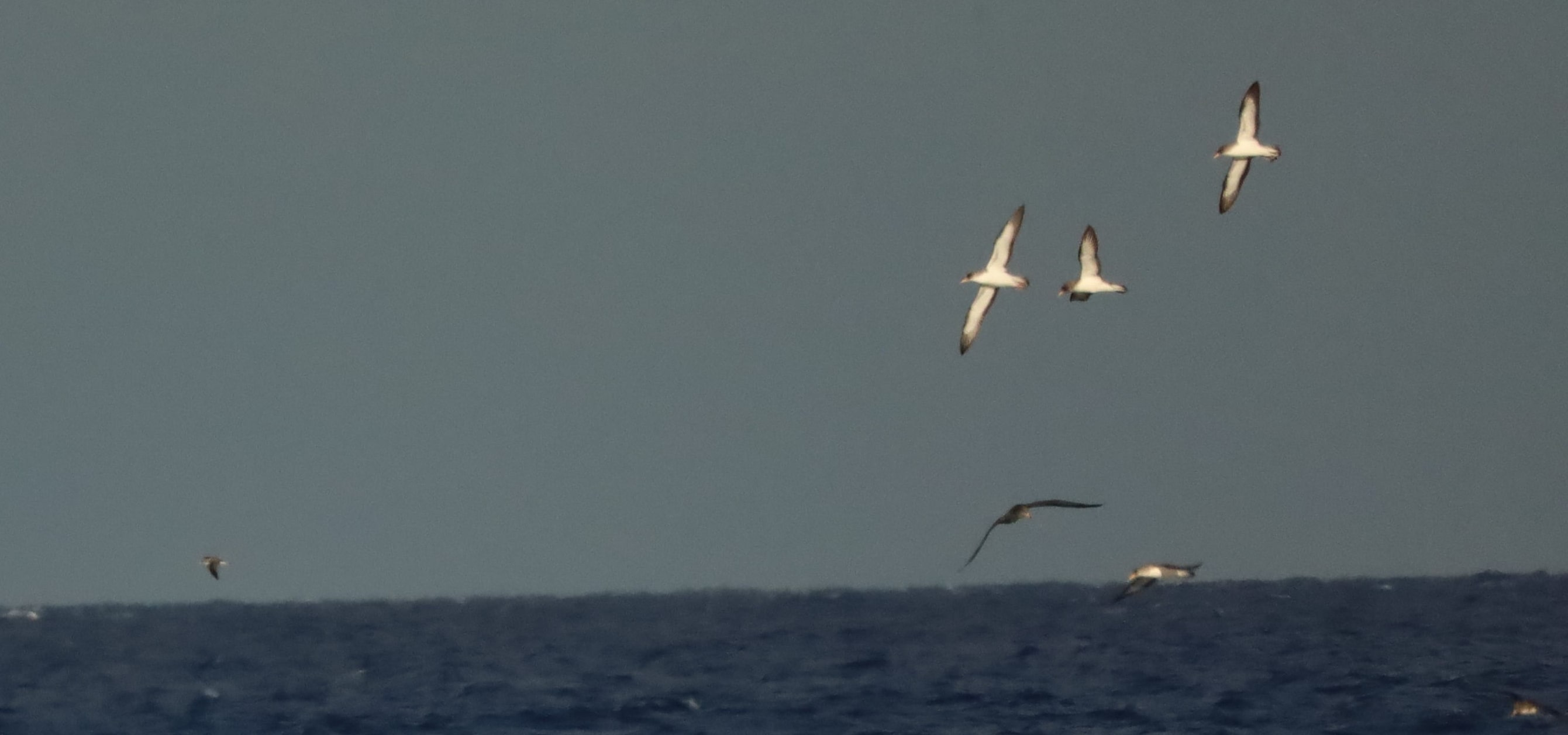
● some suspicious birds were found in the Morro Jable group, but the evidence was weak to clearly identify them as C. diomedea. Wingtips are more white but there can also be a light effect, and some variations in the extent of black/white are also known on the wingtips of the Cory's. (see the middle one of the three birds in the small picture) ➤
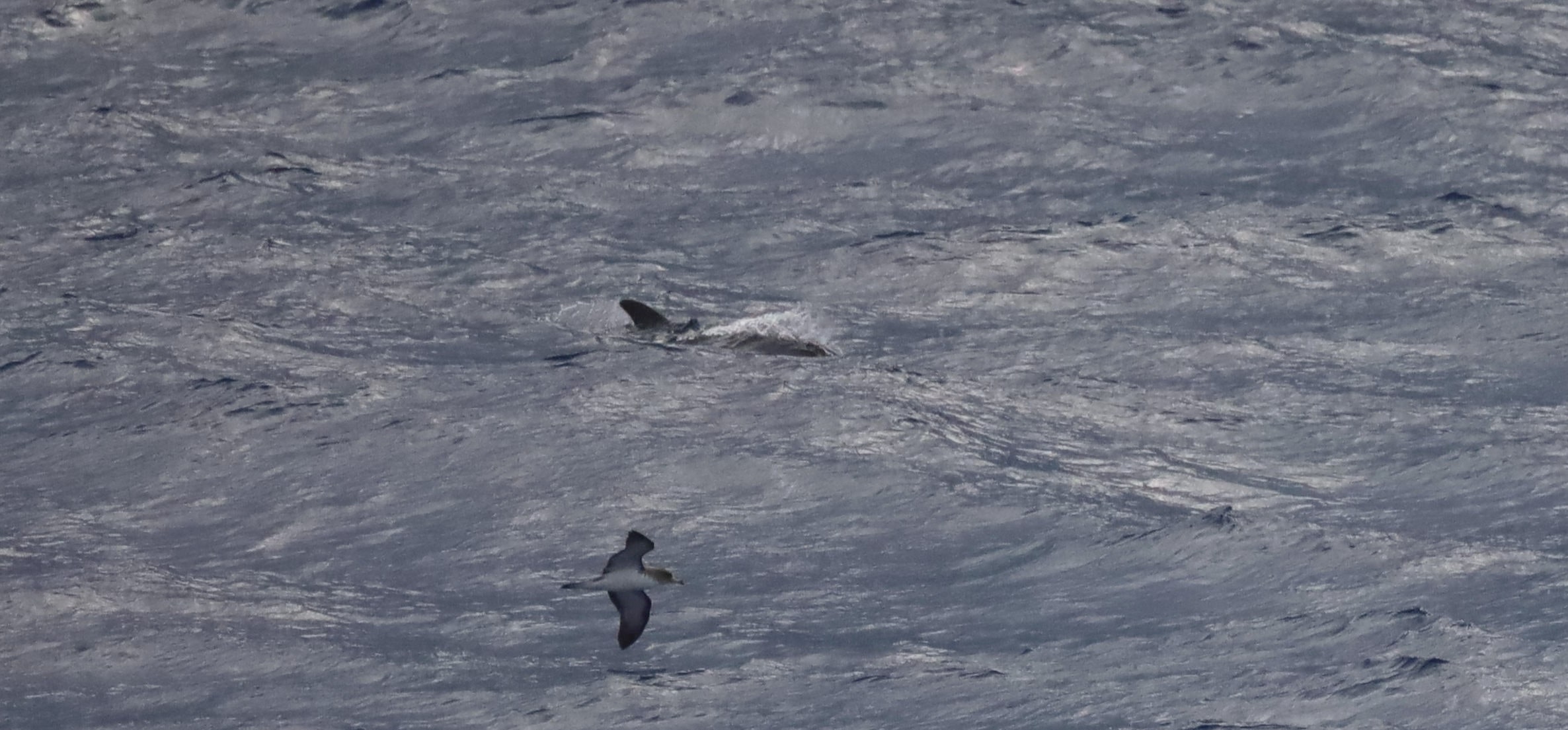
Stenella frontalis -  Atlantic Spotted Dolphin
Atlantic Spotted Dolphin 
![]() delfín pintado
delfín pintado  foltos delfin
foltos delfin
(somewhere between Tenerife and Gran Canaria...)
● I only noticed this dolphin at home in the corner of one of the pictures with shearwaters
● Common Dolphin (Delphinus delphis delphis) or Rough-toothed Dolphin (Steno bredanensis) are also reasonable options and I'm not at all sure in this identification
● shape of the dorsal fin is slightly curved (Bottlenose and Pilot Whale have more curved fins, and are larger in body size)
● according to an official local source (Herrera 2021) Bottlenose, Pilot Whale and Spotted Dolphin are the most common species in the region, Rough-toothed is rare
● I would highly appreciate if anybody could help to identifiy correctly this dolphin (unfortunately there are no more photos)
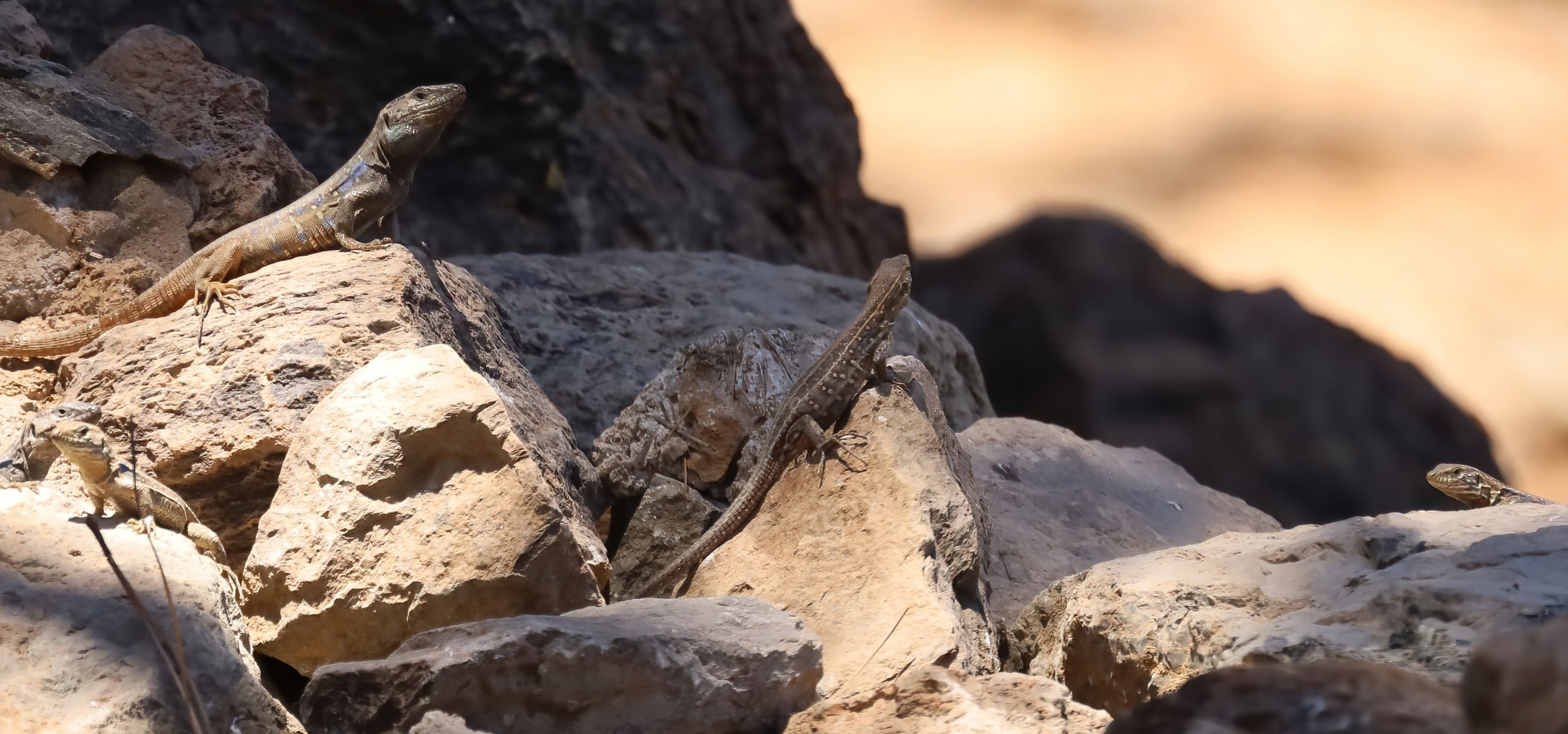
Gallotia galloti galloti
(Tenerife, Las Lajas) |
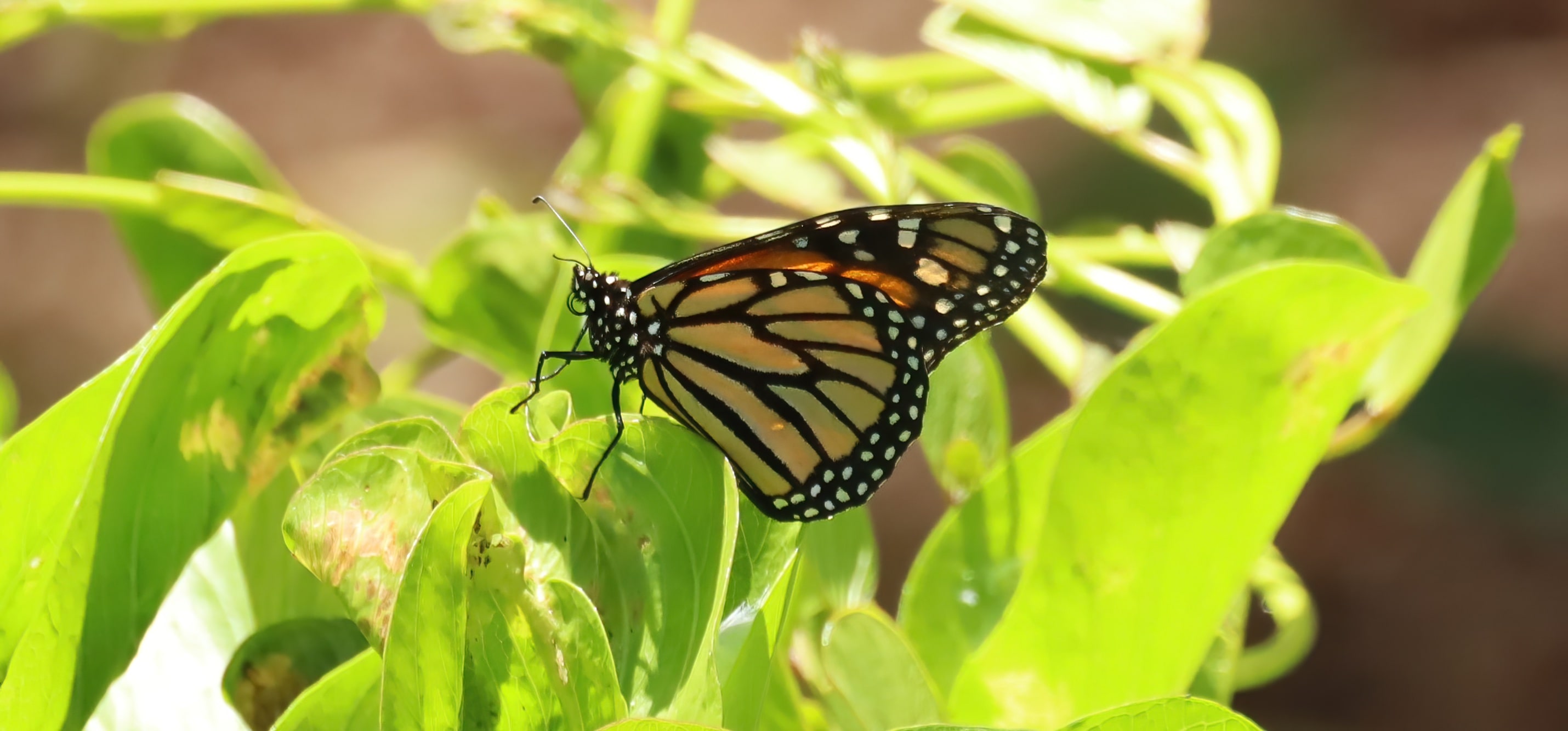
Danaus plexippus
(Tenerife, Palmetum) |
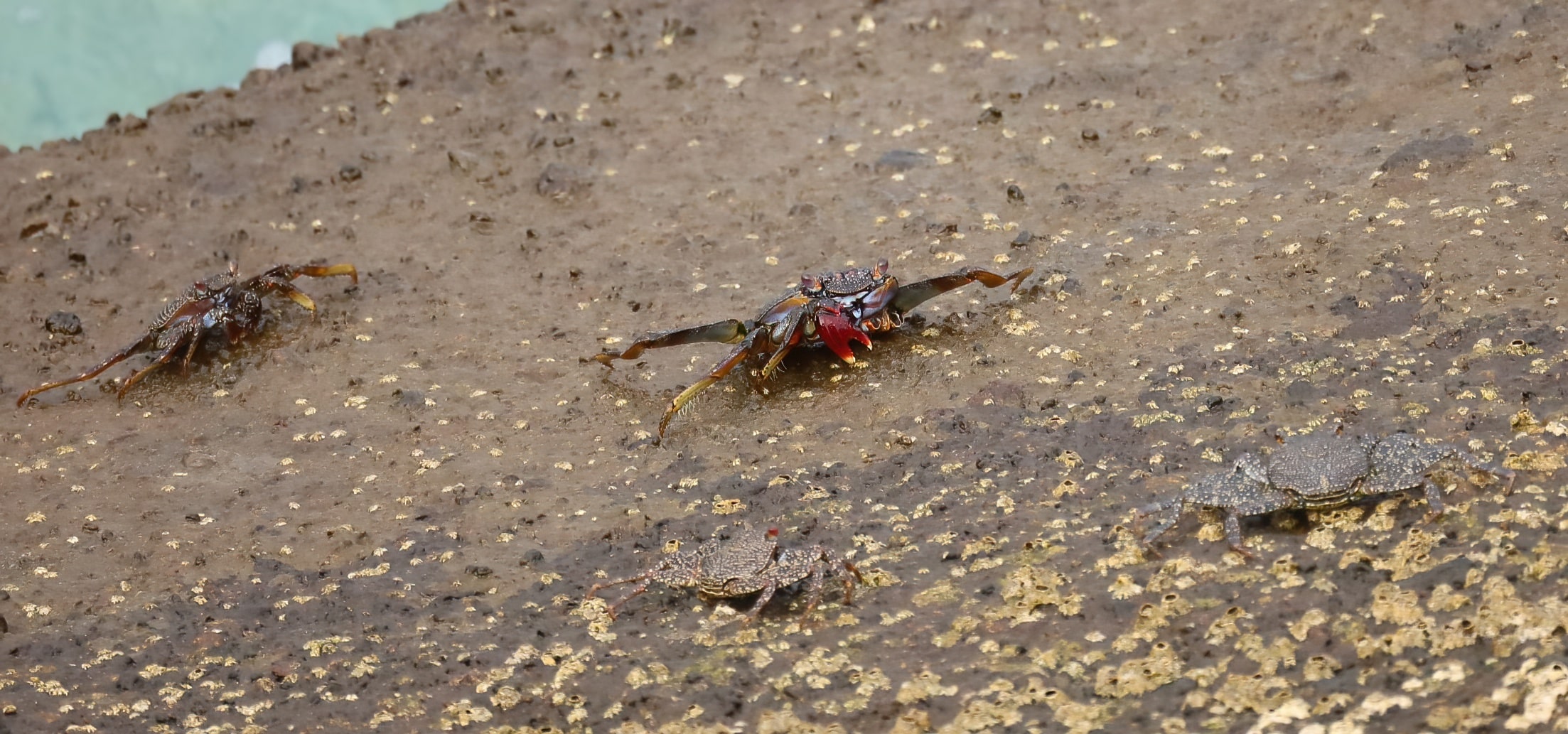
Grapsus adscensionis
(Tenerife, Los Cristianos) |
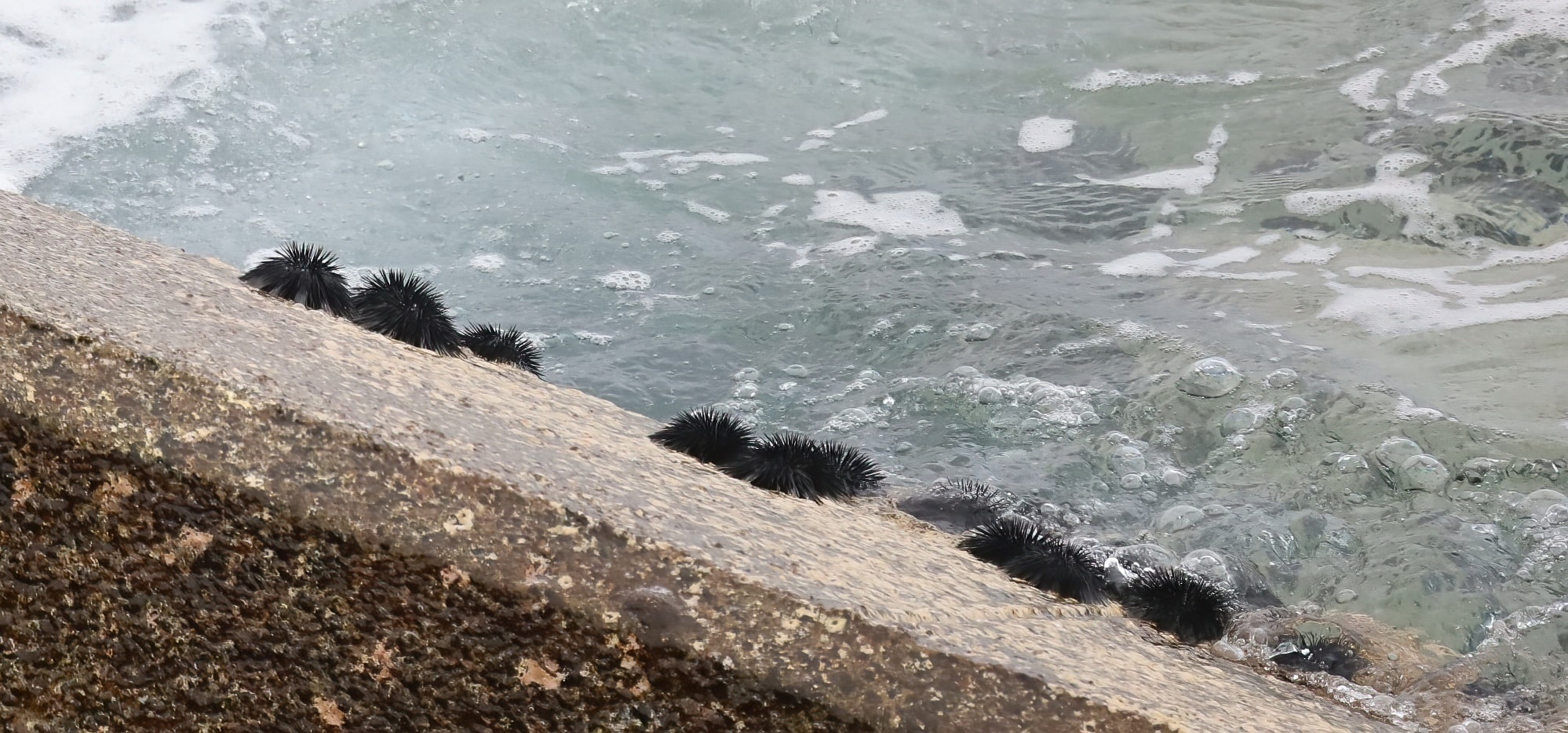
Arbacia lixula
(Tenerife, Costa Adeje) |
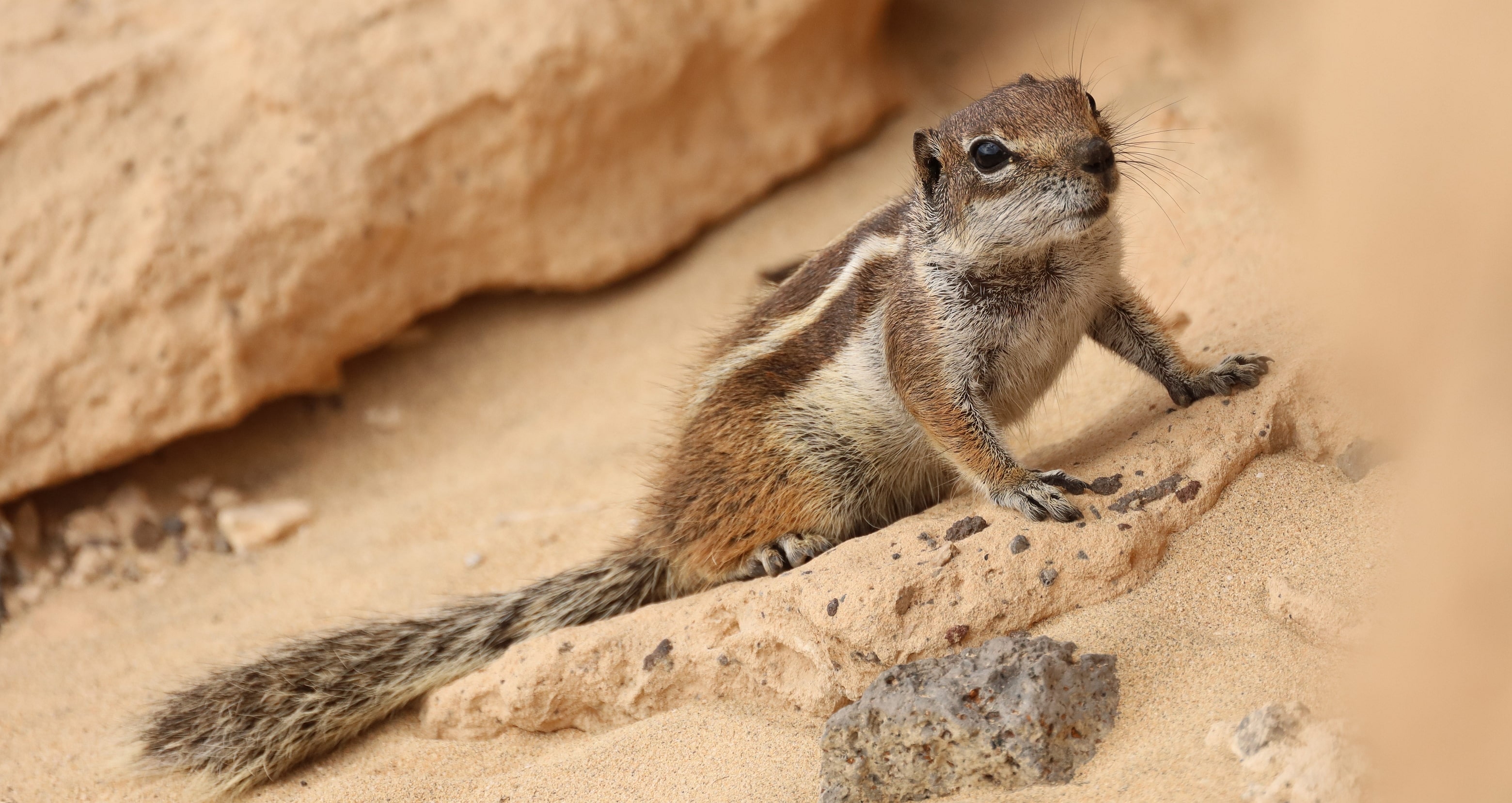
Atlantoxerus getulus -  Barbary Ground Squirrel
Barbary Ground Squirrel 
![]() ardilla moruna
ardilla moruna  berber csíkosmókus
berber csíkosmókus
(Fuerteventura, Costa Calma, Laguna de Sotavento)
● found in many places, mostly in small families living in cavities of cliffs, rock walls
● a curious but very cautious rodent, feeds on seeds and fruits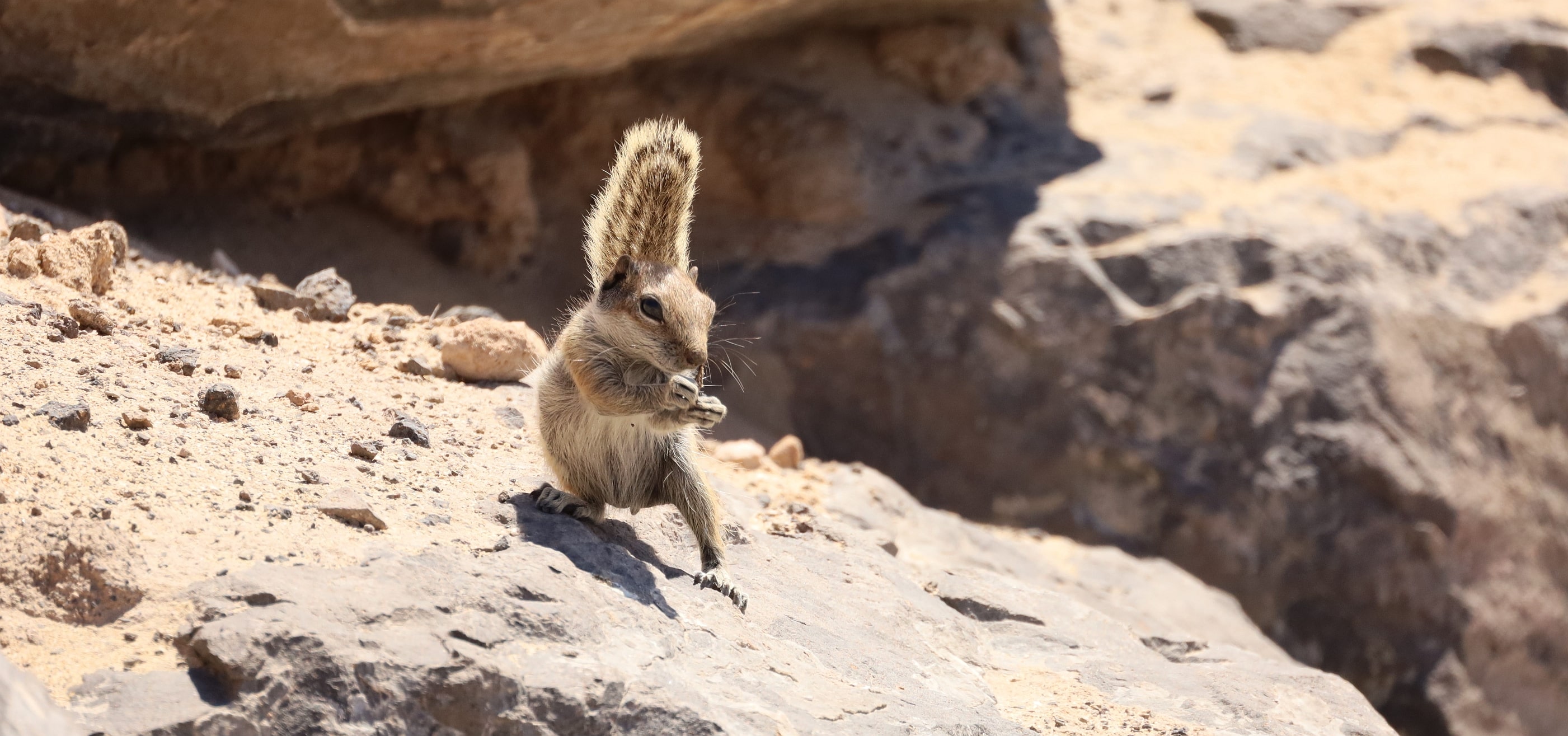
● introduced a pair as pets from NW-Africa to Fuerteventura in 1965, invasive in most islands of the archipelago today, in large numbers they can affect negatively the spread of some plants (Medina 2018)
● sometimes uses its tail as a shade against the strong sun ➤
● some of them are half-tamed around popular beaches
● the most horrifying moments of a staring contest with the landlord of the beach (he won):
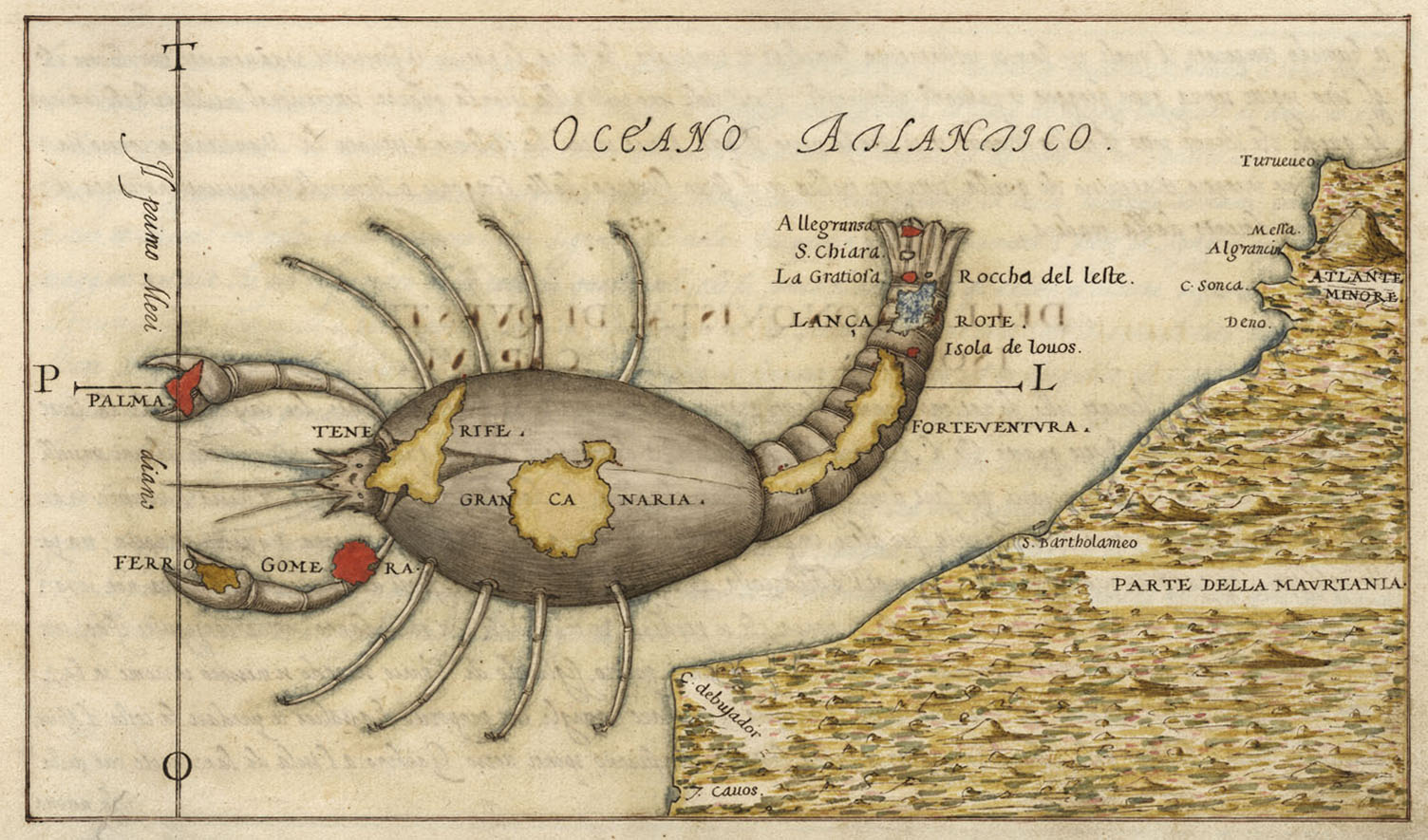
Leonardo Torriani (1590)
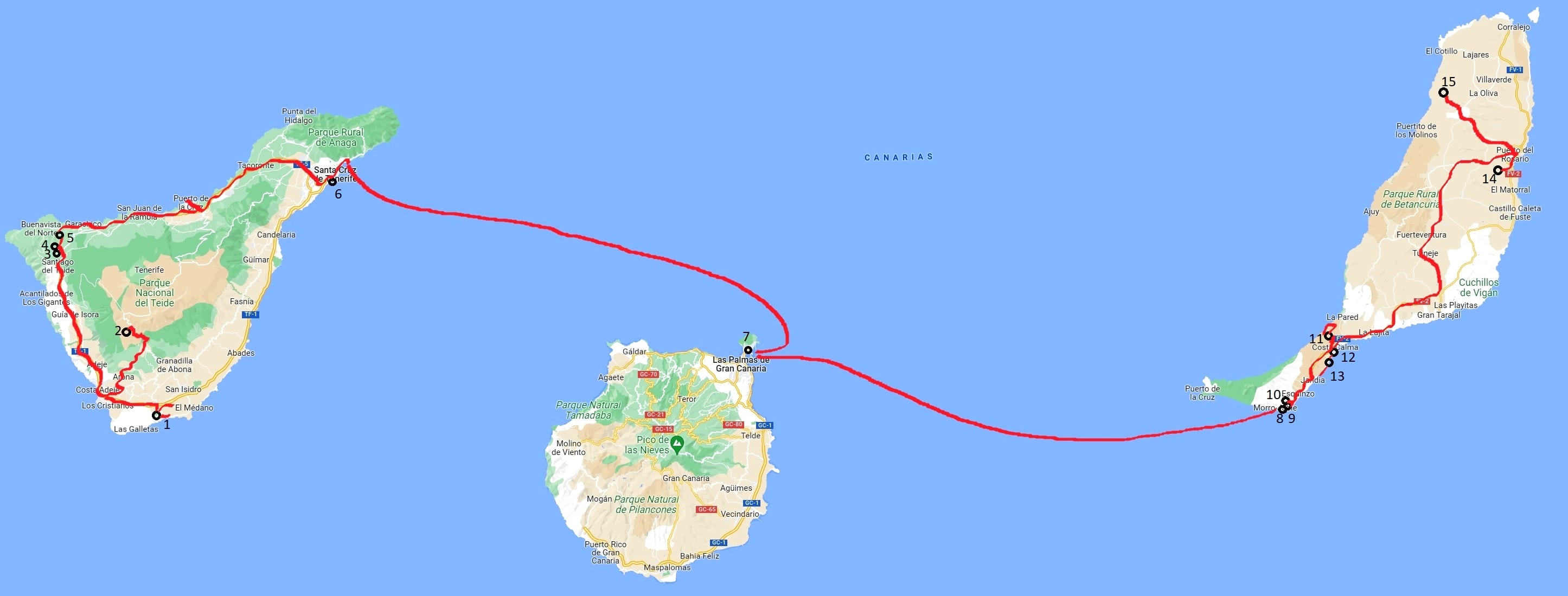
1. Barranco del Saltadero, Los Abrigos: an abandoned golf course
2. Las Lajas, Mount Teide: mountain pine forest and recreational park
3. Charcas de Erjos, Erjos: seasonal lakes with hedges and bushes
4. Monte del Agua, Erjos: hiking route in and above a laurel cloud forest (National Park)
5. PR-TF 53 trail, Erjos --> Los Silos: steeply descending and slippery hiking trail in a mountain forest and later in a gorge
6. Palmetum, Santa Cruz de Tenerife: a botanical garden with many exotic plants and some good views of the sea
7. Las Palmas de Gran Canaria: sea port
8. Playa del Matorral and Lighthouse, Morro Jable: a long sandy beach with a long stripe of halotolerant tidal scrubland
9. Avenida del Saladar, Morro Jable: lawn park lined with many palm trees and the abandoned lot of Stella Canaris Zoo
10. Jandía Golf Course, Morro Jable: fenced off and active golf course, but it is clearly visible from the street next to it
11. Jandía, Istmo de La Pared: semi-desert National Park with a windfarm and many hiking trails
12. El Palmeral, Costa Calma: an unkempt city park
13. Laguna de Sotavento, Costa Calma: a very long sandy/rocky beach with a wide and desolate area of tidal scrubland
14. Barranco de Río Cabras: bone-dry semi-desert with a canyon, a nearby landfill lures many intersting birds here
15. Llanos de Tindaya: semi-desert plains with some oases and ruins

1. Barranco del Saltadero |
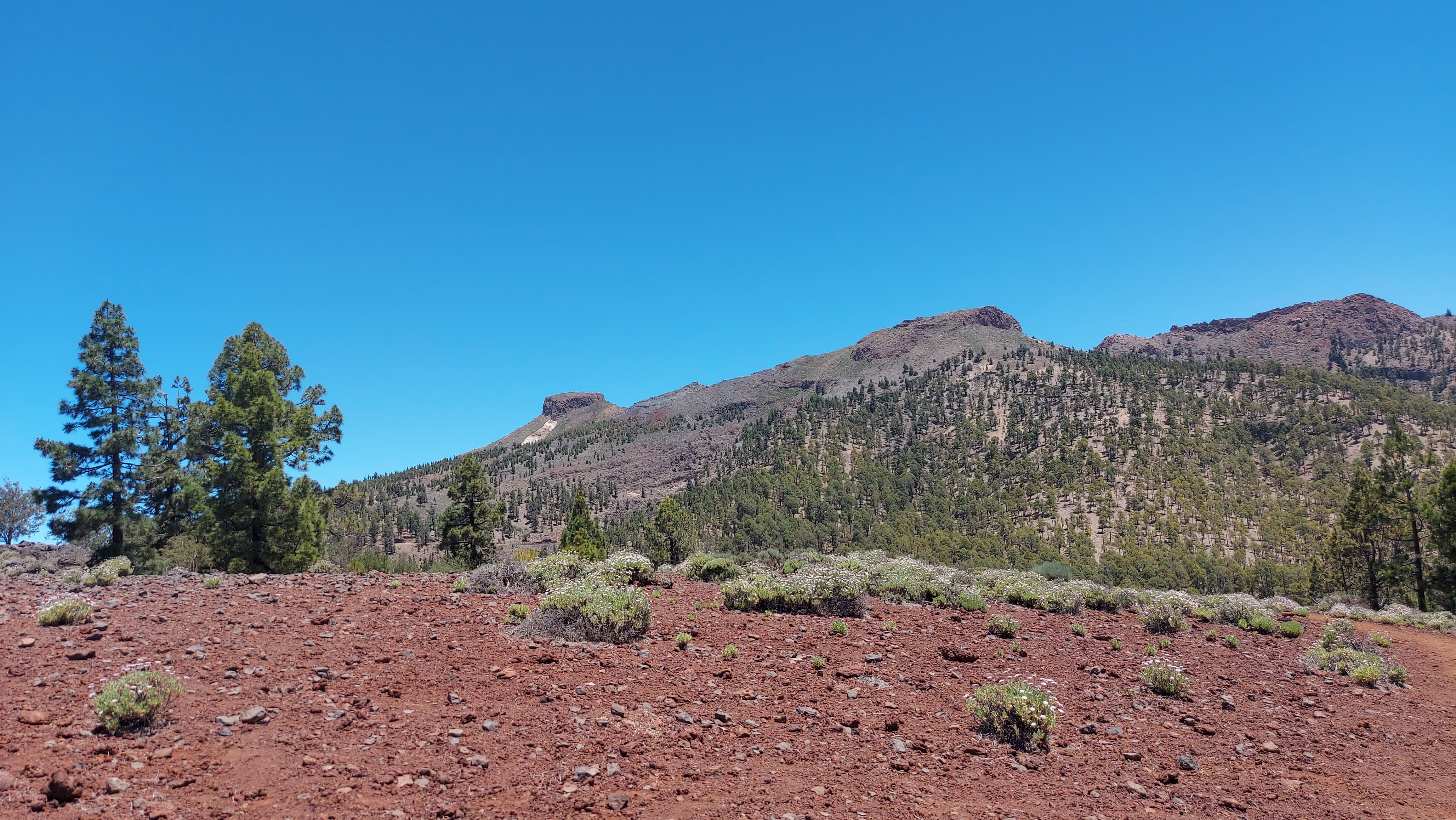
2. Las Lajas |
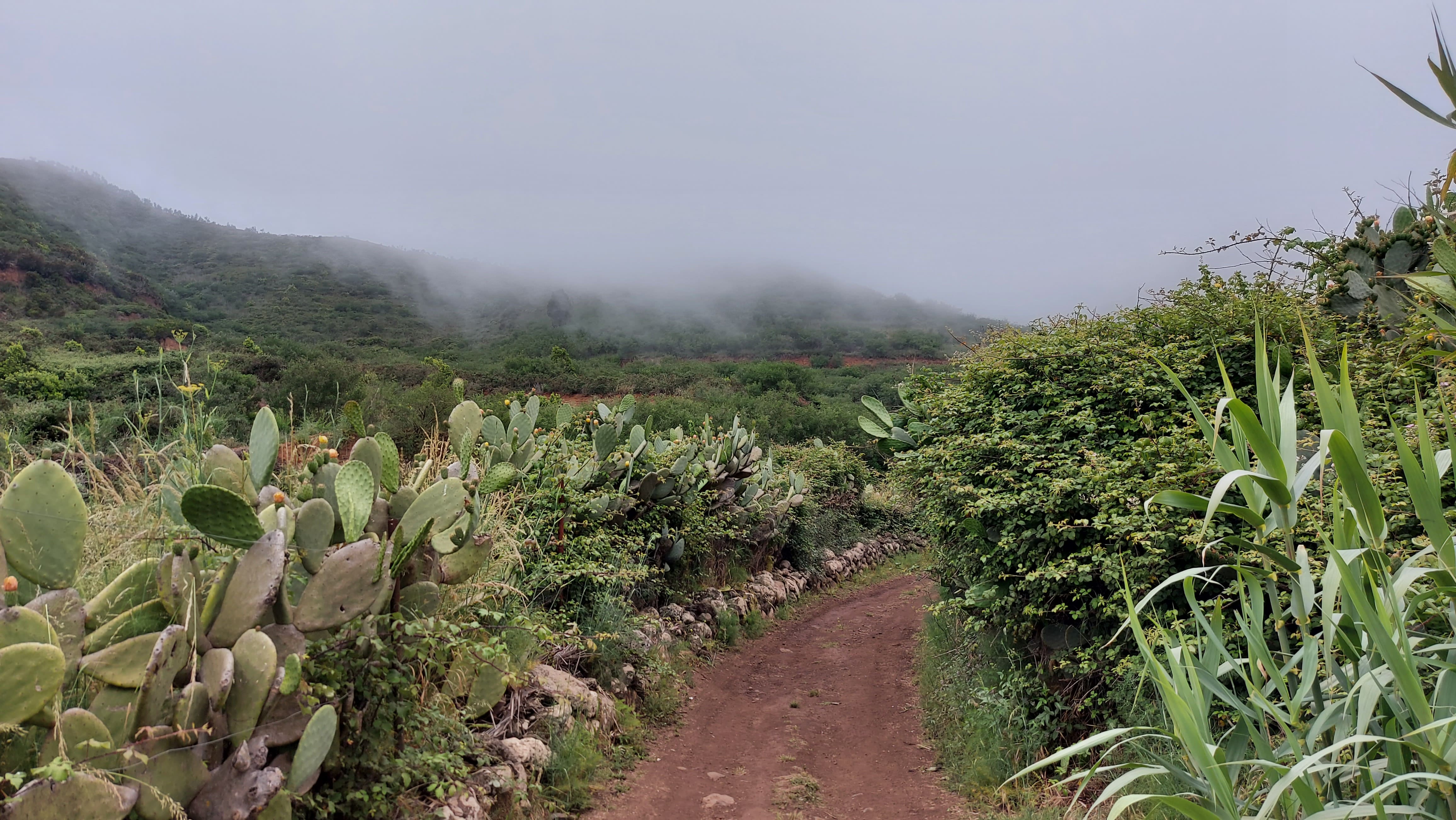
3. Charcas de Erjos |

4. Monte del Agua |
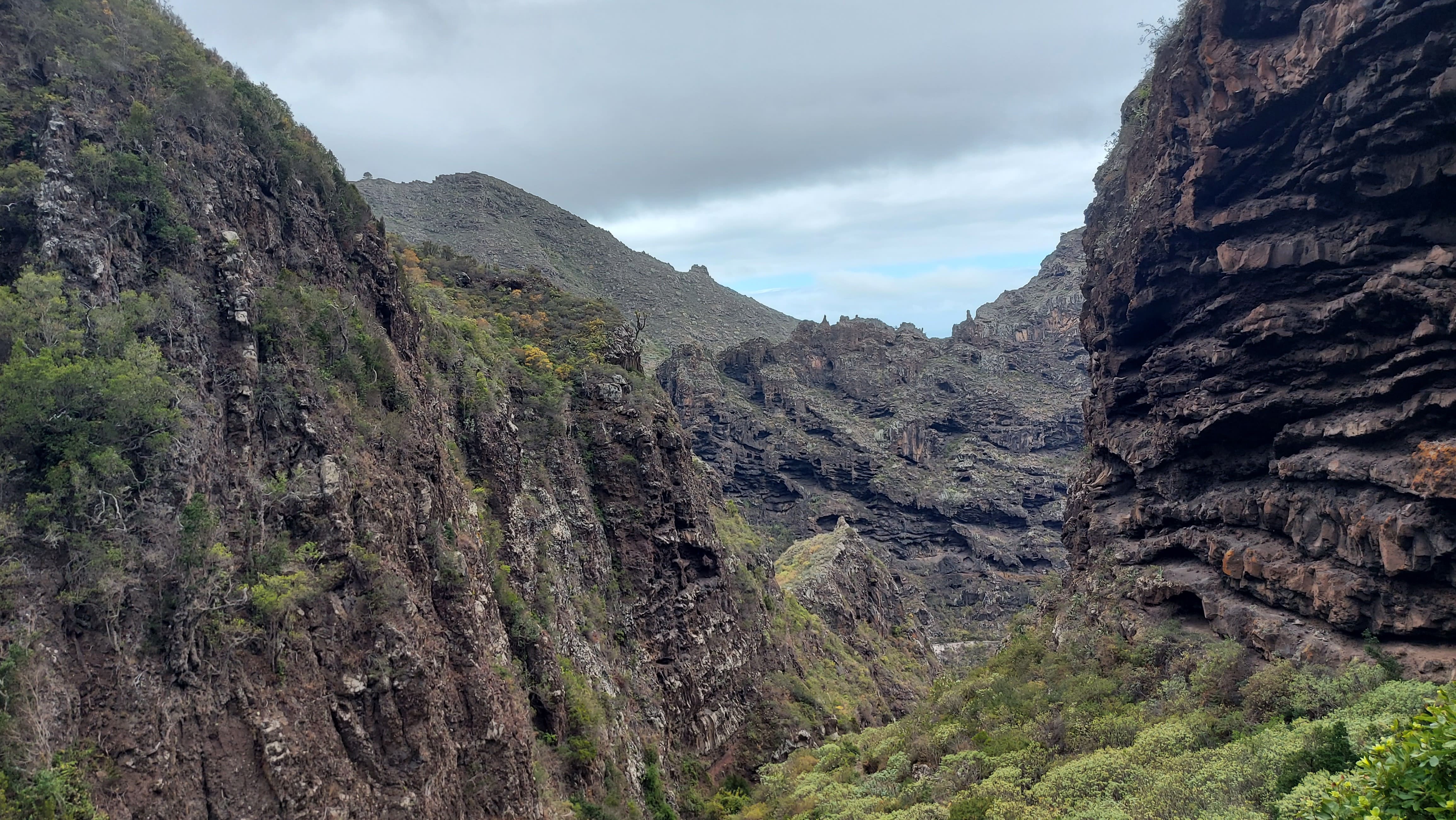
5. PR-TF 53 |
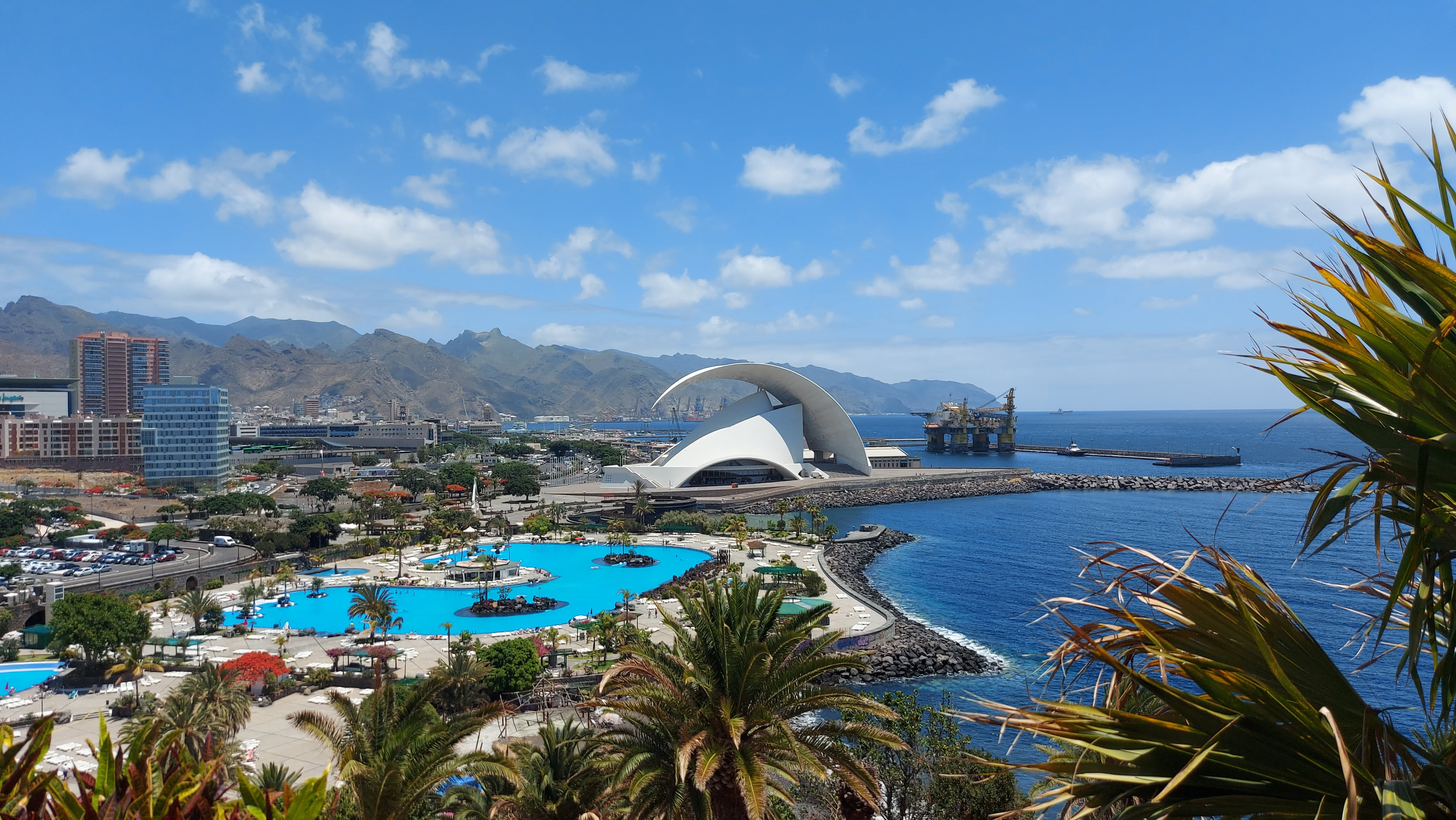
6. Palmetum |
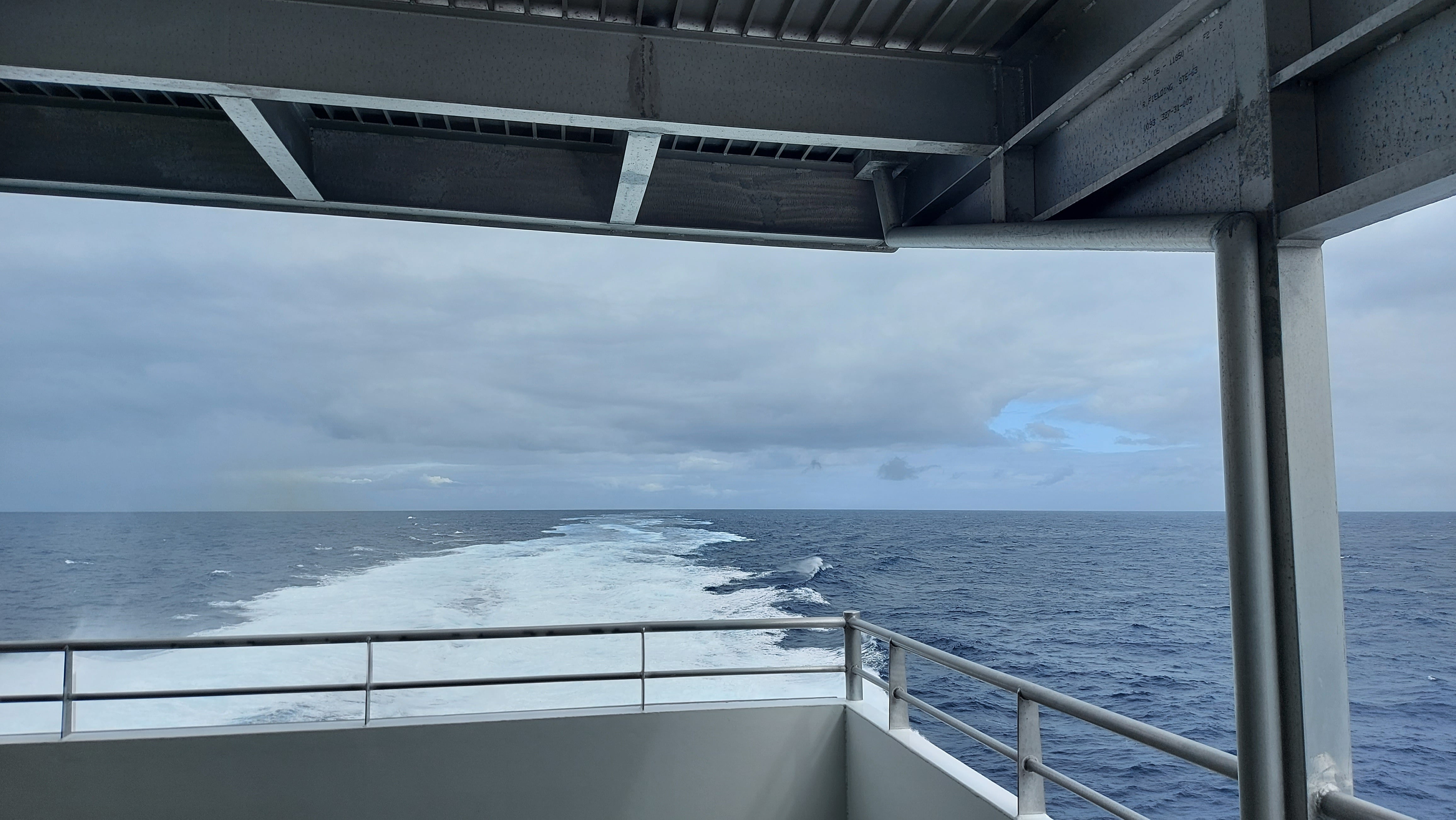
7. ocean ferry |
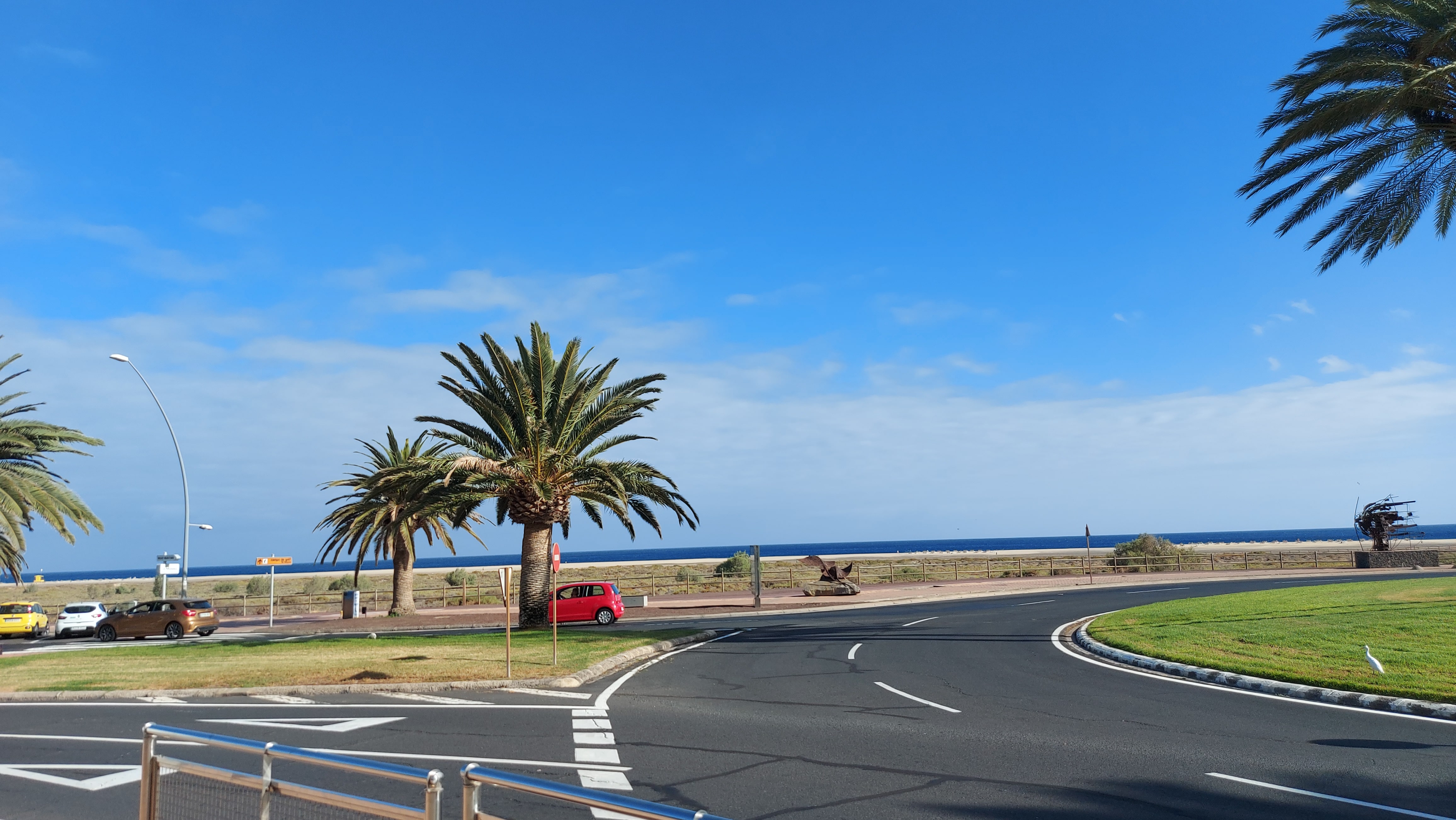
8. Playa del Matorral |
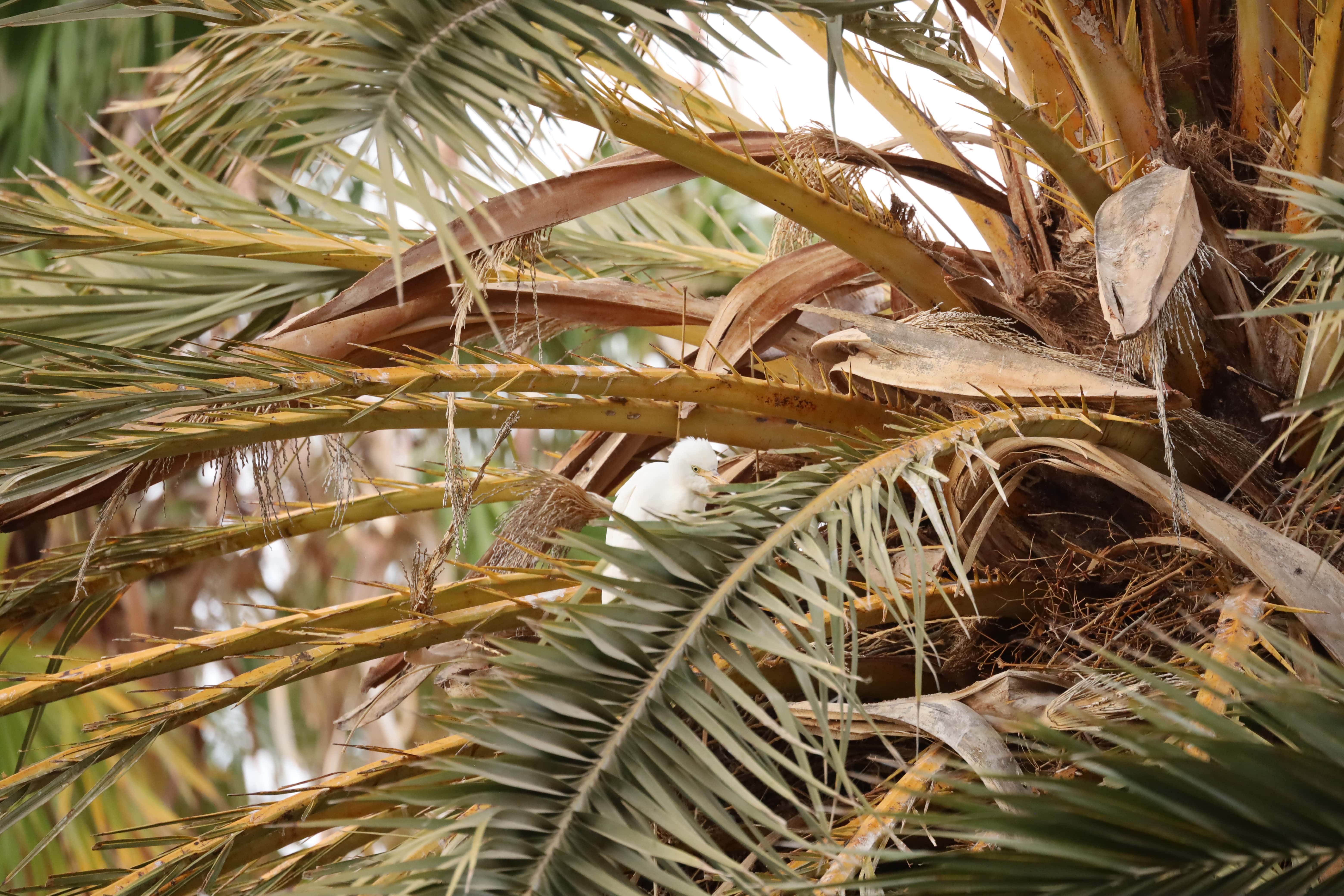
9. Avenida del Saladar |

10. Jandía Golf |
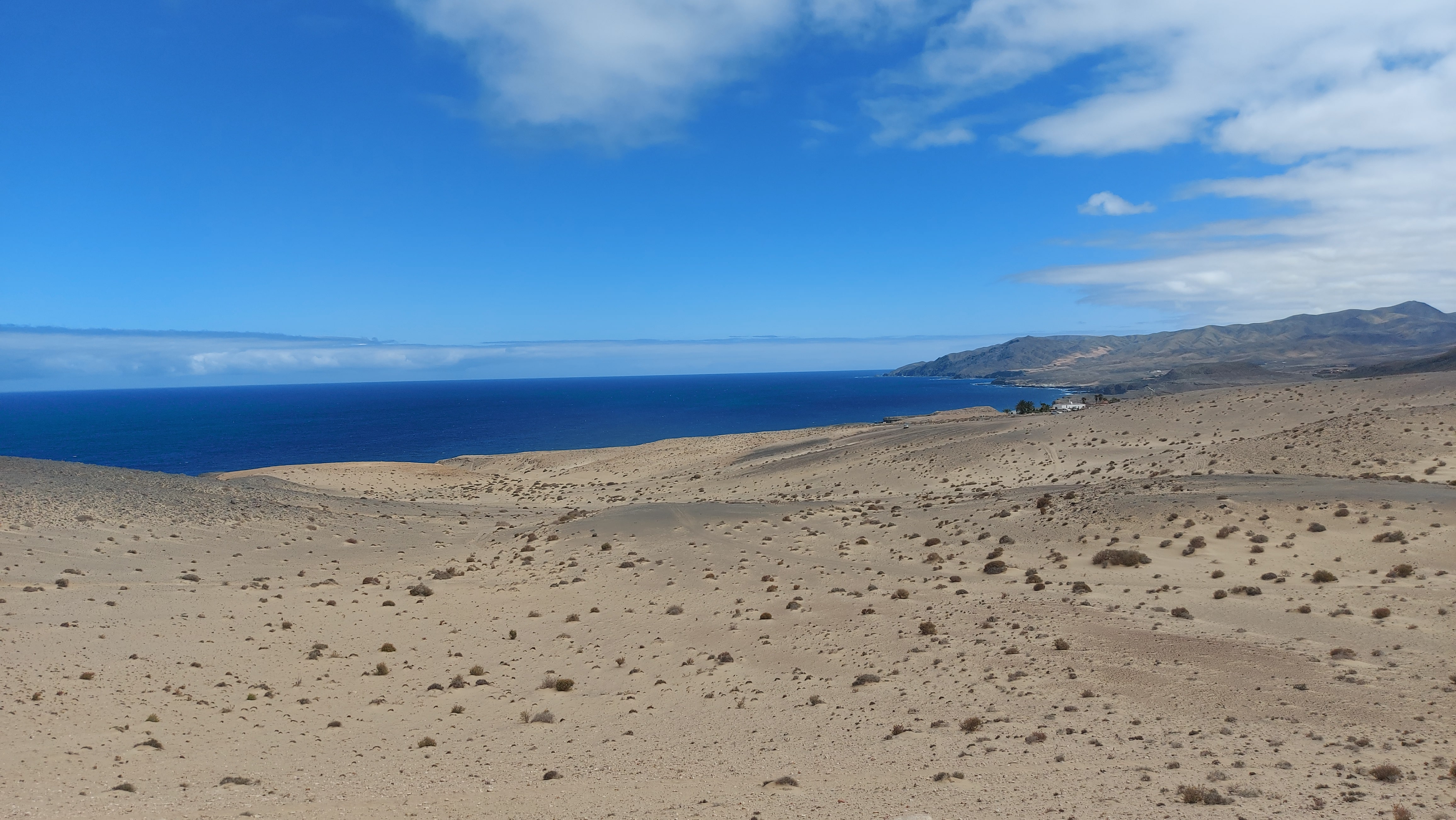
11. Istmo de La Pared, GR131 |
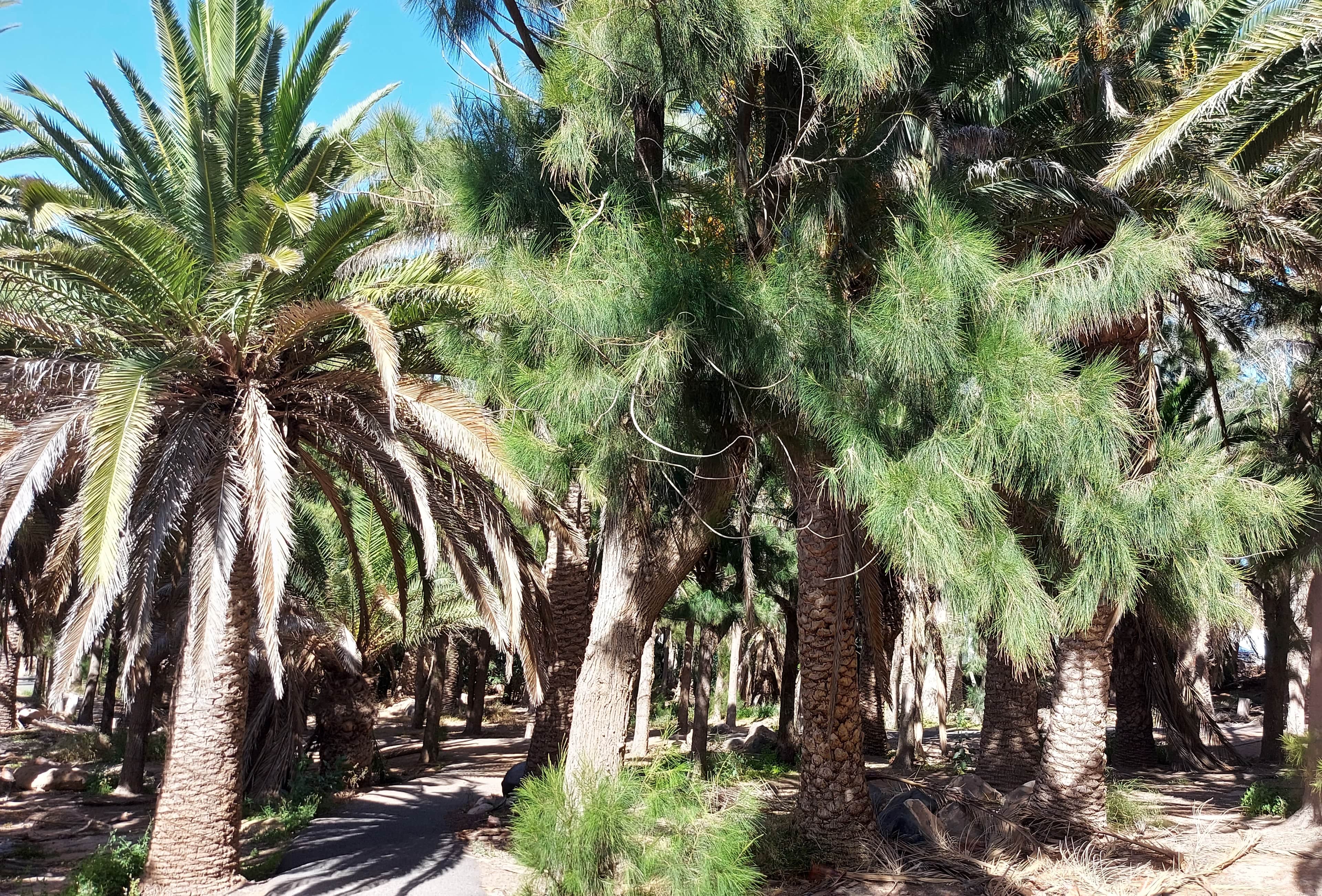
12. El Palmeral |
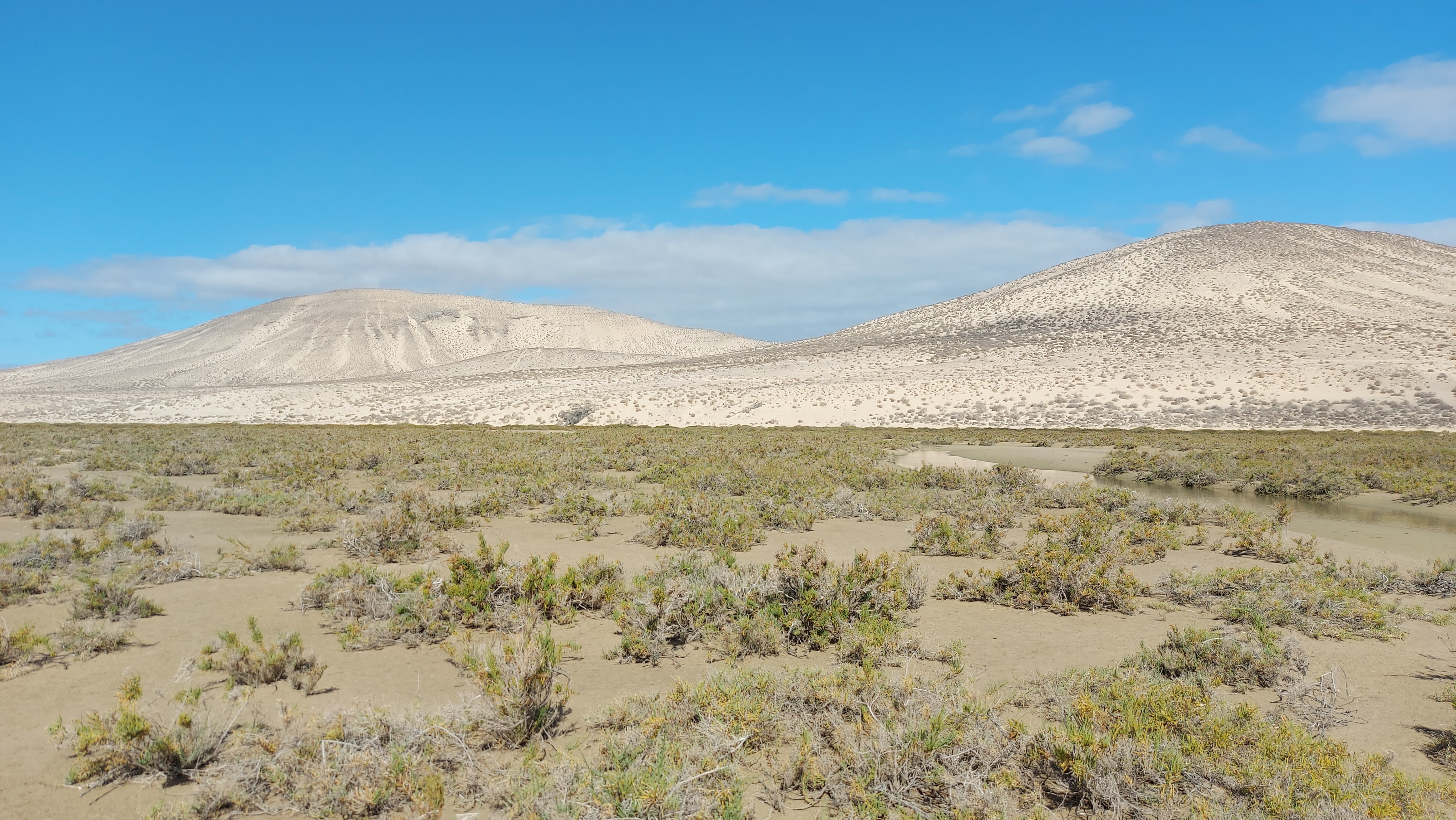
13. Laguna de Sotavento |
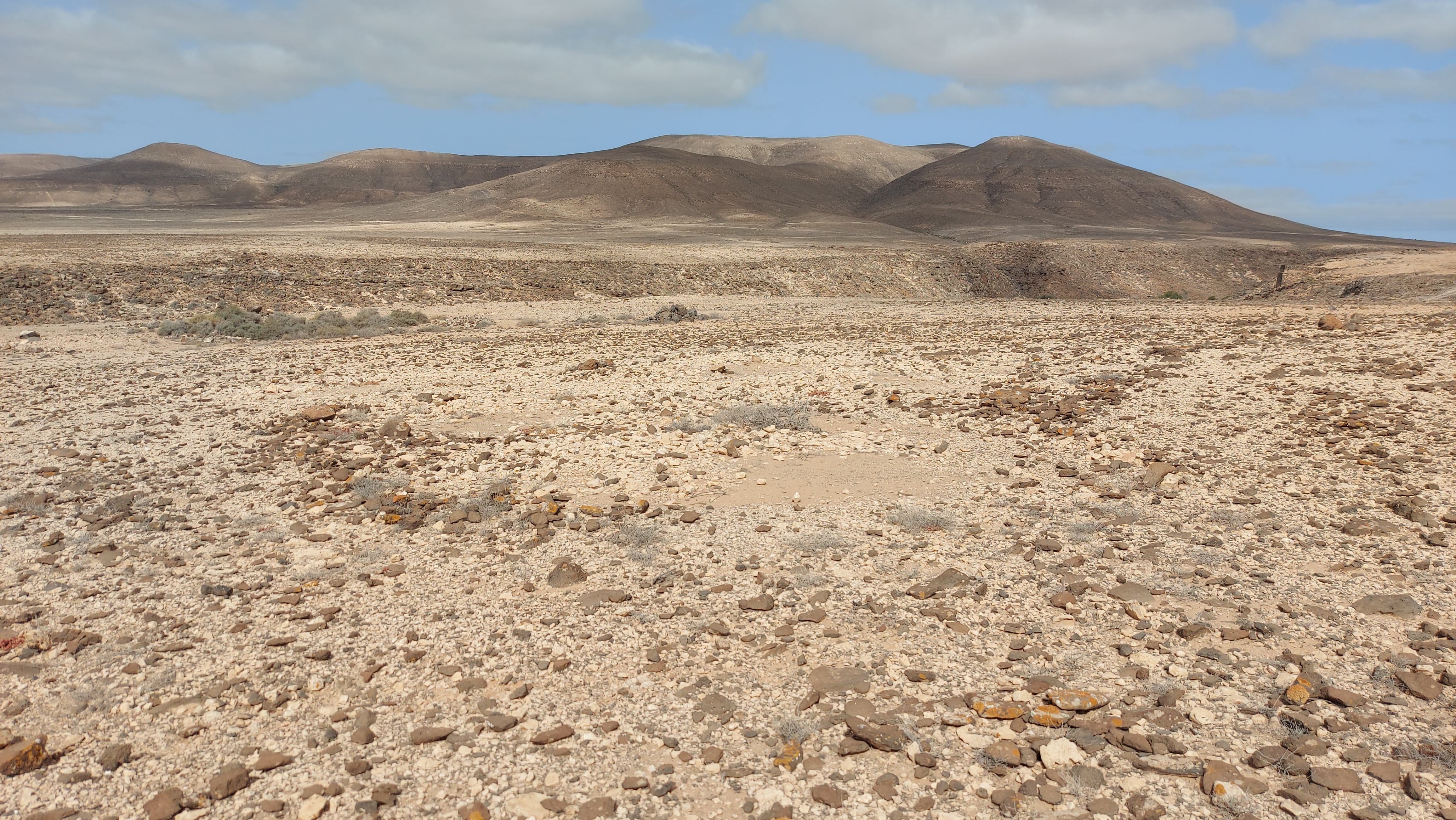
14. Barranco de Río Cabras |
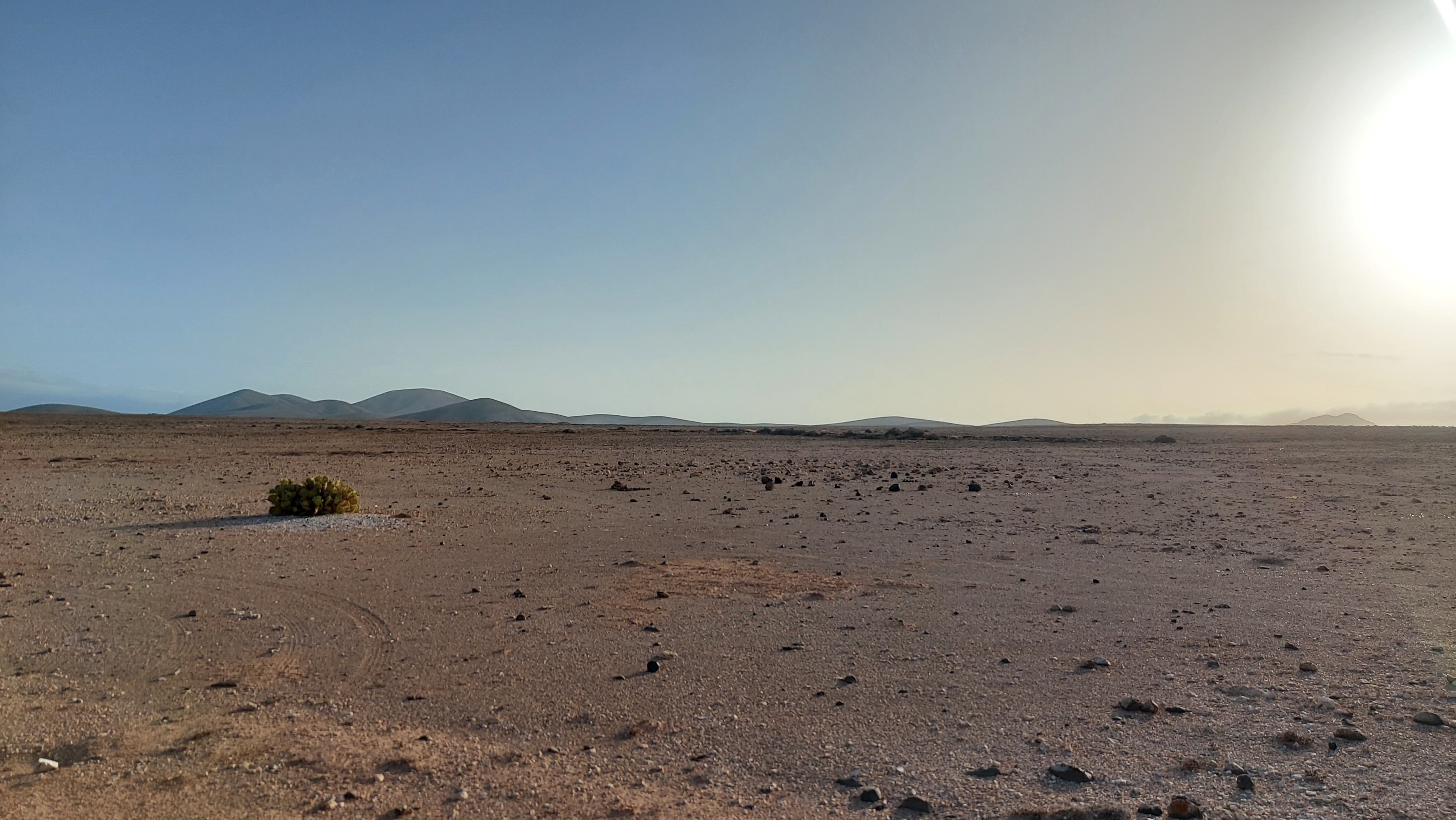
15. Llanos de Tindaya |
Overall bird stats:
● Canary Islands species list (June 27 - July 7, 2022)
● a total of 57 bird species of category A were seen, plus 5 species of category C
● 19 new species and 21 new subspecies have been ticked on my WP list, mostly these birds have been discussed above
● species/sites and individuals/species ratios were low everywhere, but habitats are very diverse with also very diverse species
● map pointers of the observations are accurate
Comments:
● most places have been overrun by tourism, but you can easily find untouched sites
● on the other hand, tourism makes it possible to easily plan ahead a new cheap room for each night during a trip like this
● weather was mostly constant: sunny with extreme UV (!) but always windy, so temperature rarely exceeded 30°C
● it is problematic to record quality audio and video files due to the constant strong wind (use some sort of windproof furry mic and a monopod instead)
● there were some rain in the mountains of Erjos and once a quick windy shover in Istmo de La Pared, nothing else
● winter season is usually better because of the breeding bustards and maybe other birds too
● unfortunately there was no time to visit the island of Gran Canaria
● it would also have been important to visit Punta de Teno, Roque Garachico, Tigaiga Reserve, Anaga Rural Park, Punto Jandía, Betancuria, Las Salinas, Los Molinos Reservoir, El Cotillo, Dunes of Corralejo, Lanzarote and the other small islands, and many other places... maybe another day...
Technical info:
● Wildlife pictures were taken with Canon EOS RP and Canon RF 800mm F11 IS STM.
● Many pictures were somewhat sharpened afterwards (Topaz Labs AI), cropping images and minor additional optimizations were made by IrfanvView and GIMP, and finally file sizes were reduced by the free online COMPRESS JPEG.
● Foggy, misty photos of laurel pigeons were cleared with GIMP and Irfanview.
● Plants were identified by the famous and infamous Pl@ntNet.org online platform from cropped images. Only high percentage results have been accepted, but here can be problems, for sure...
● Antique map of Canary Islands: Leonardo Torriani (1590): Alla Maesta del Re Catolico, descrittione et historia del regno de l'isole Canarie gia dette le Fortvnate con il parere delle loro fortificationi Di Leonardo Torriani cremonese.
![]() Phoca.cz free flag icon bundle (16-12px) has been used at translation of names (source). Here, slightly adapted 13-10px dimensions and somewhat darkened versions were applied.
Phoca.cz free flag icon bundle (16-12px) has been used at translation of names (source). Here, slightly adapted 13-10px dimensions and somewhat darkened versions were applied.
![]() Spanish language audio content is based on the online Realistic Text-to-Speech AI converter (source), voice: "Dario".
Spanish language audio content is based on the online Realistic Text-to-Speech AI converter (source), voice: "Dario".
Any comments or suggestions for corrections would be greatly appreciated.

